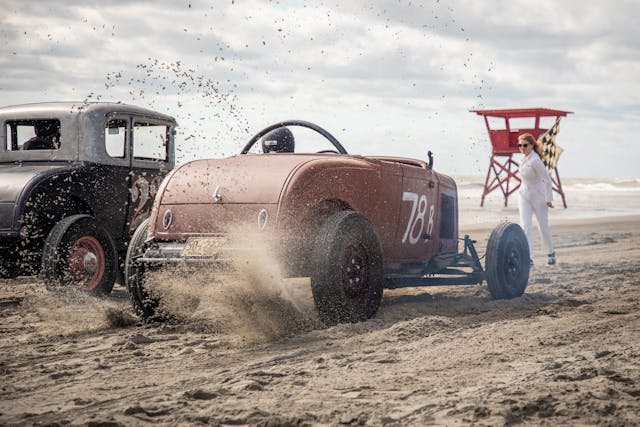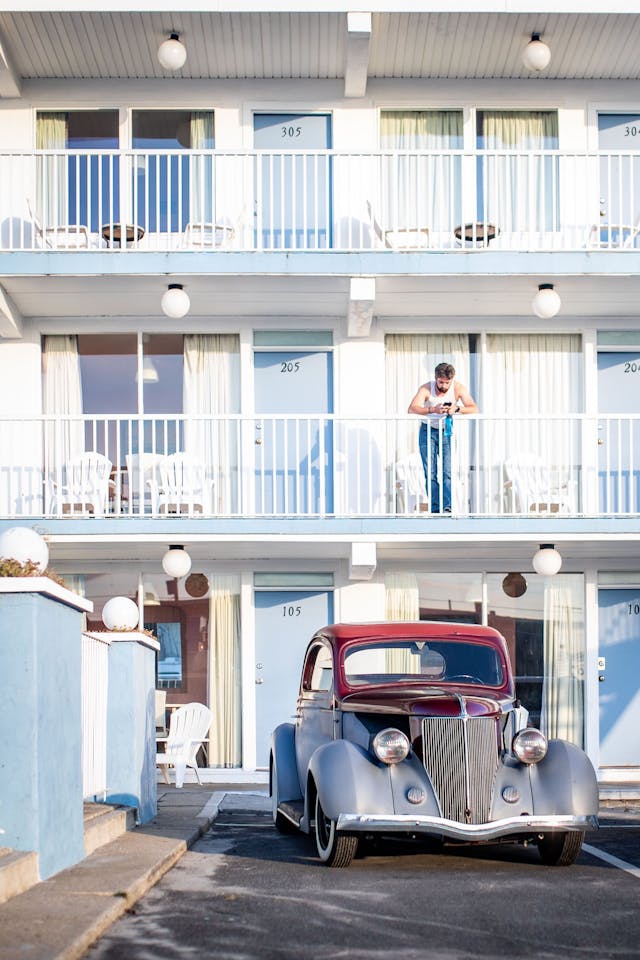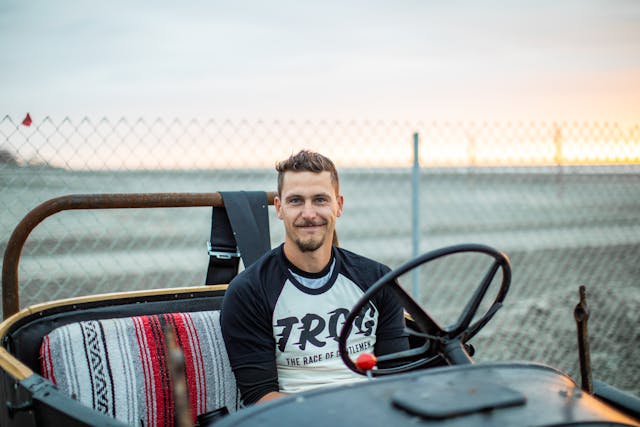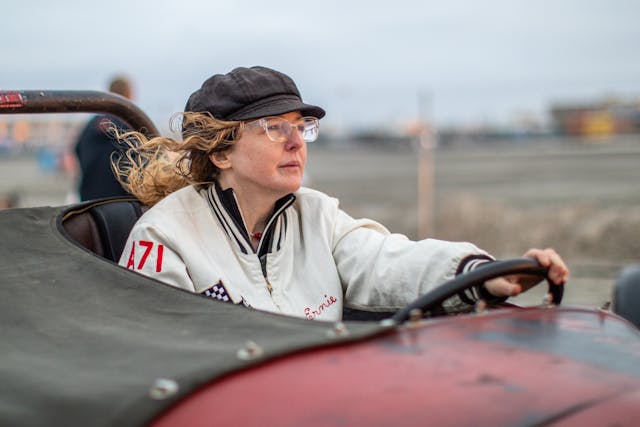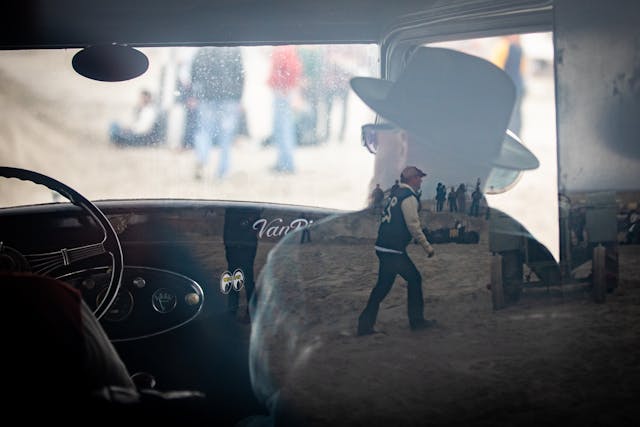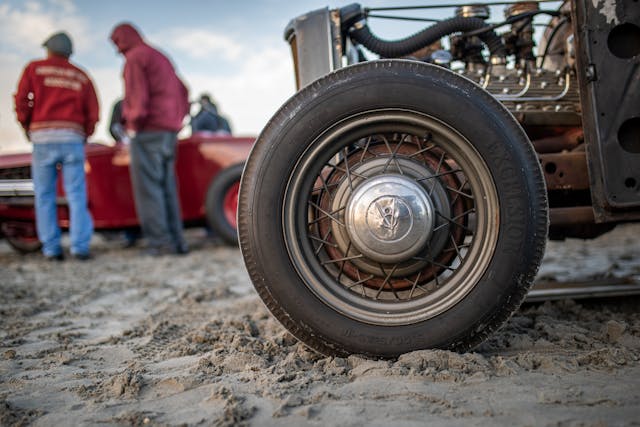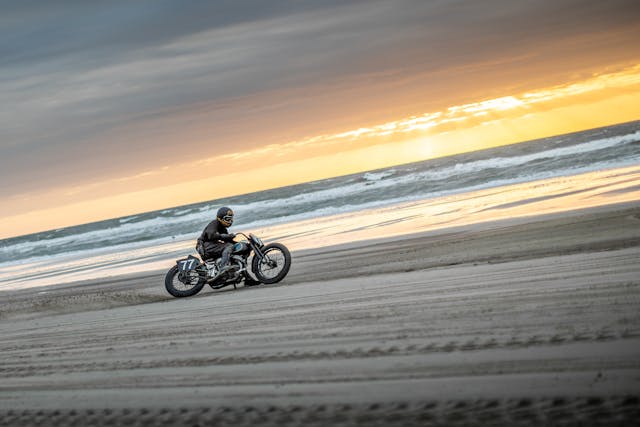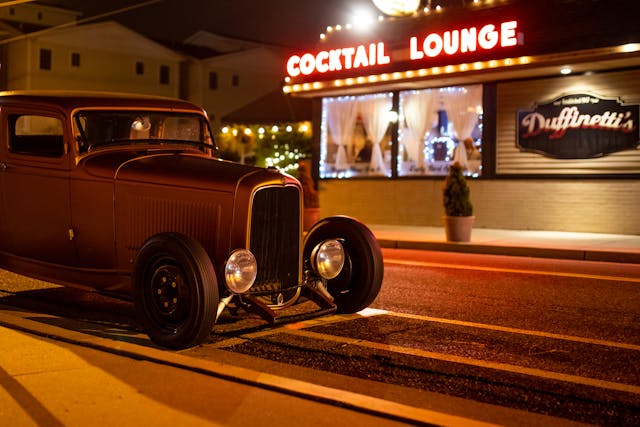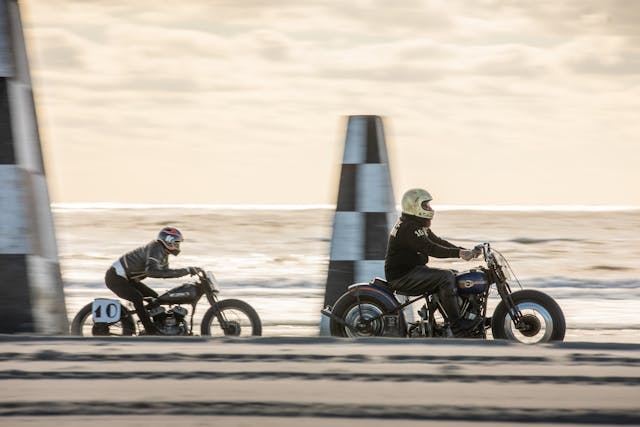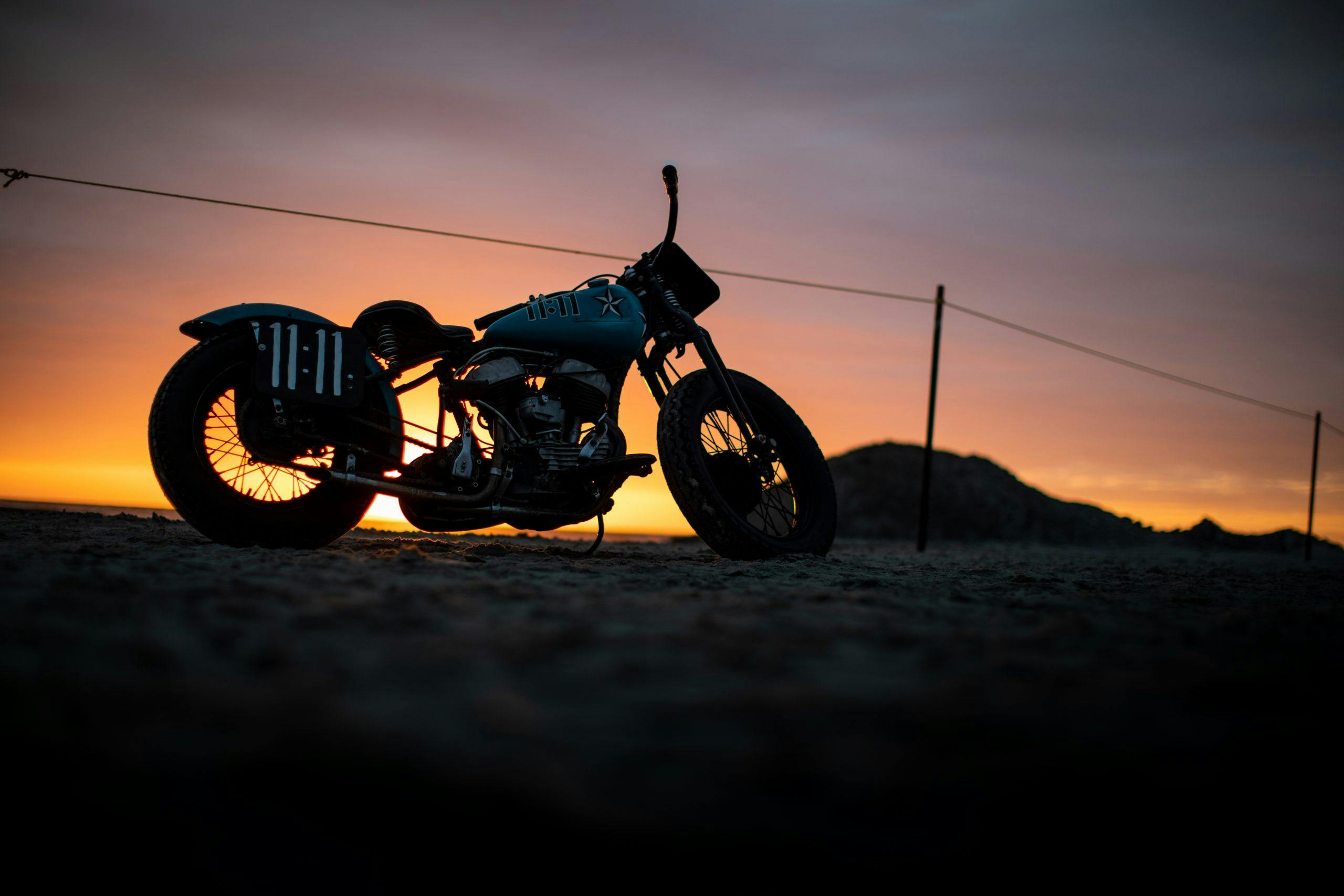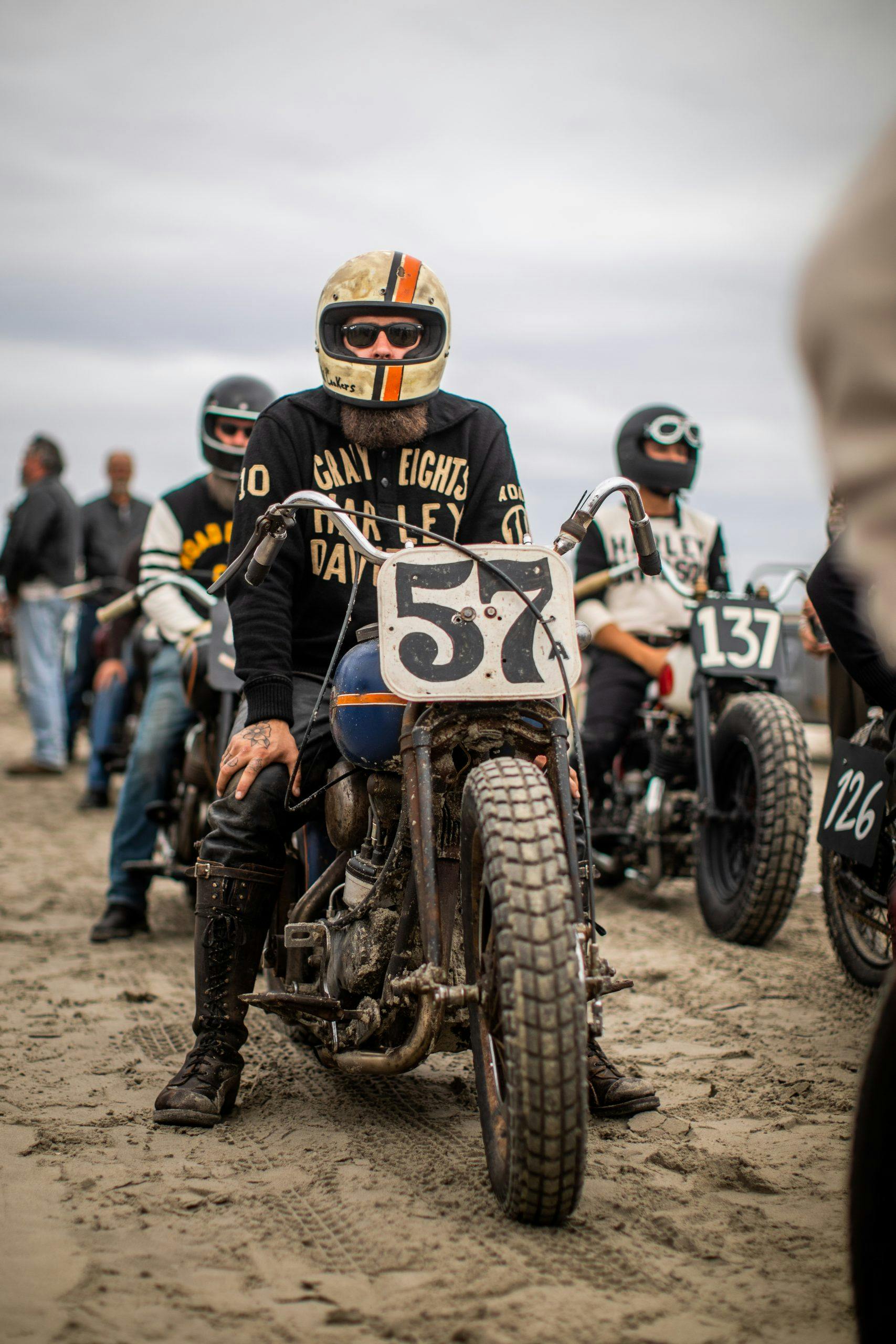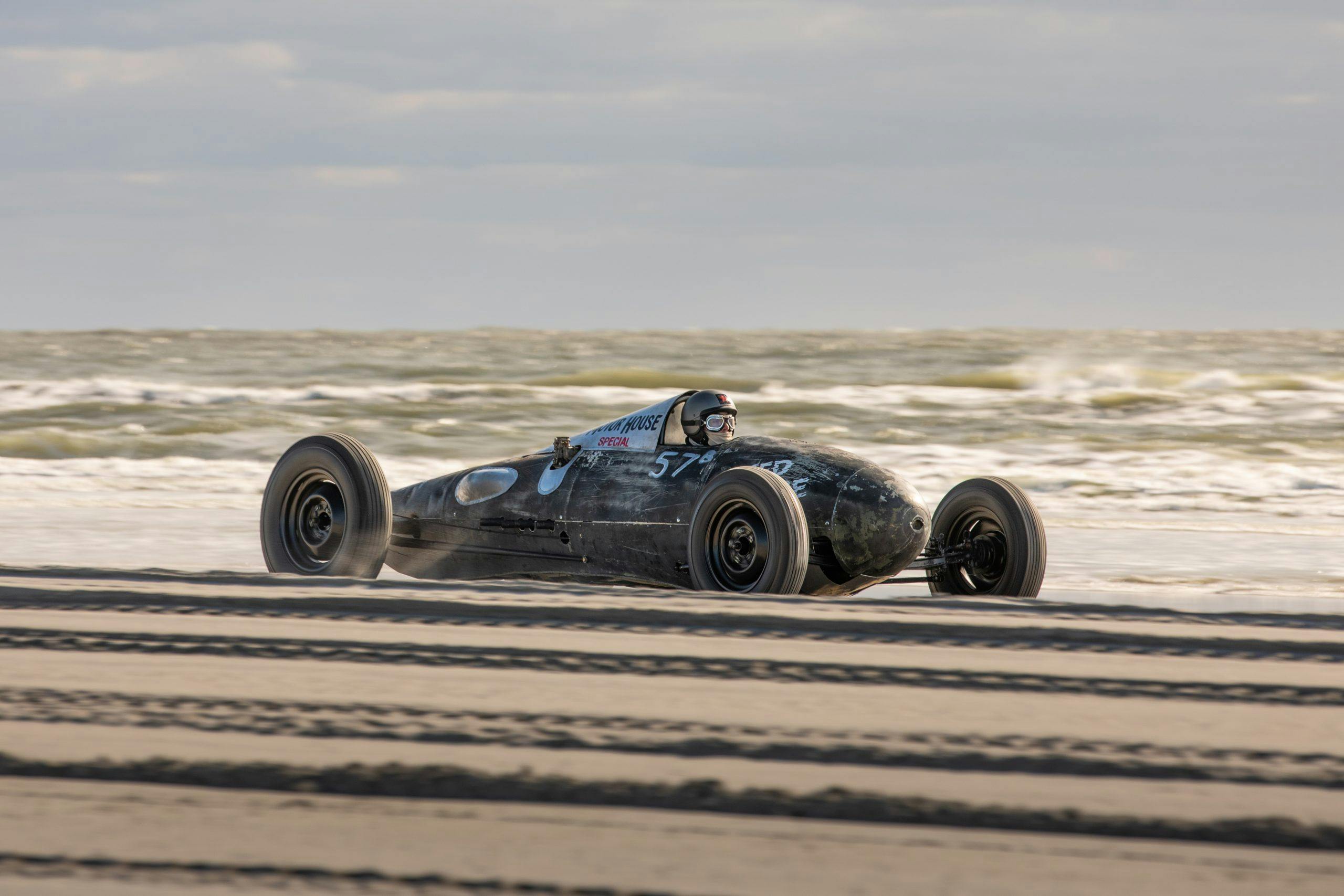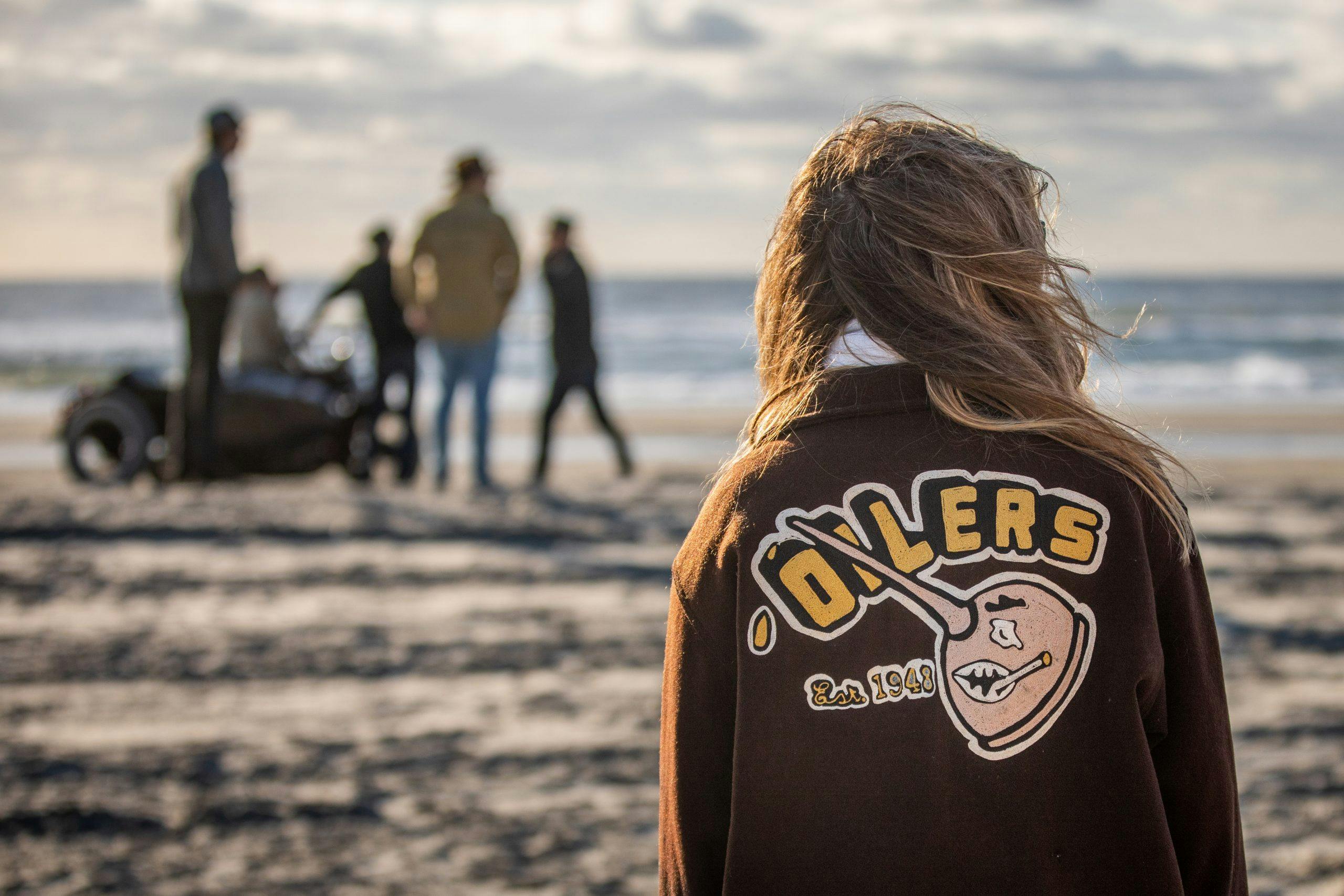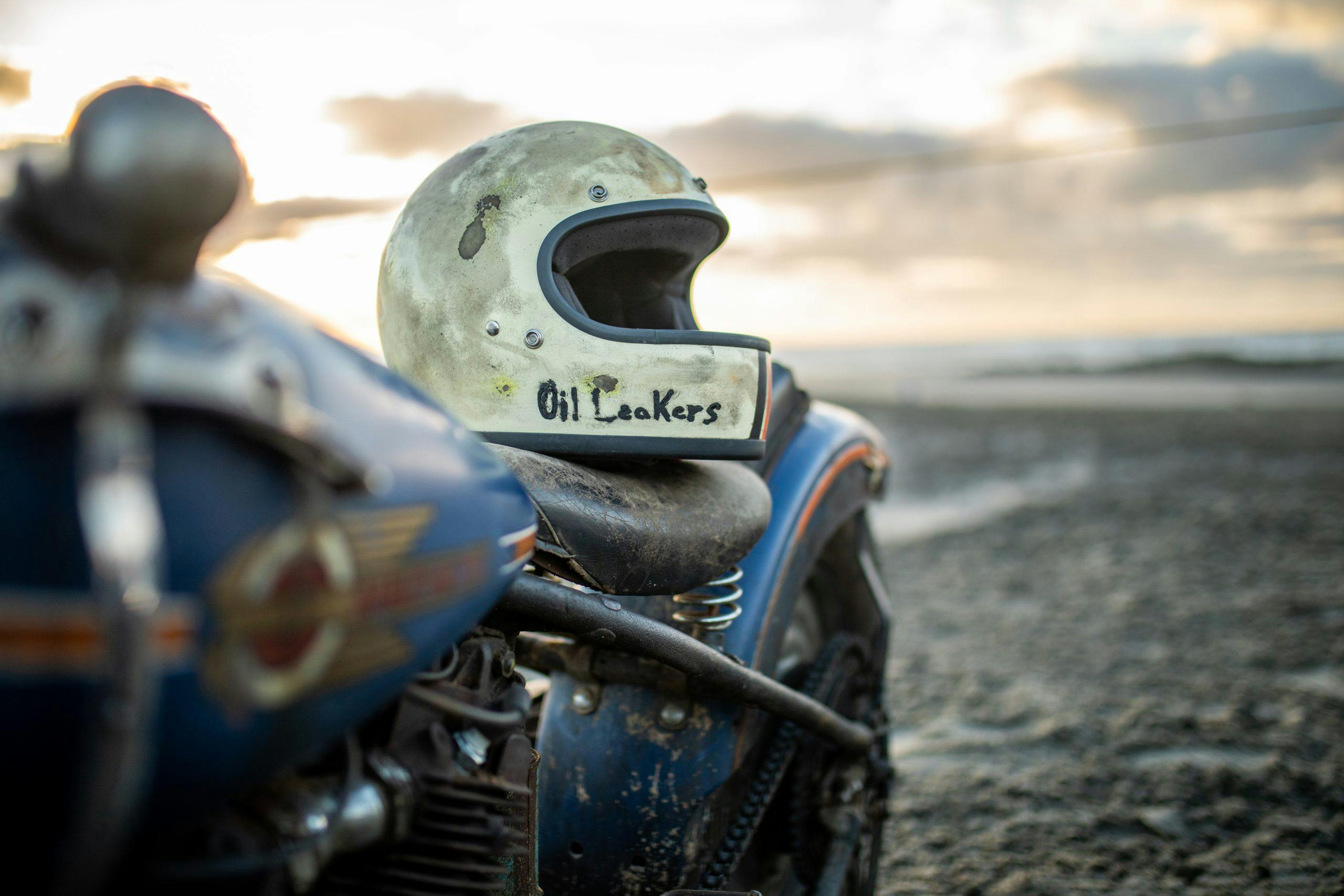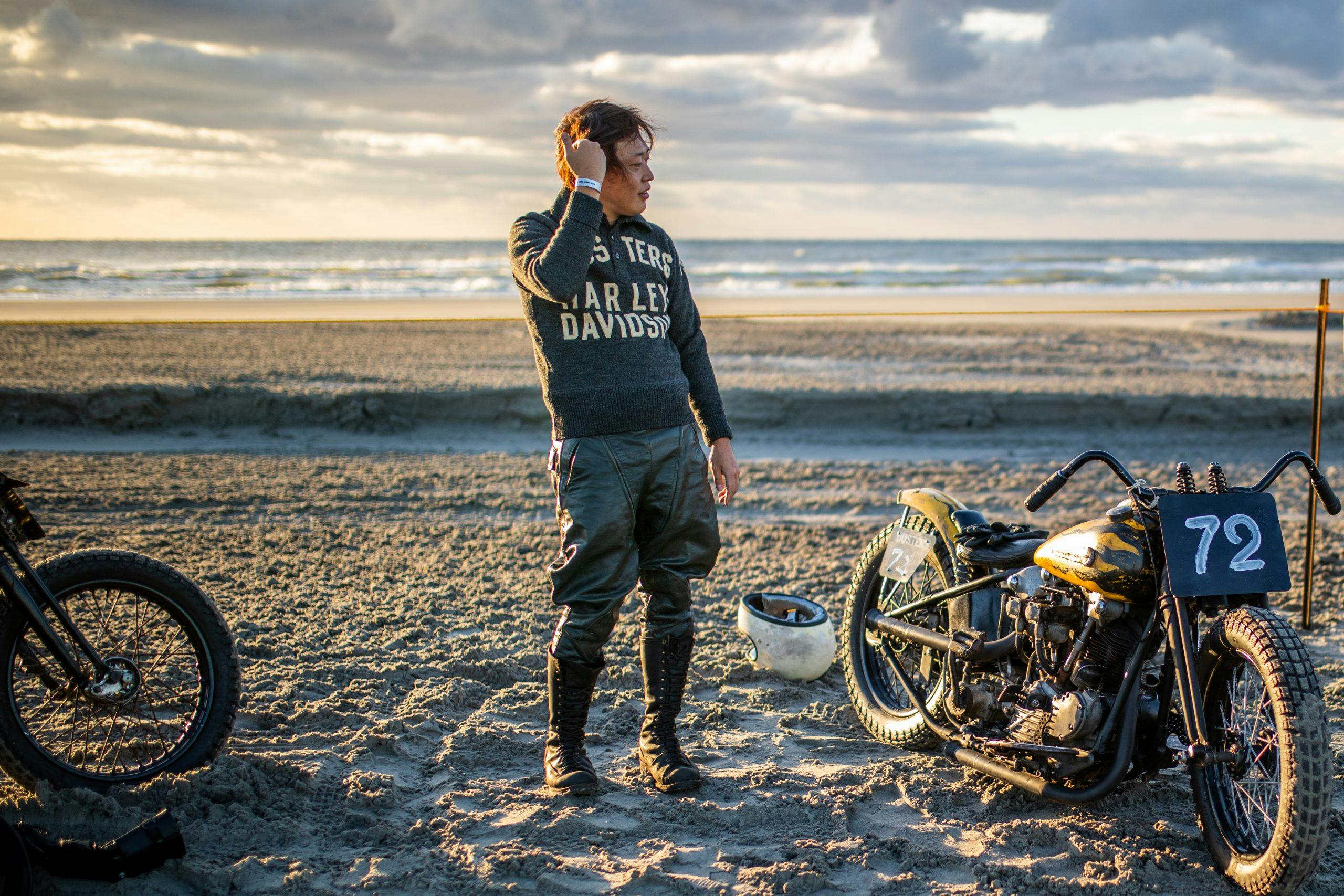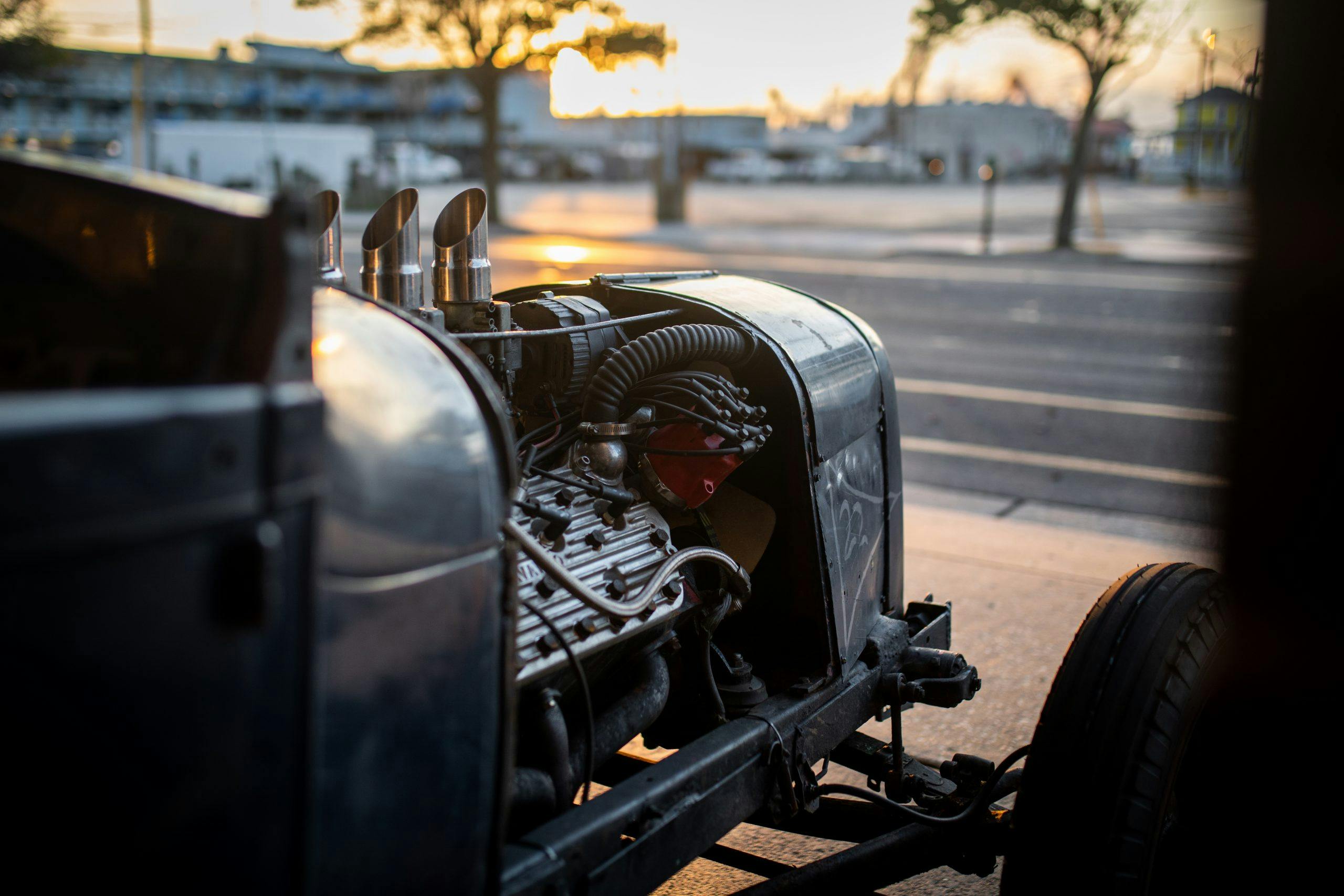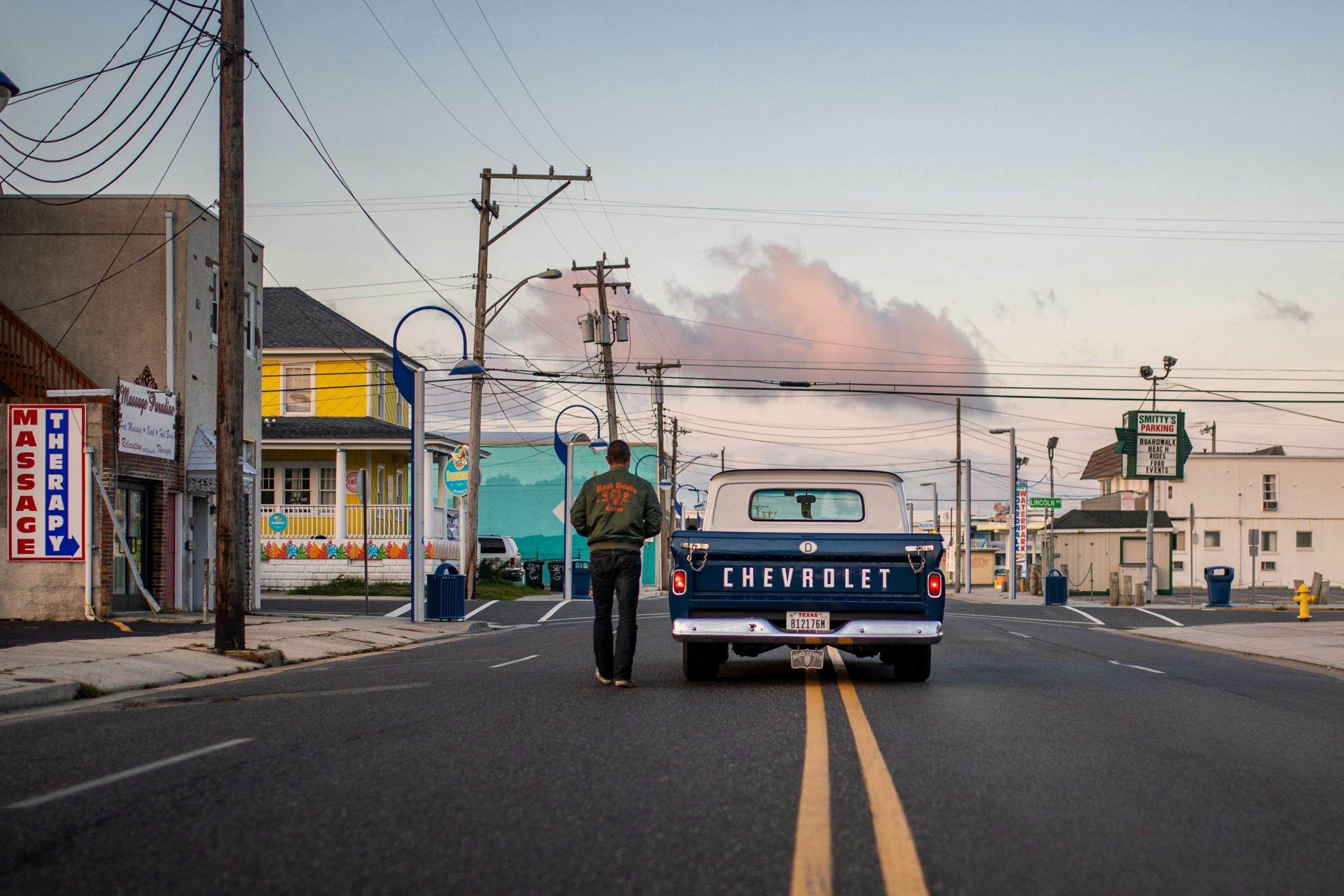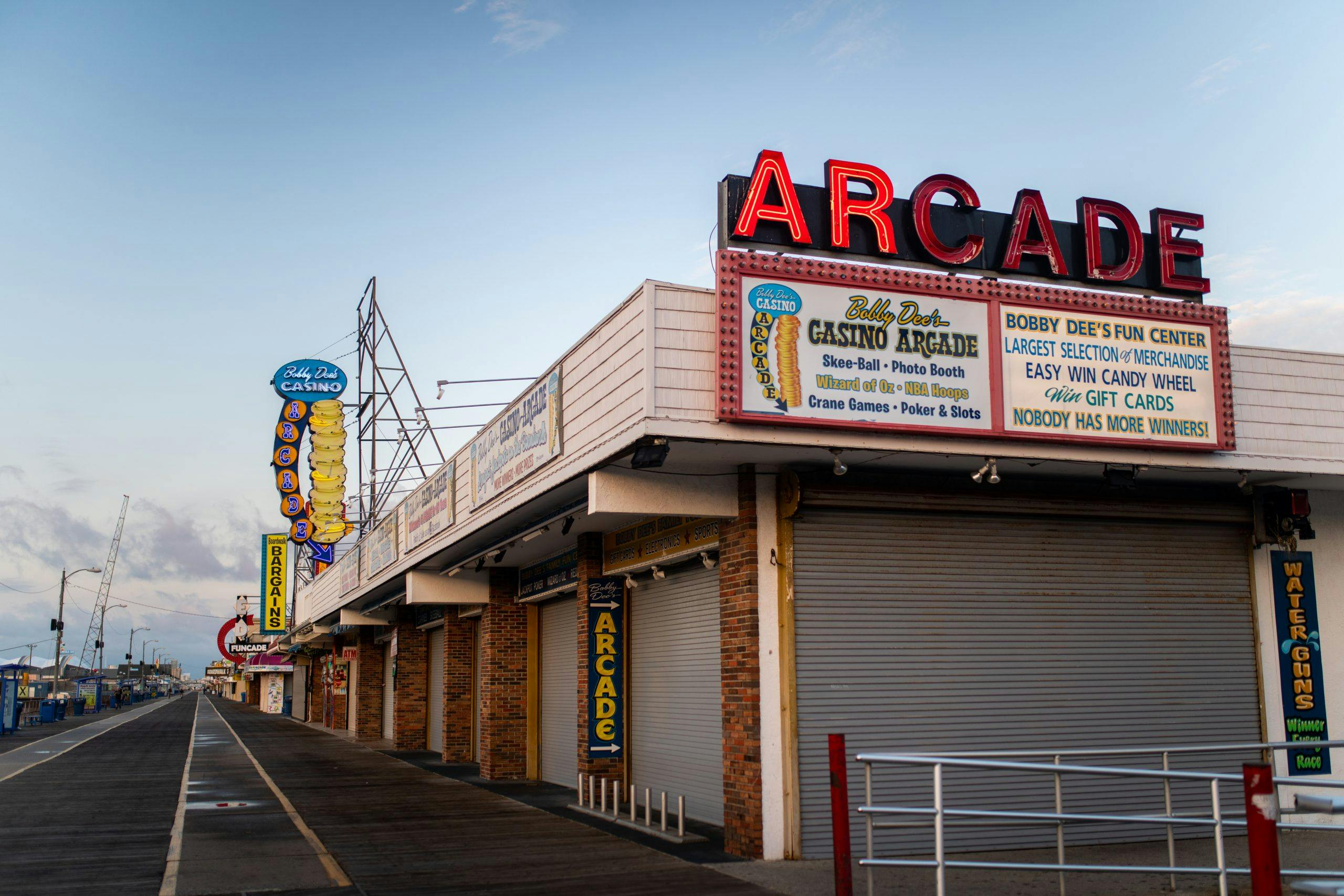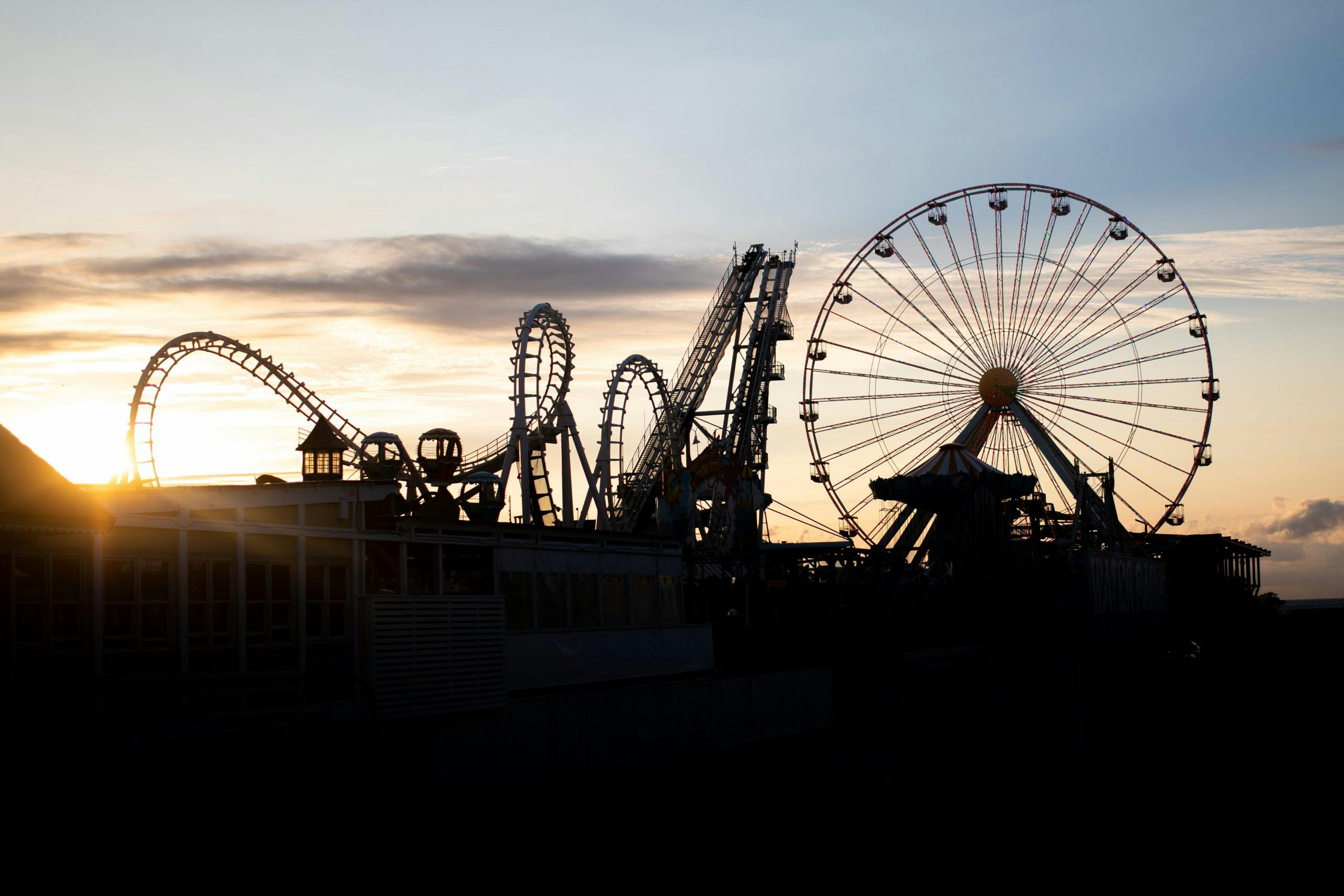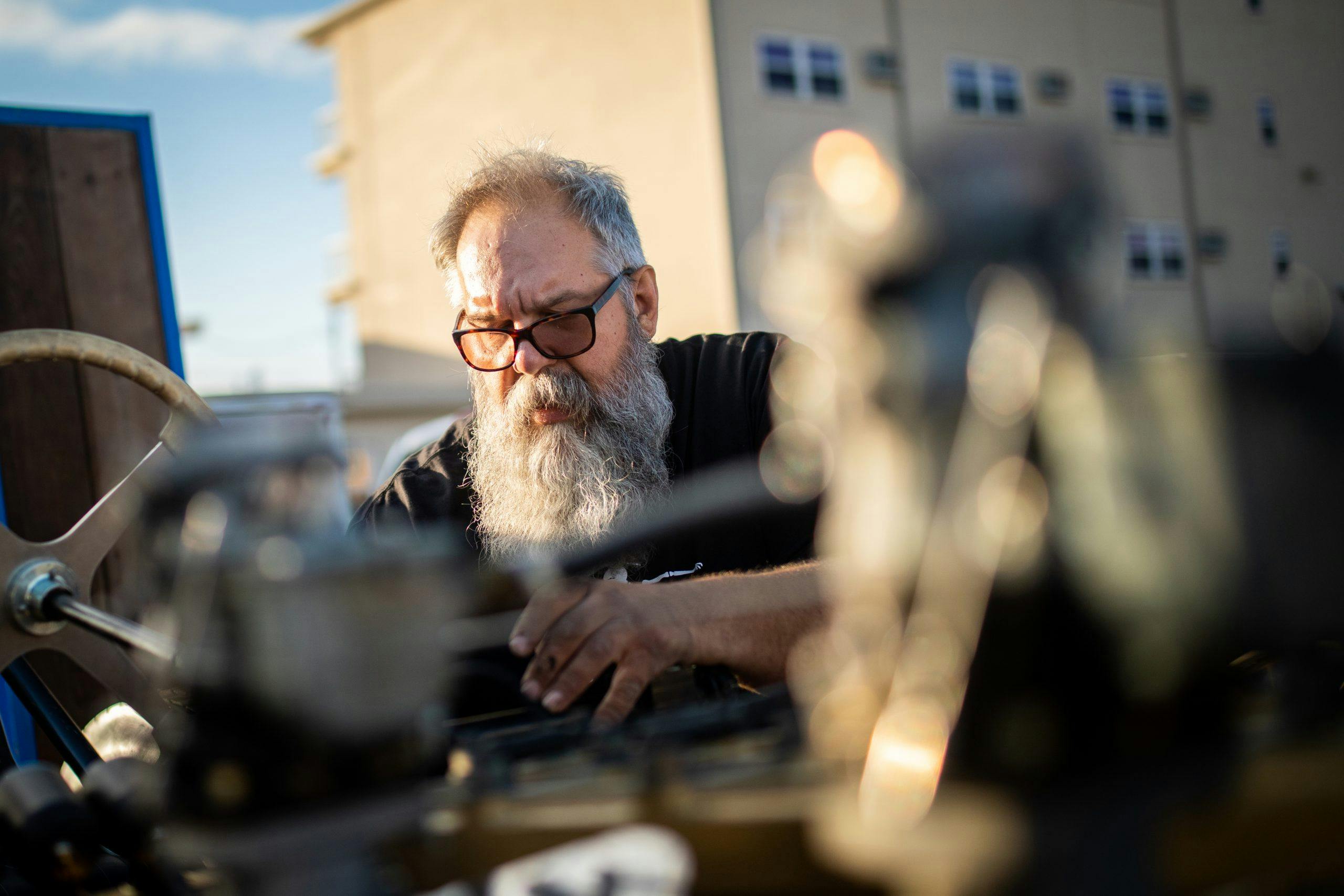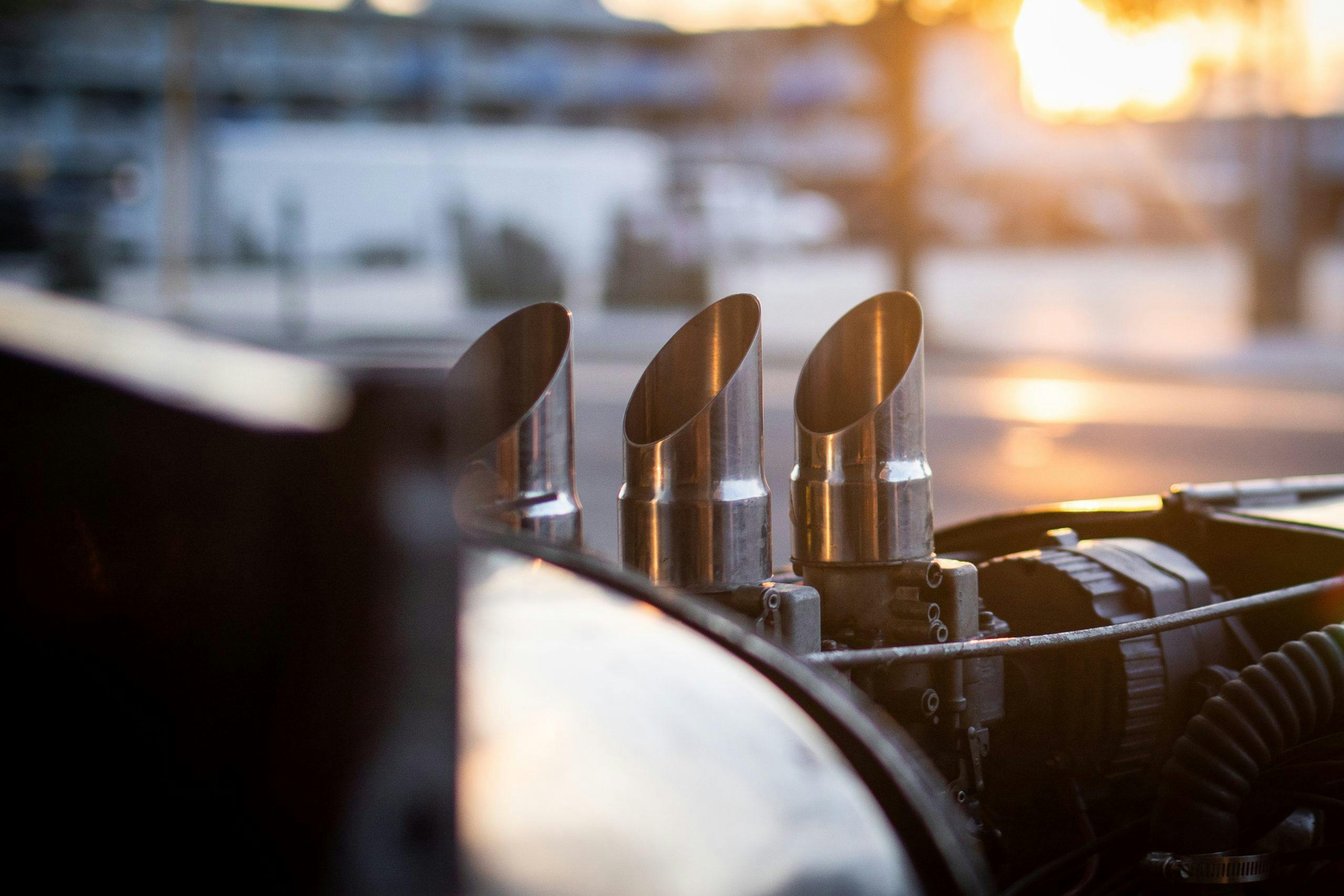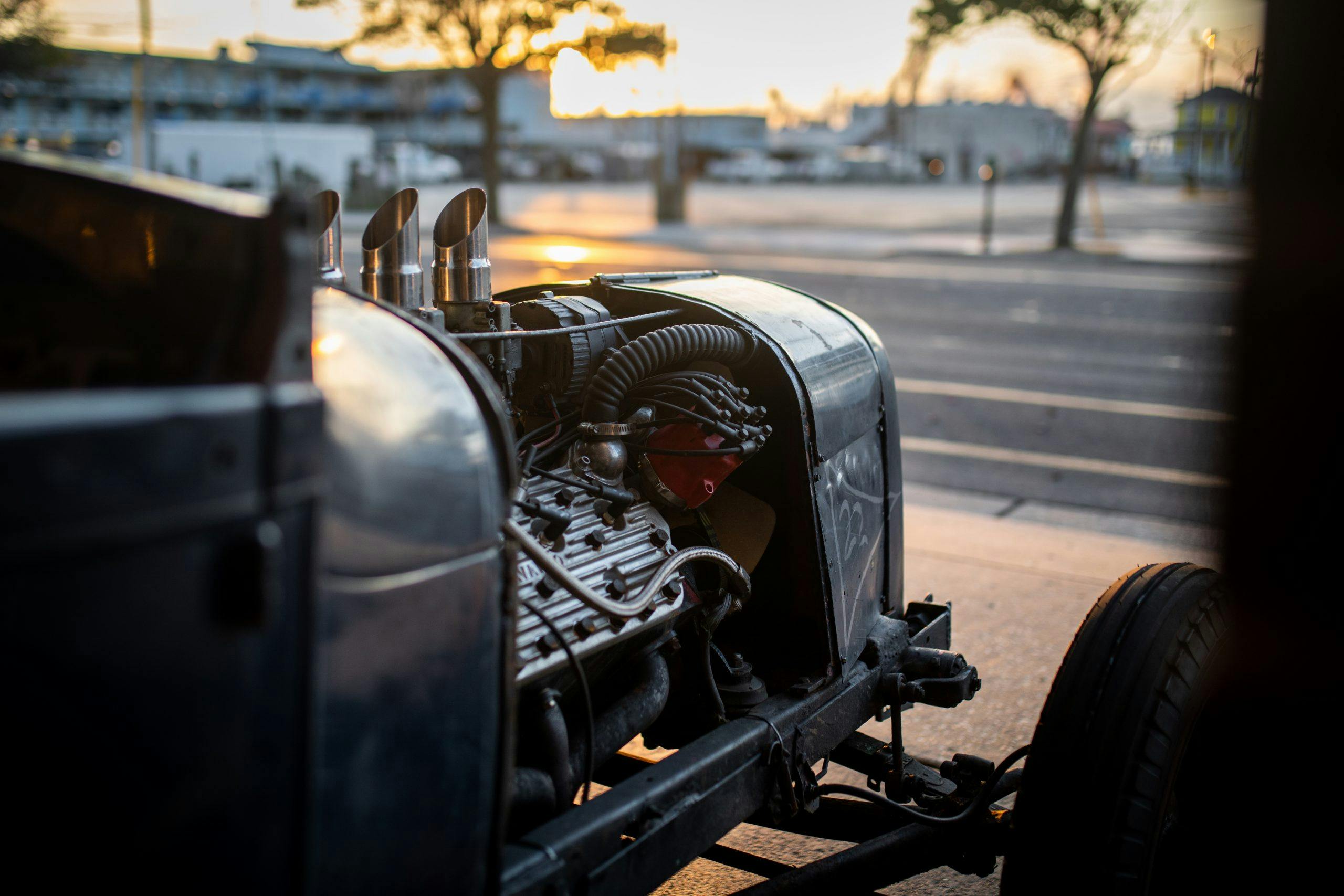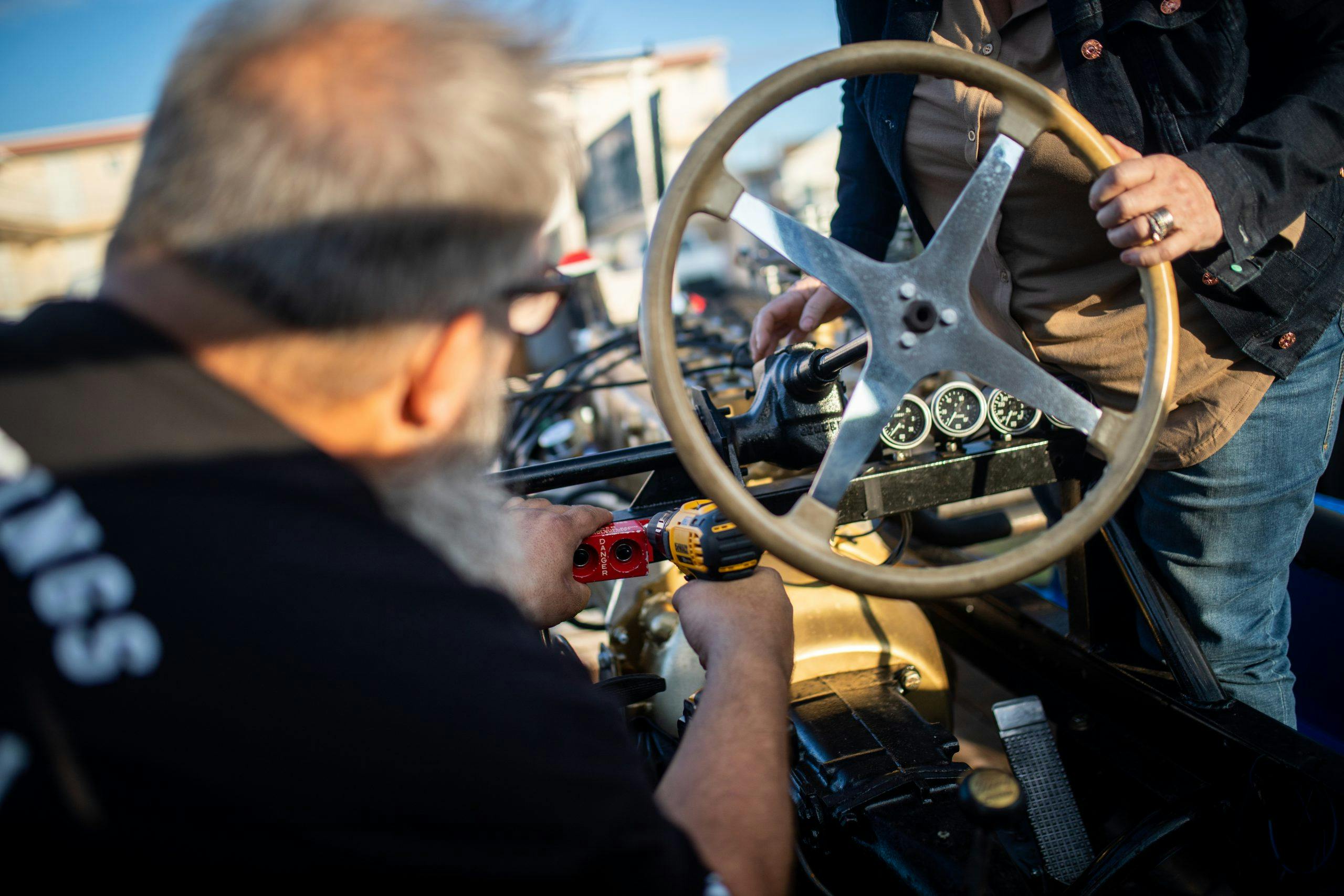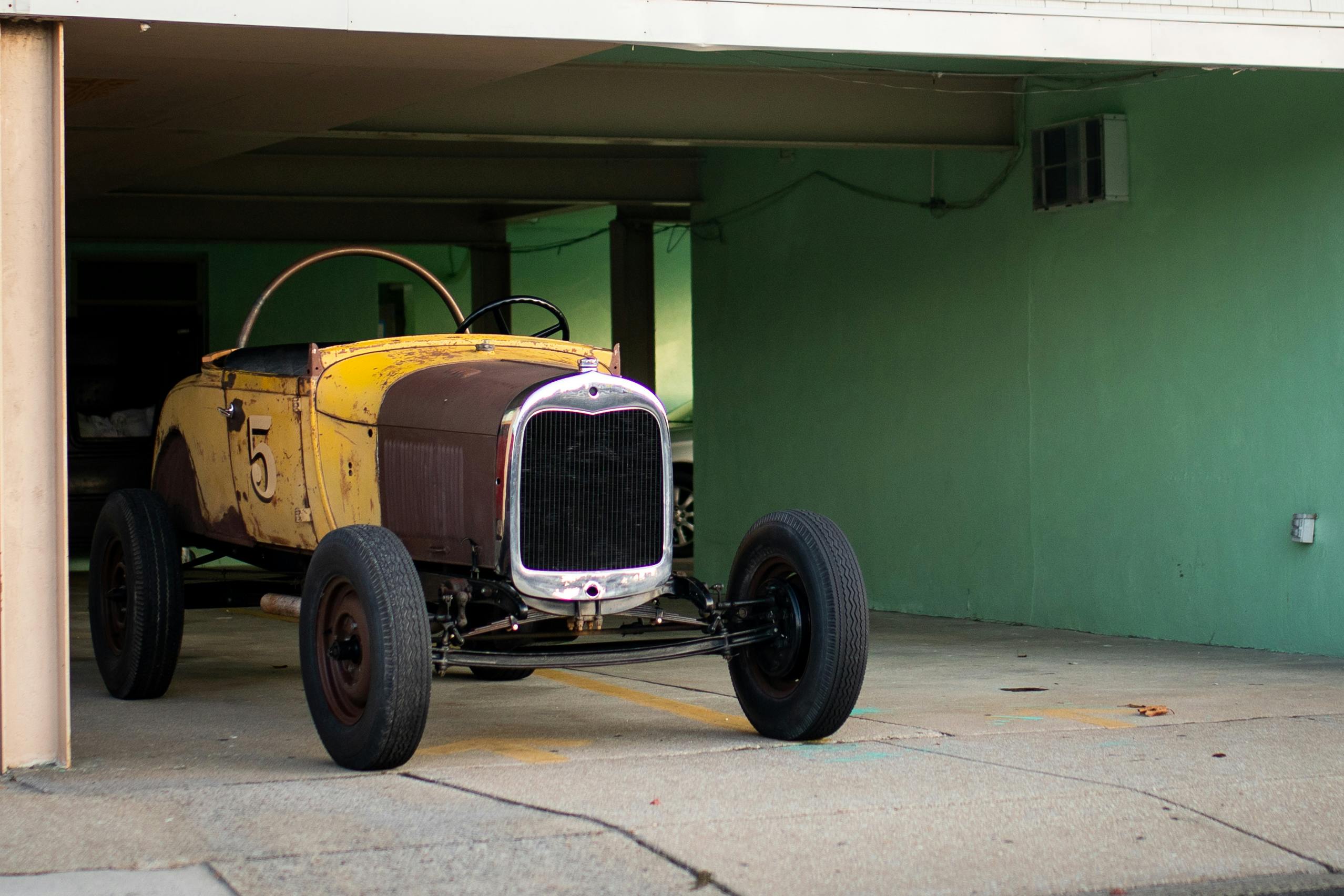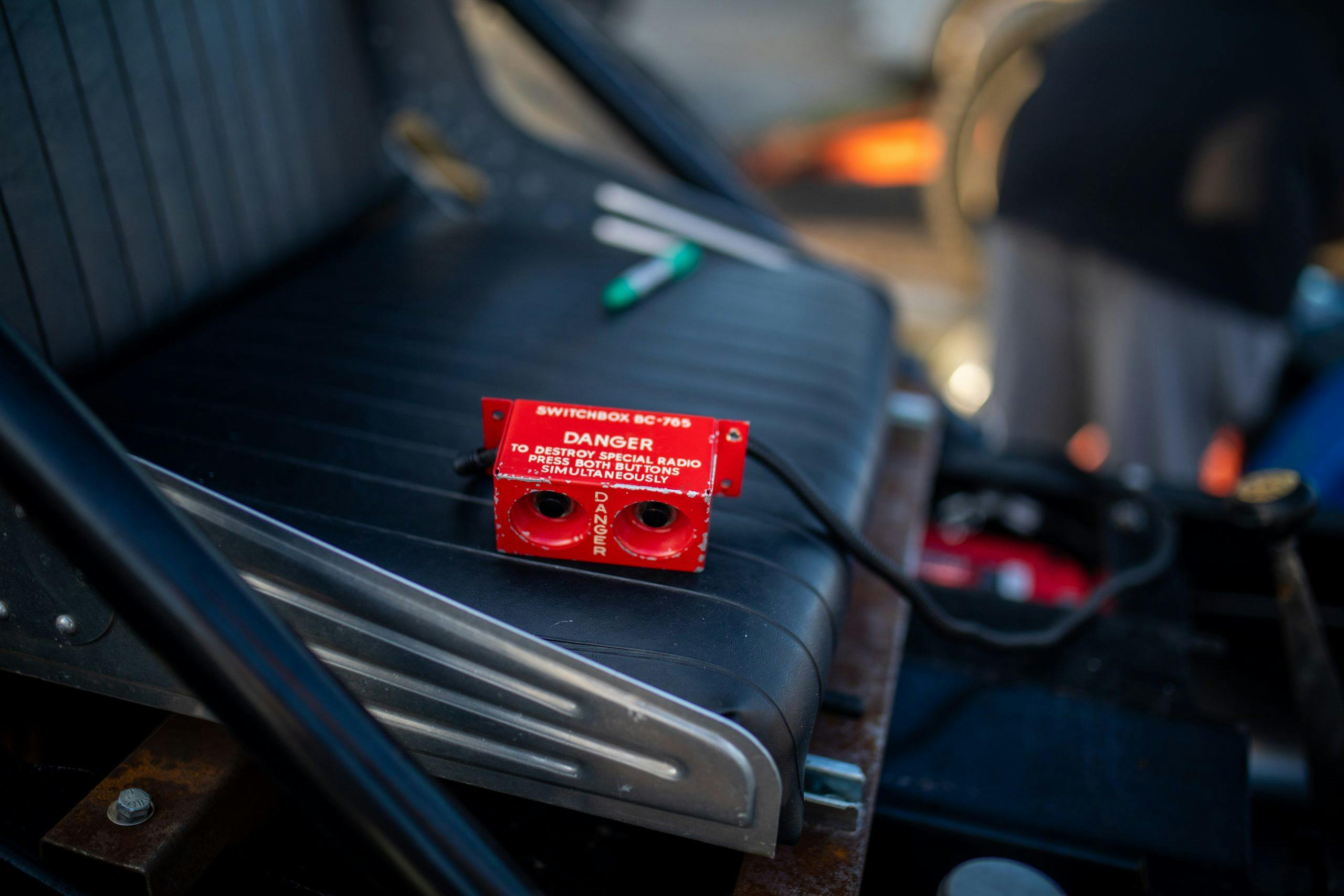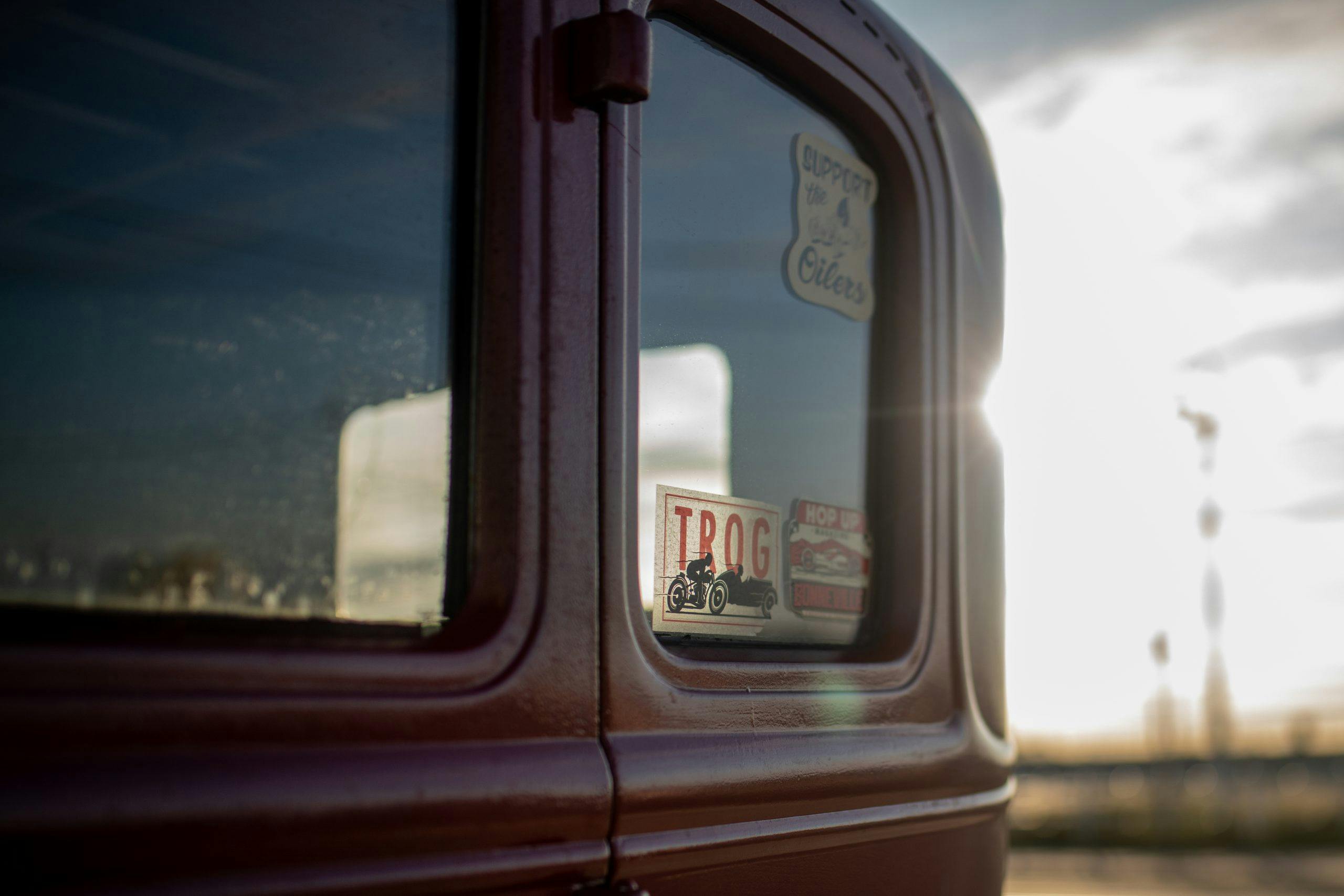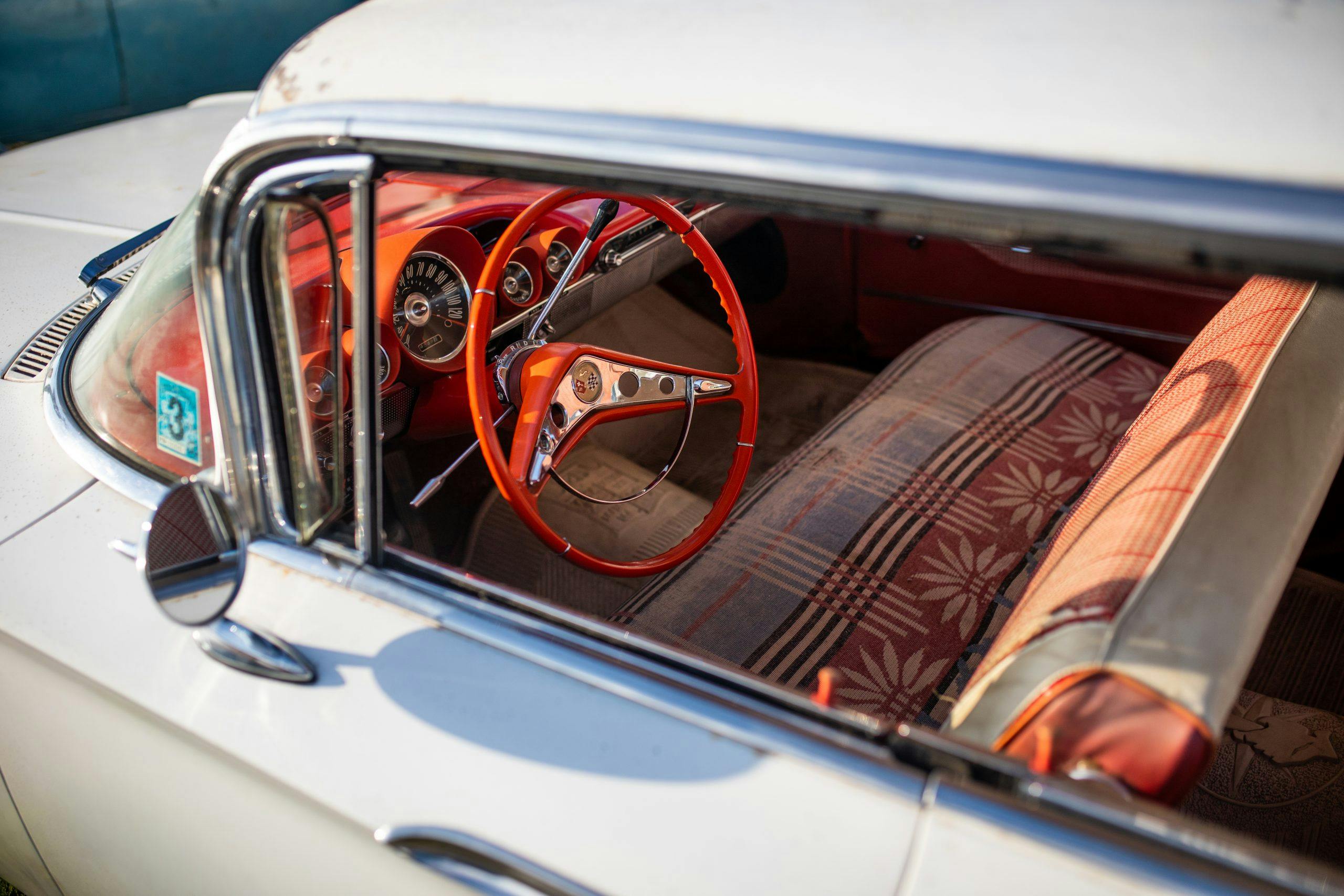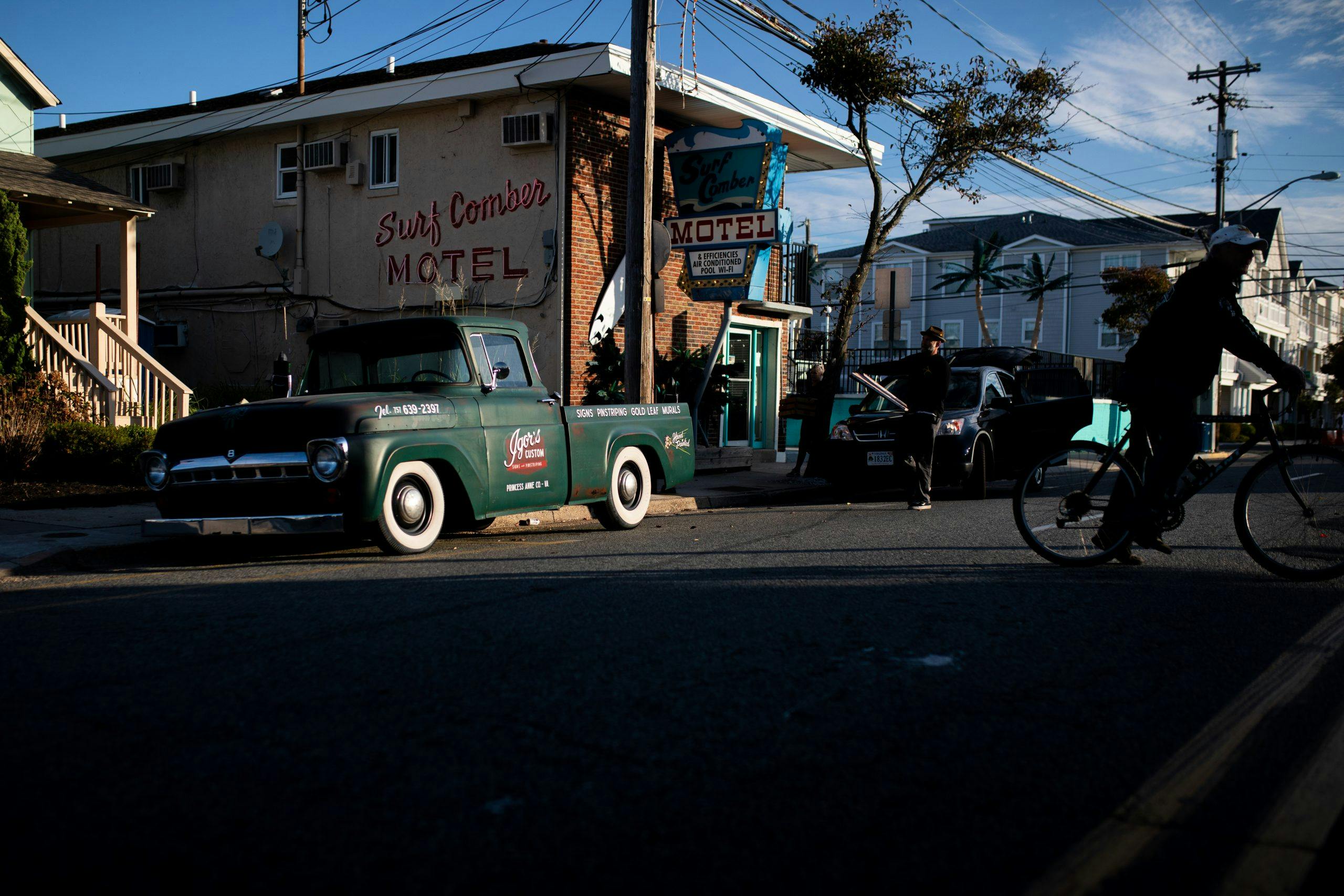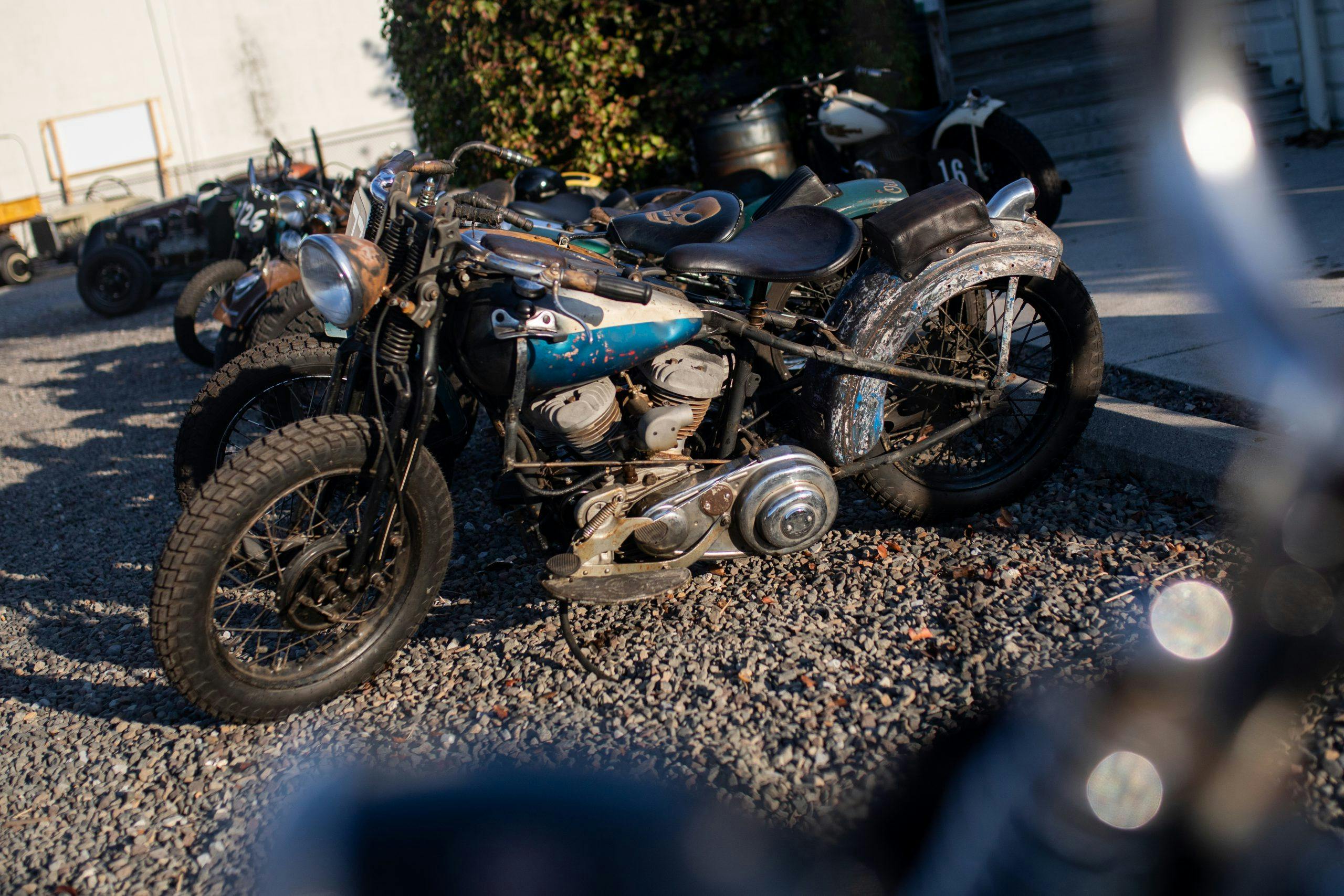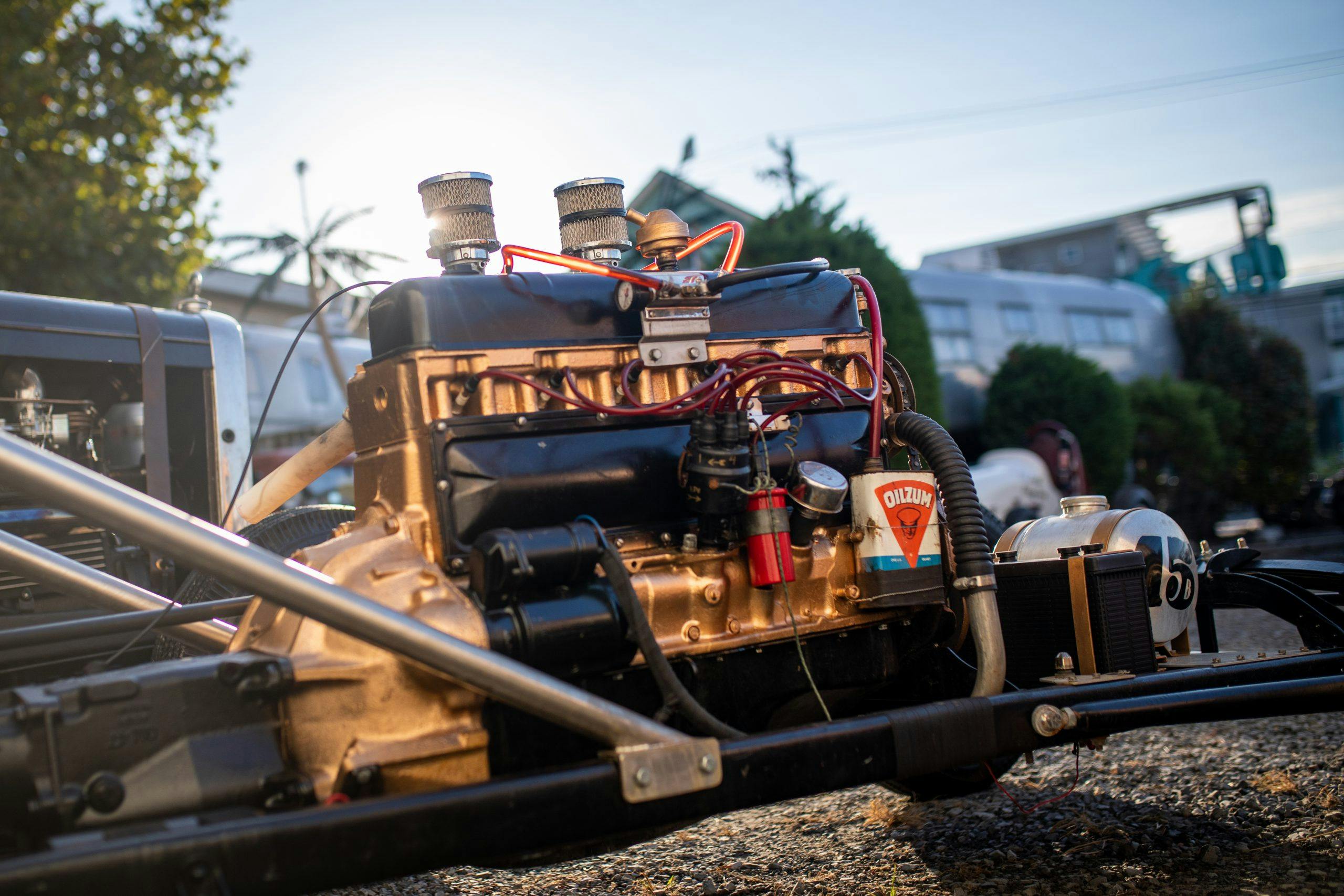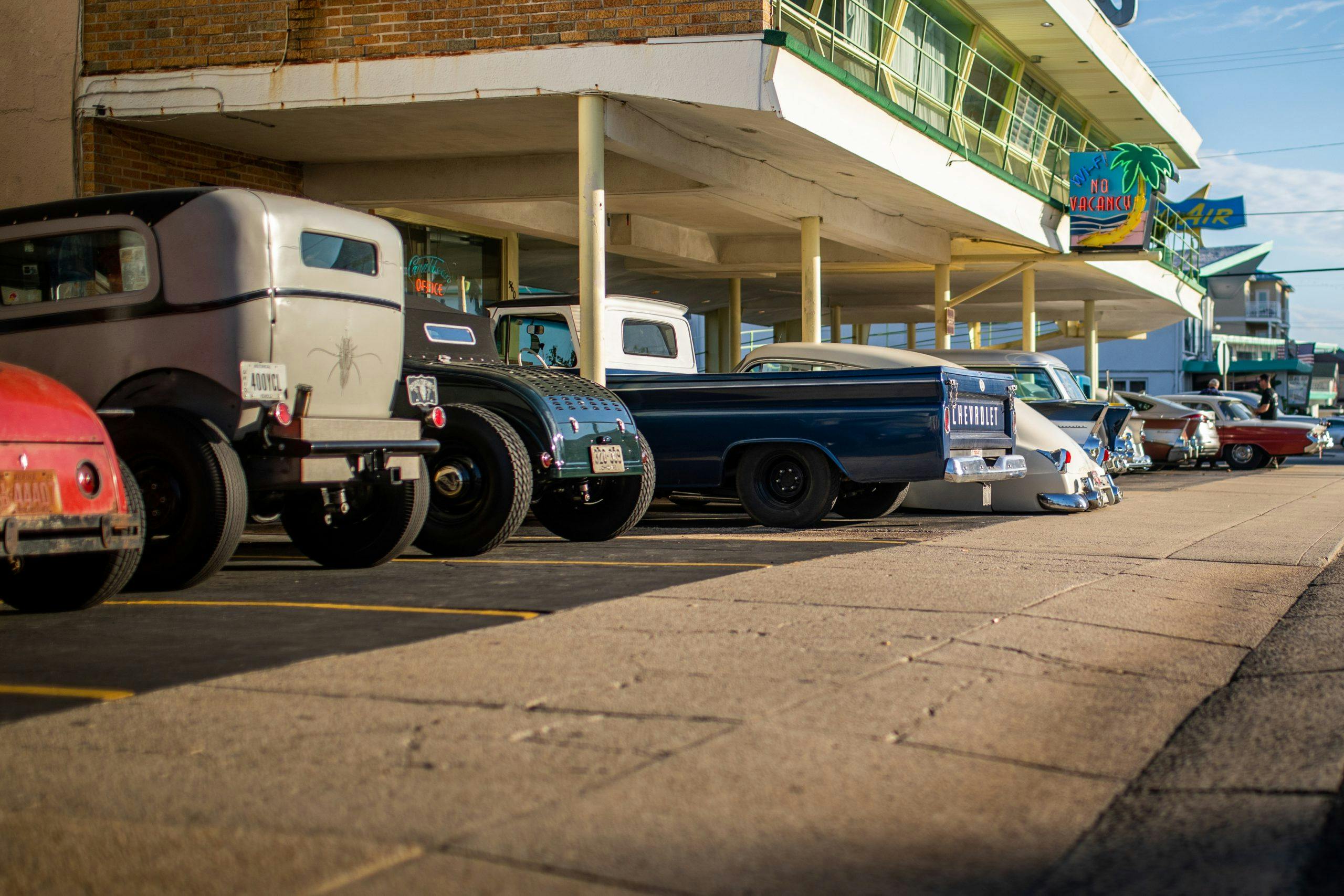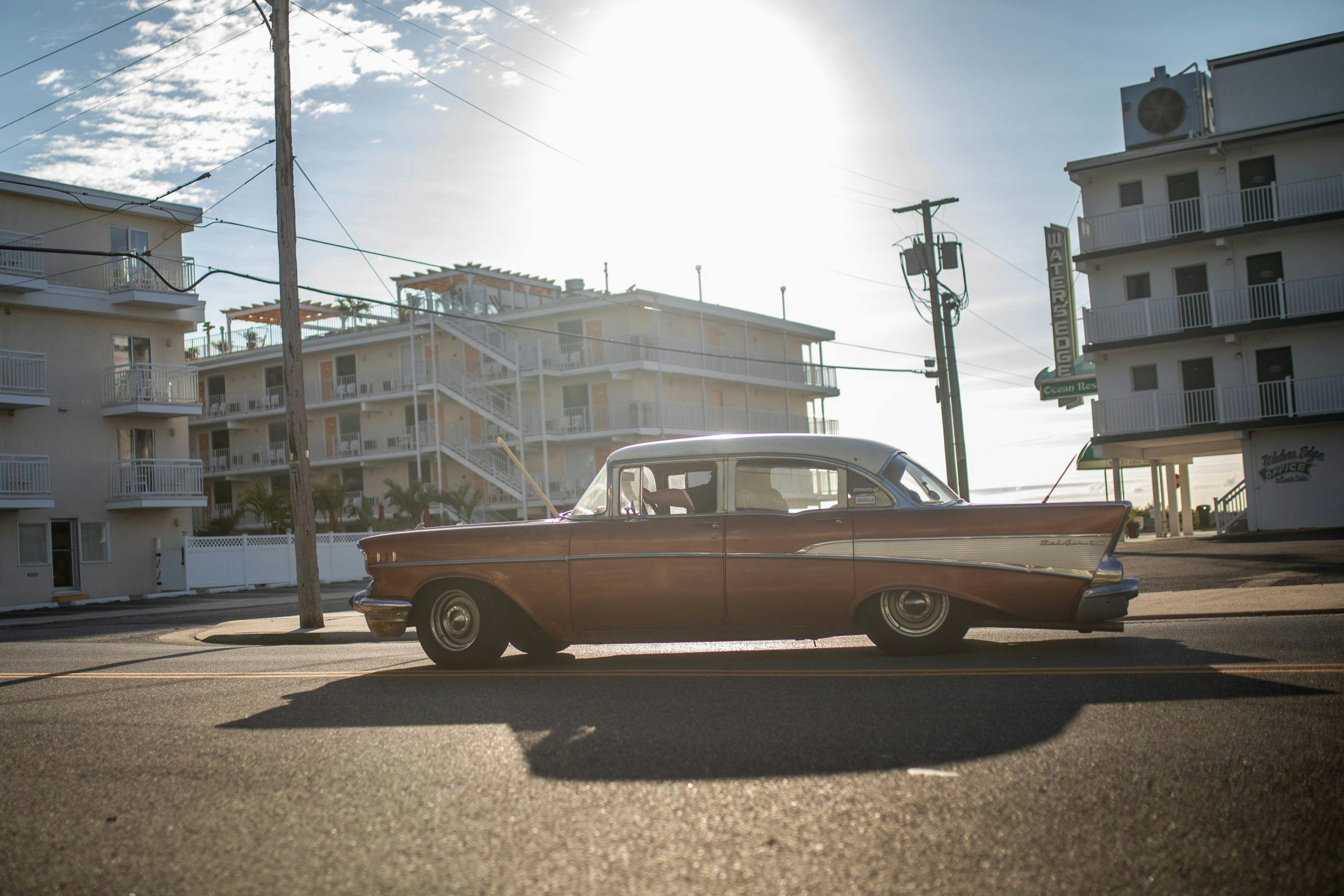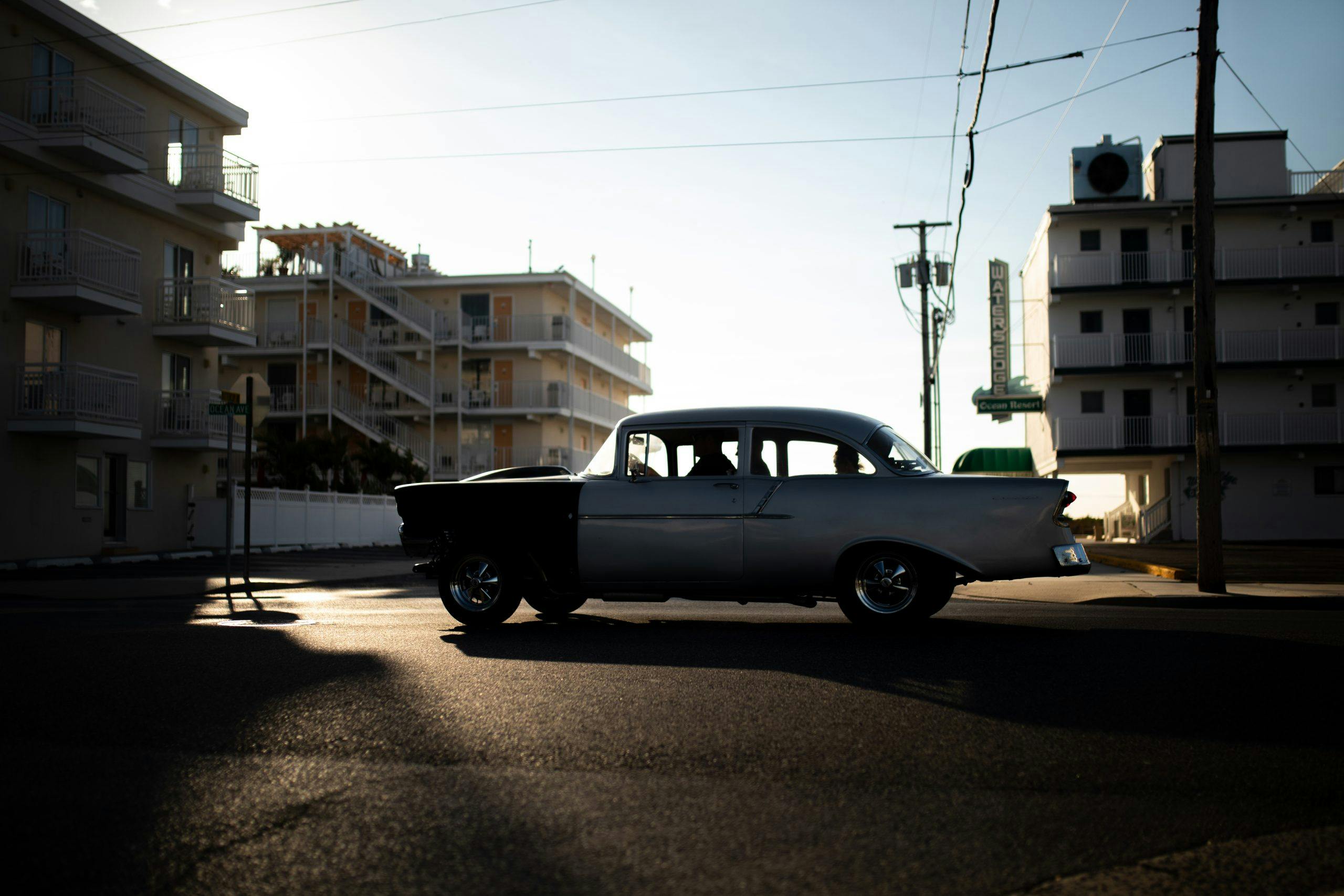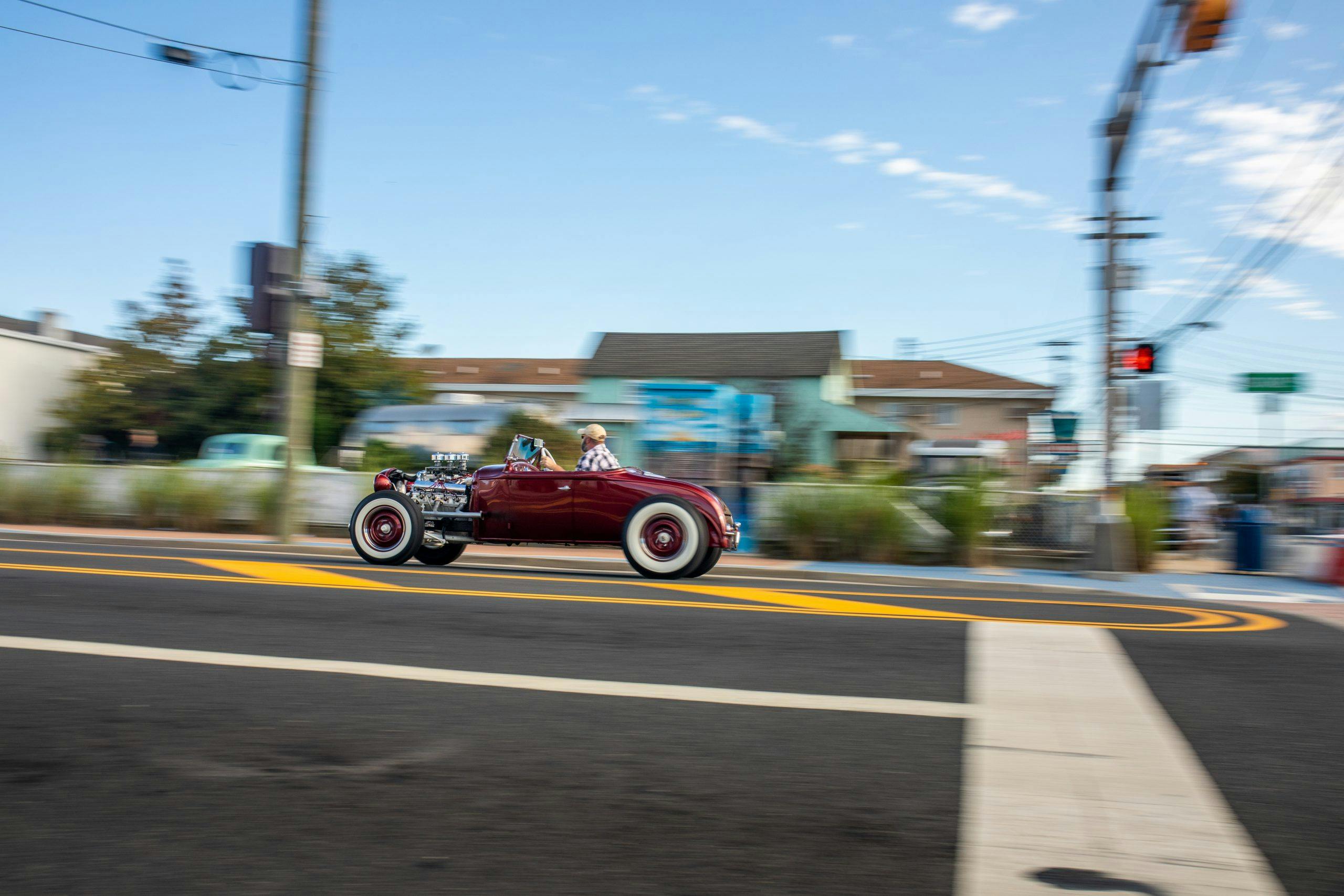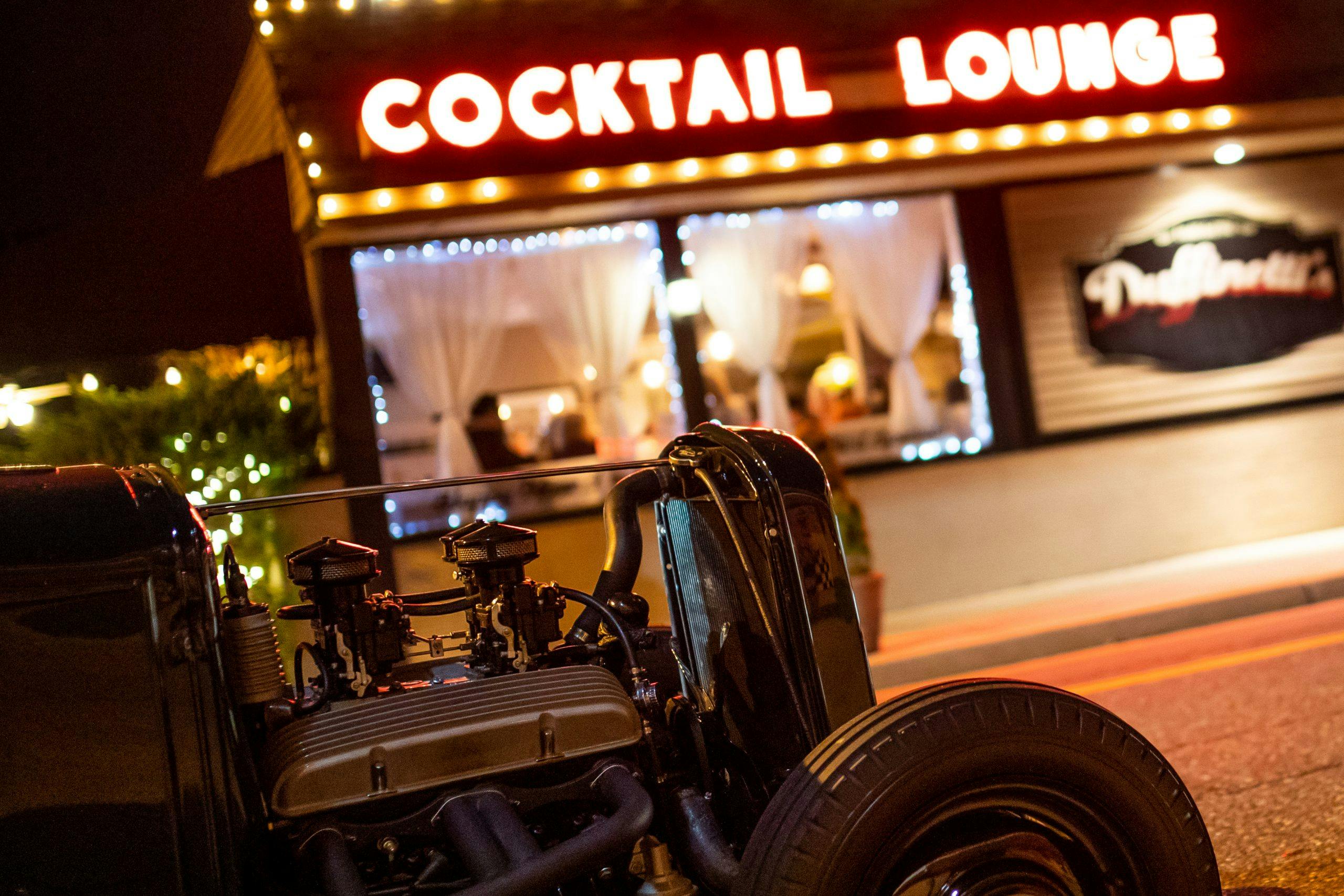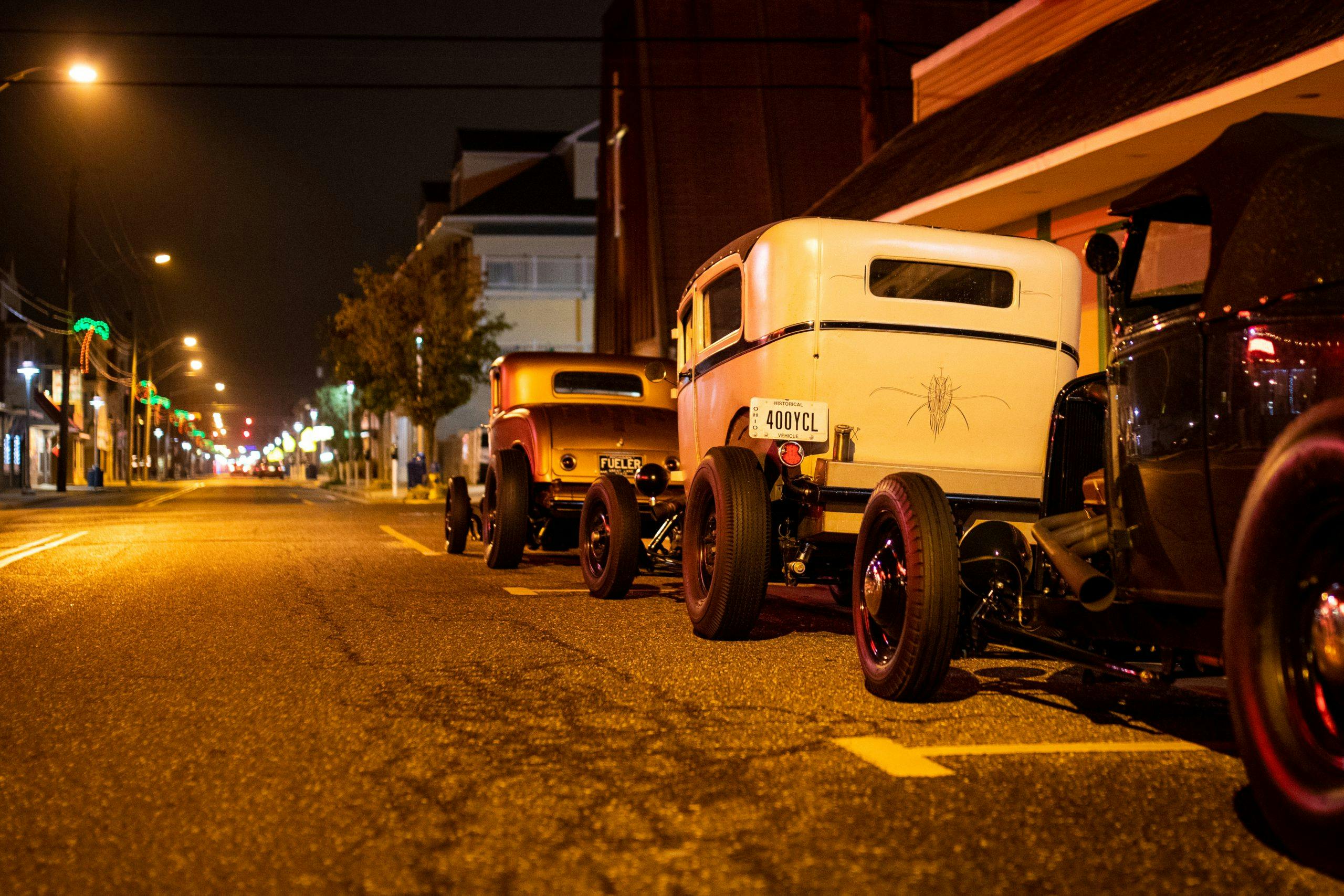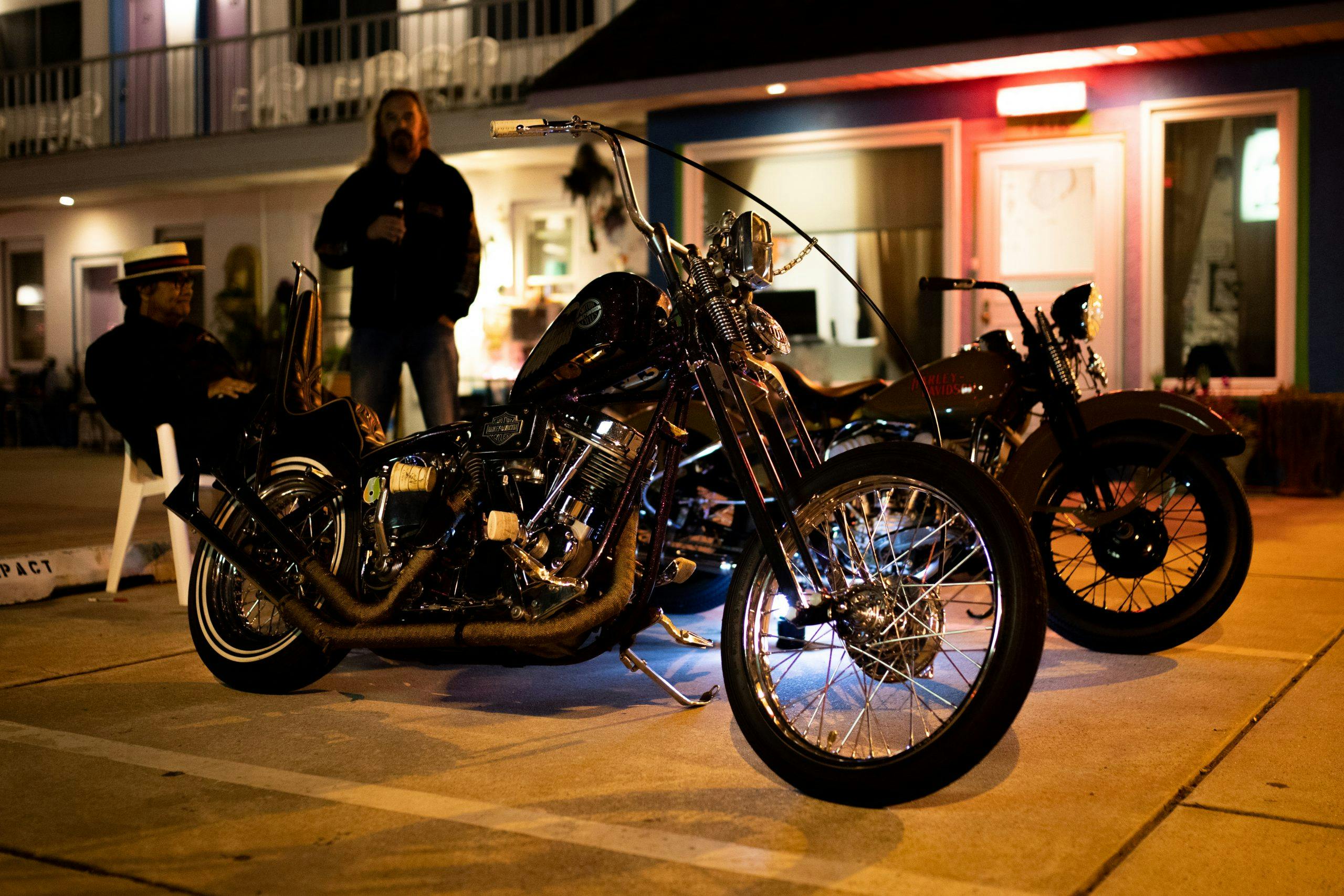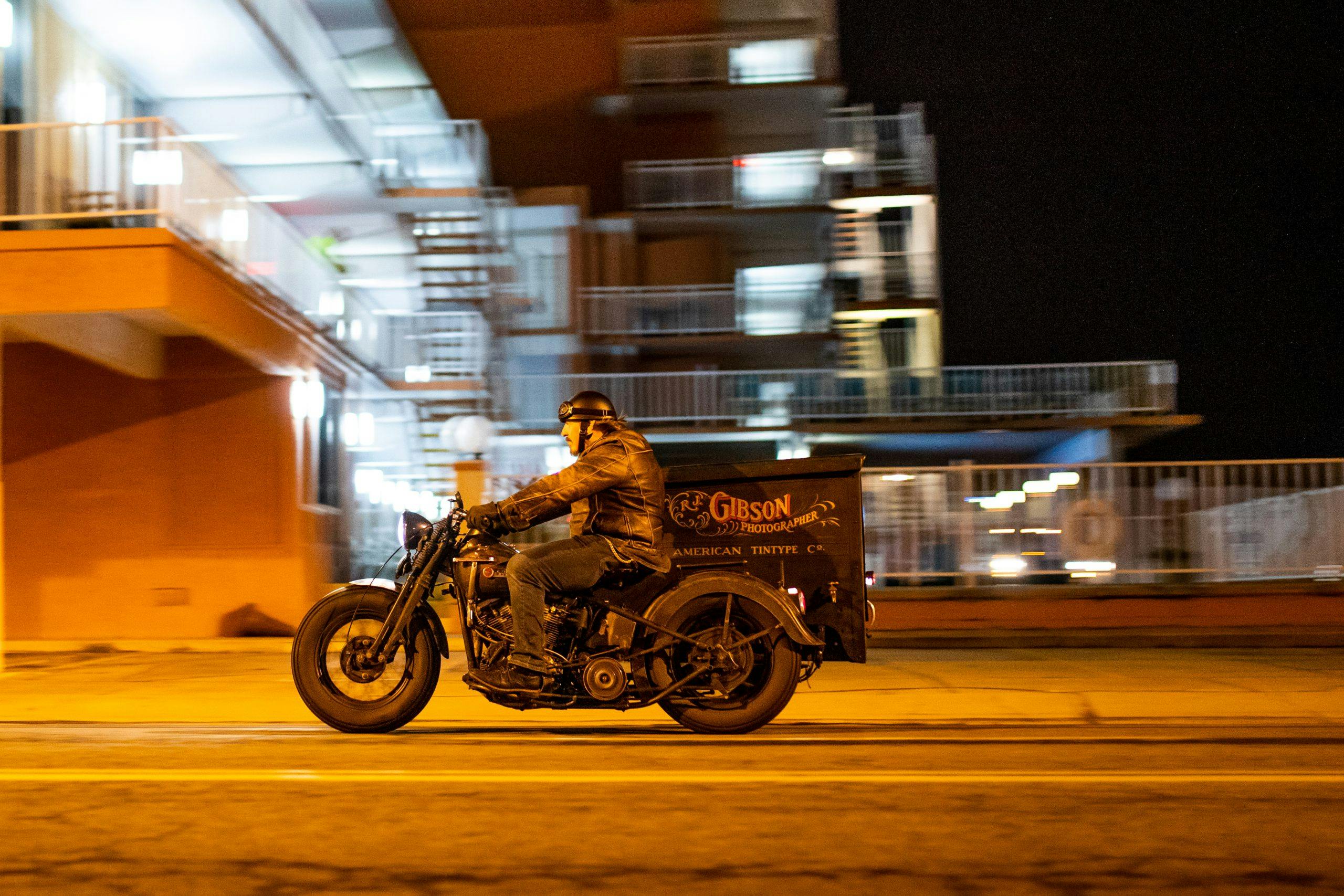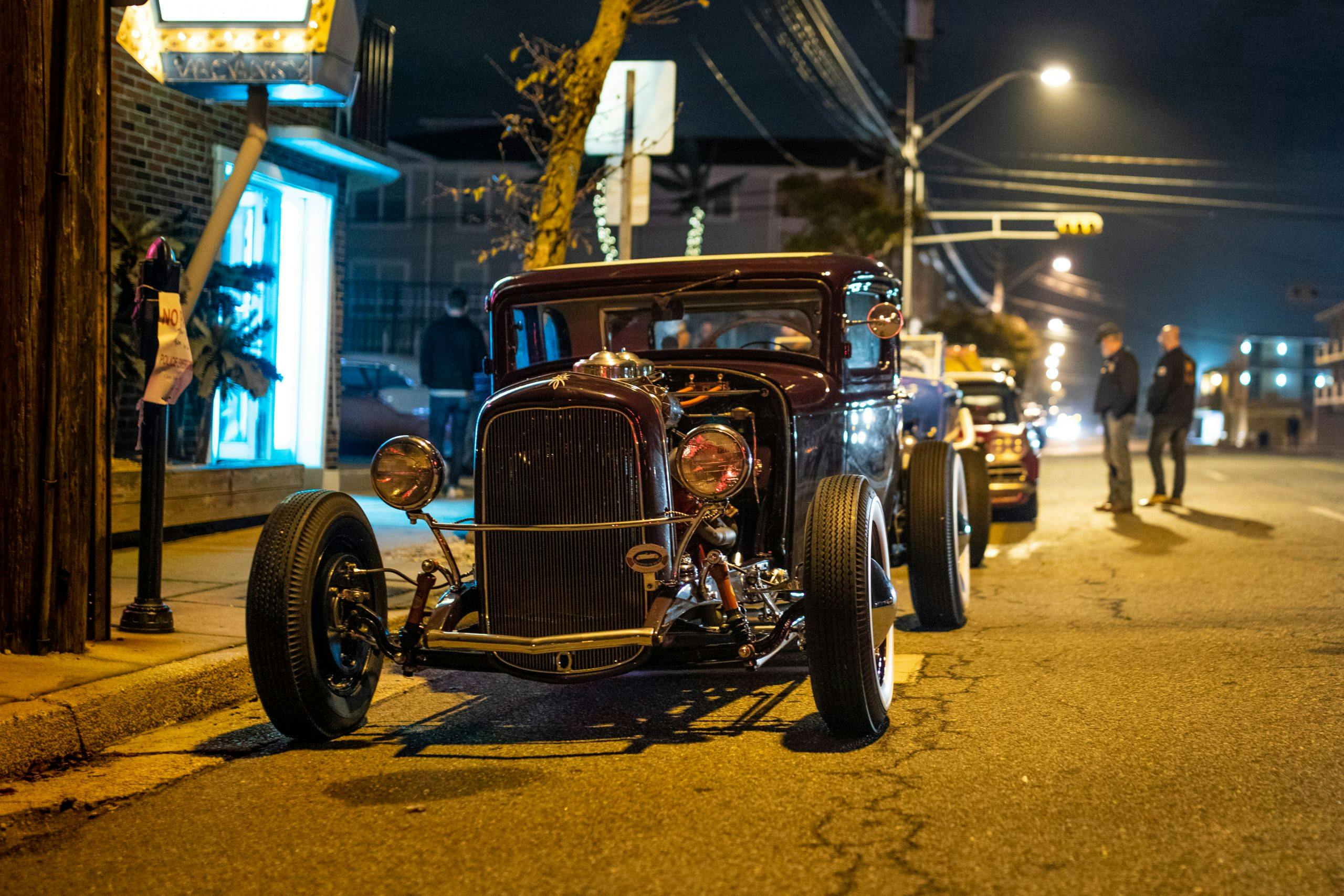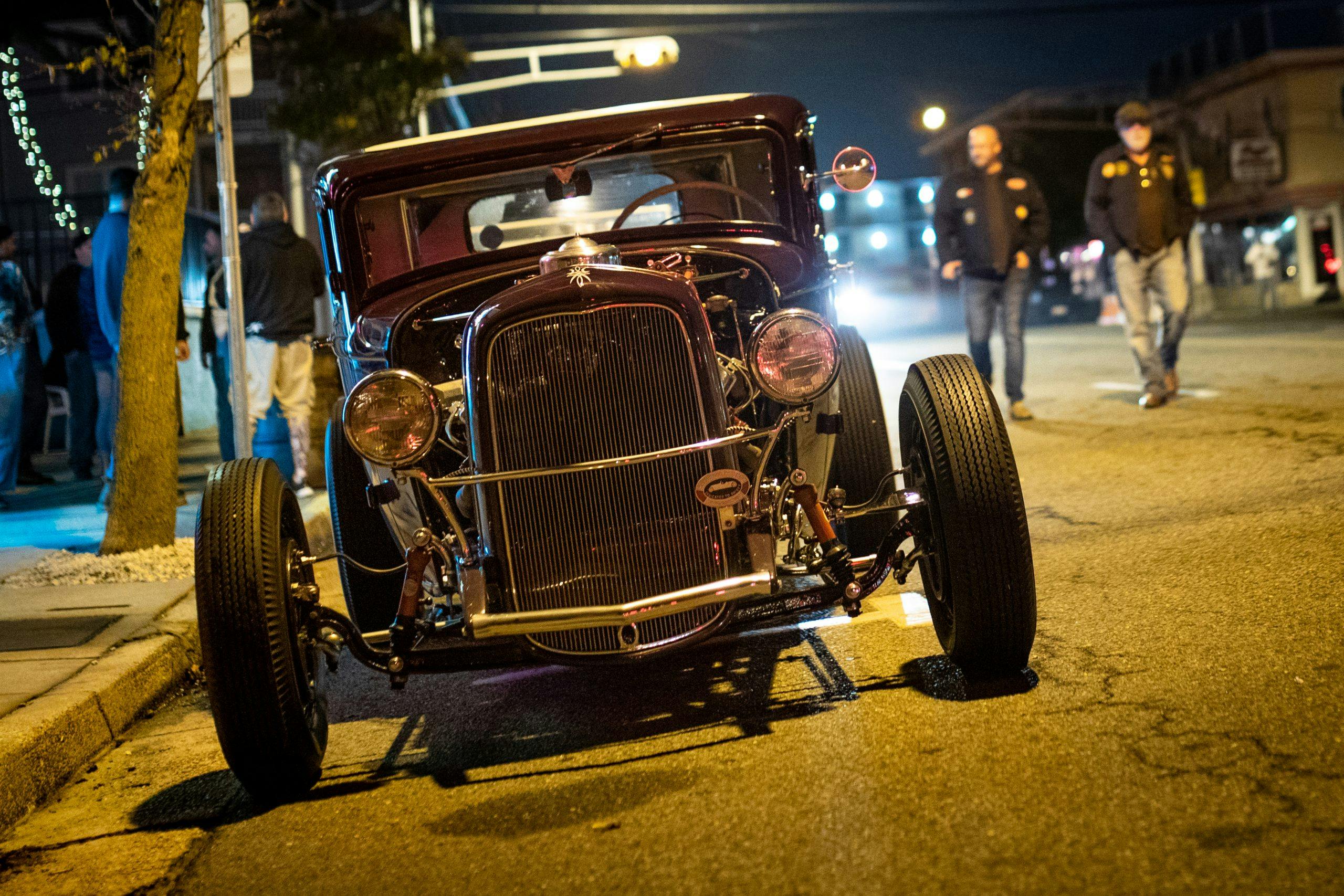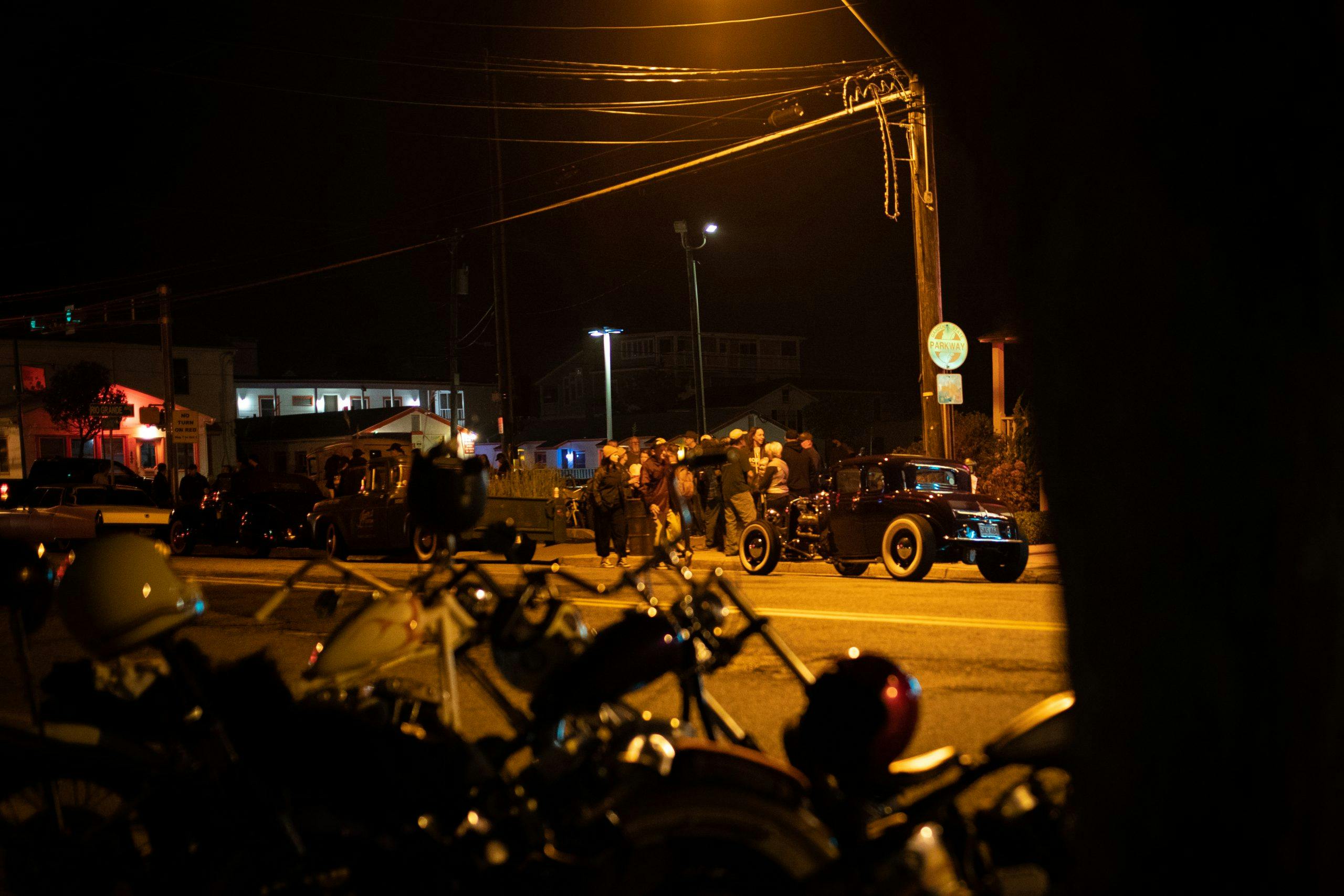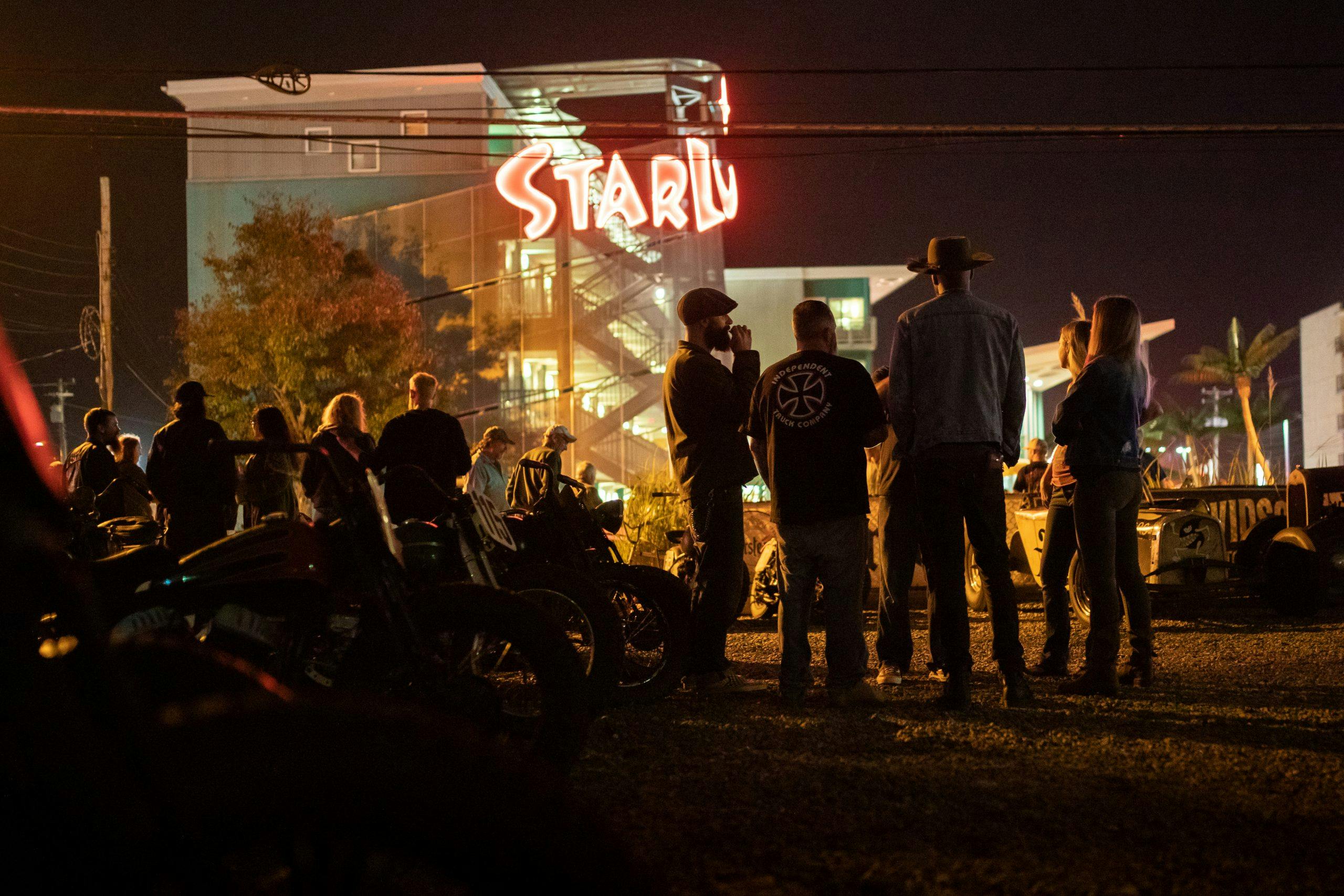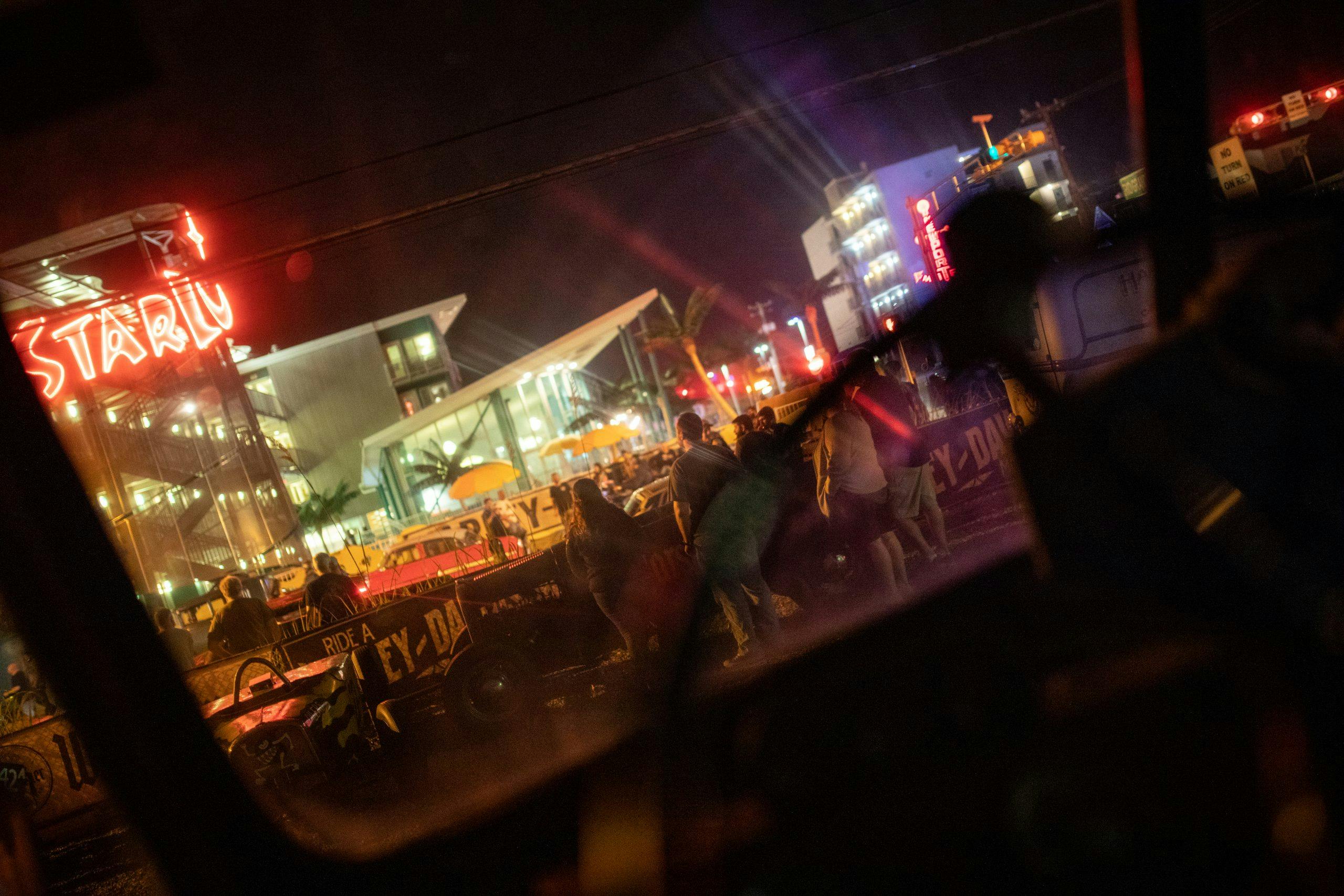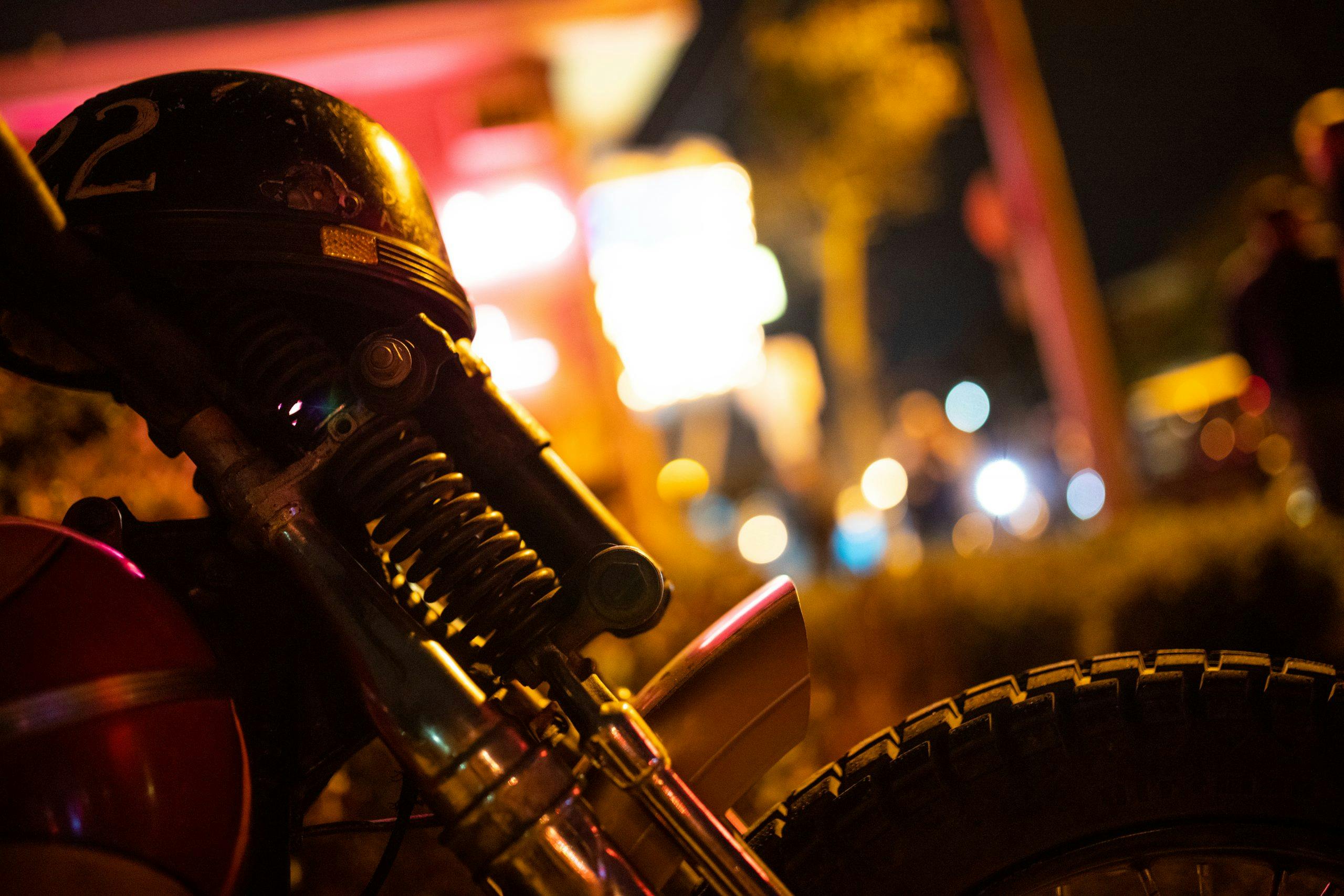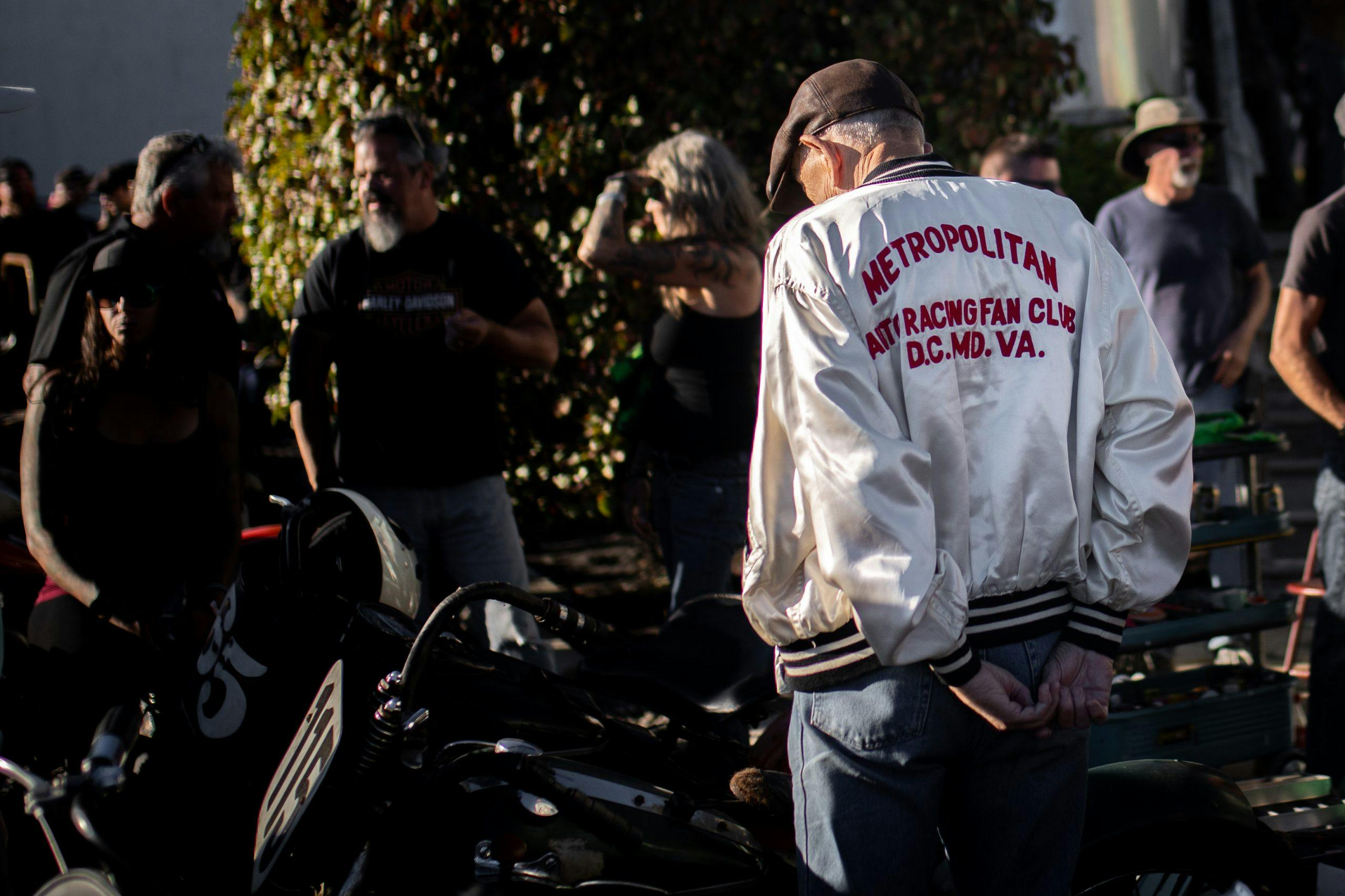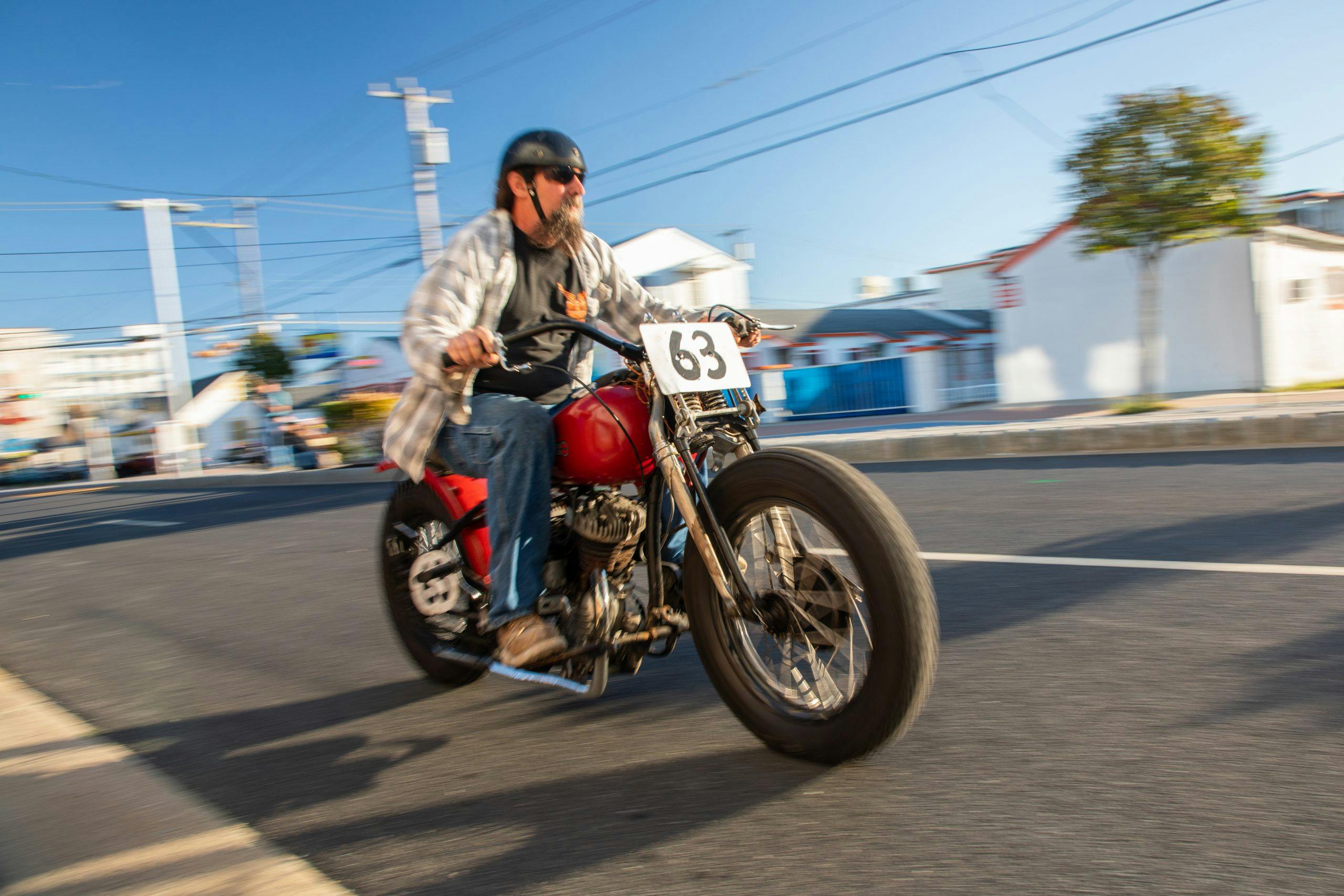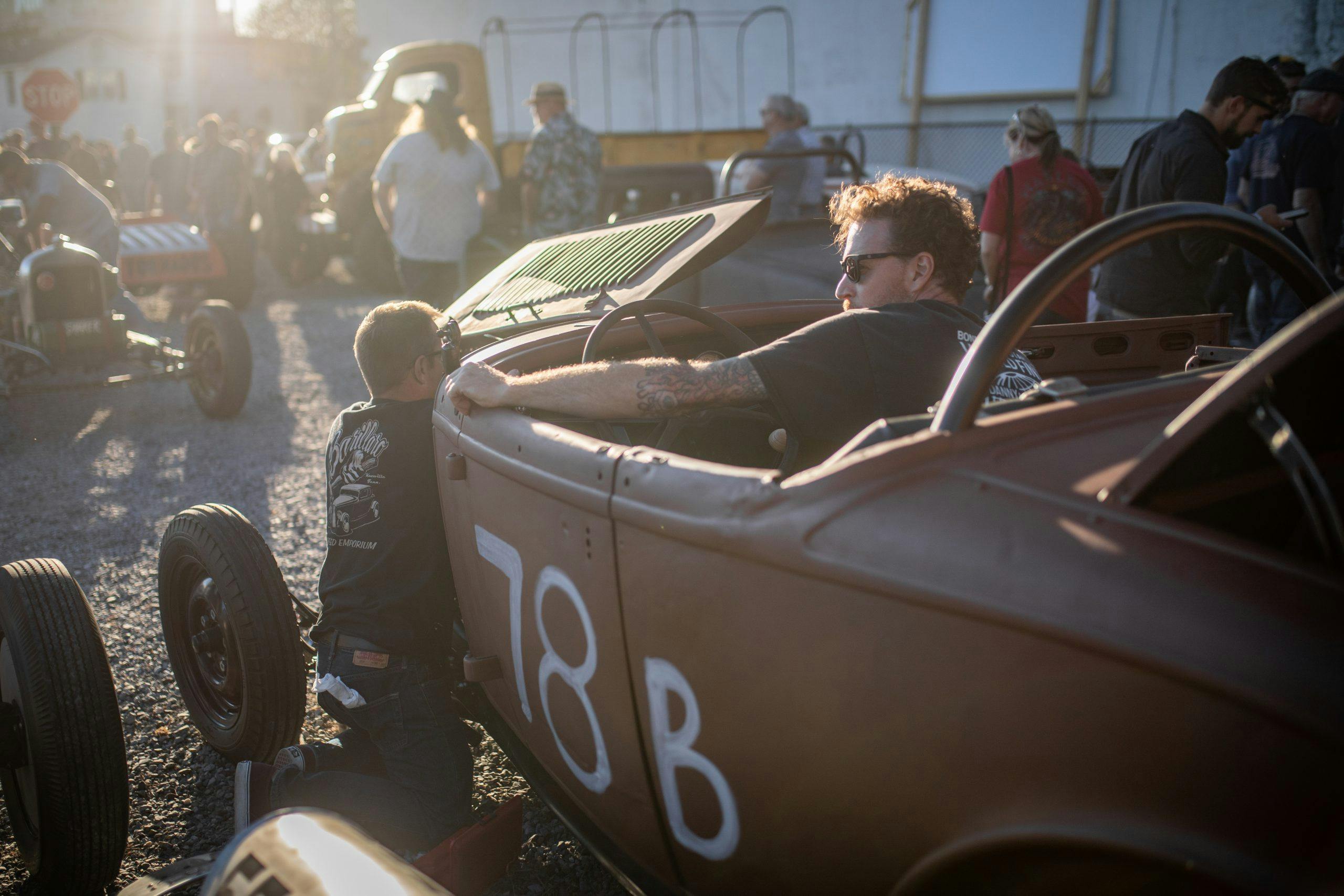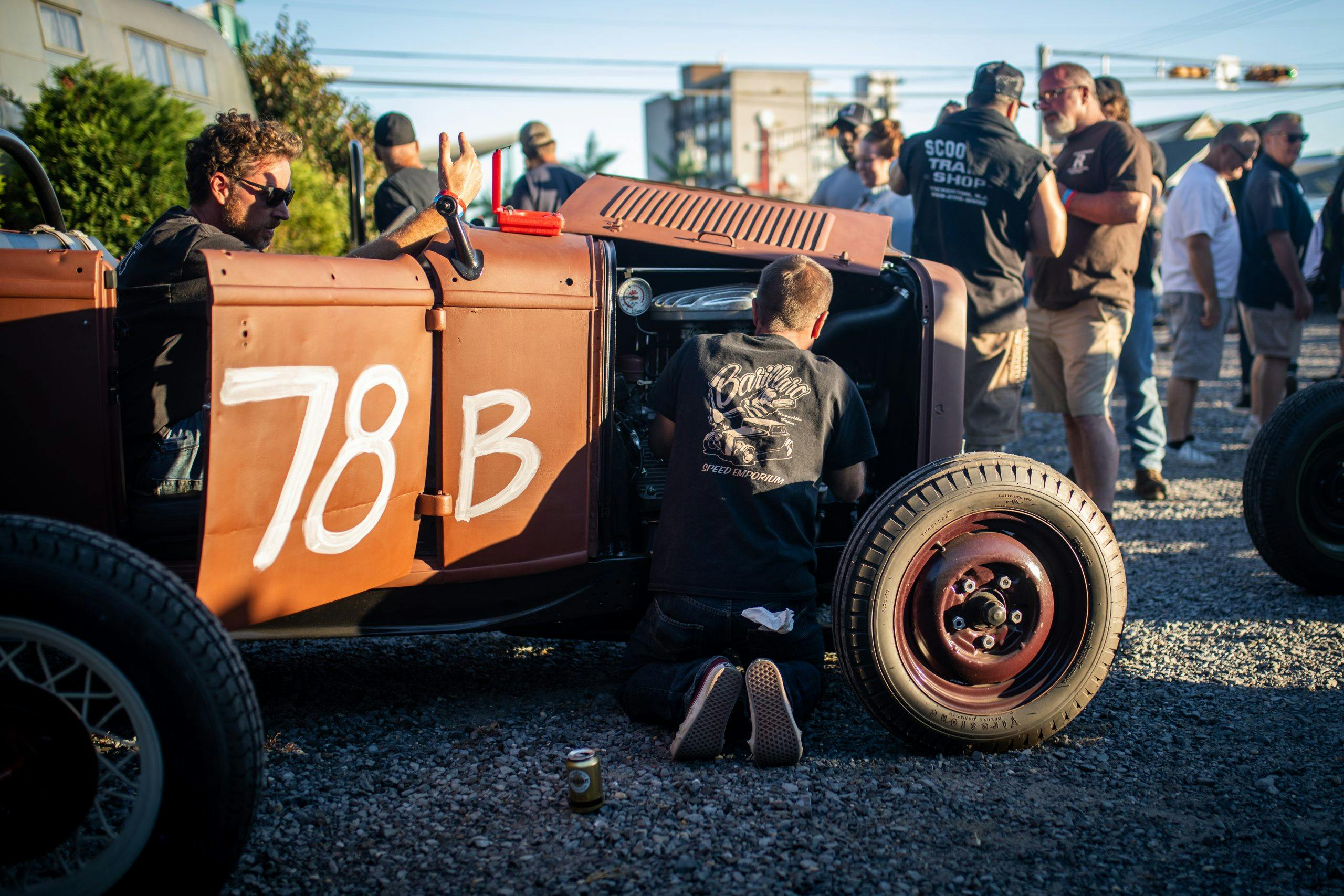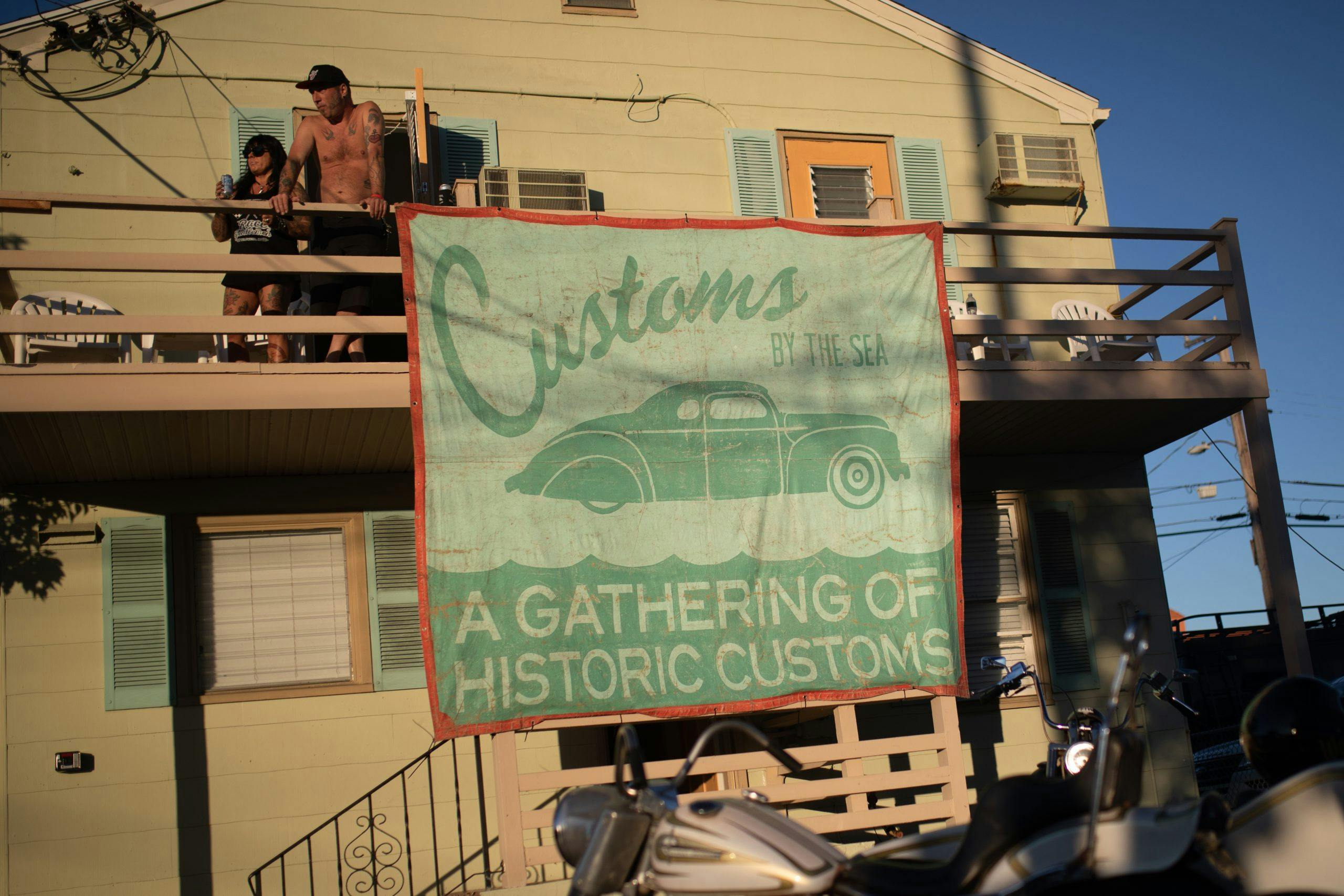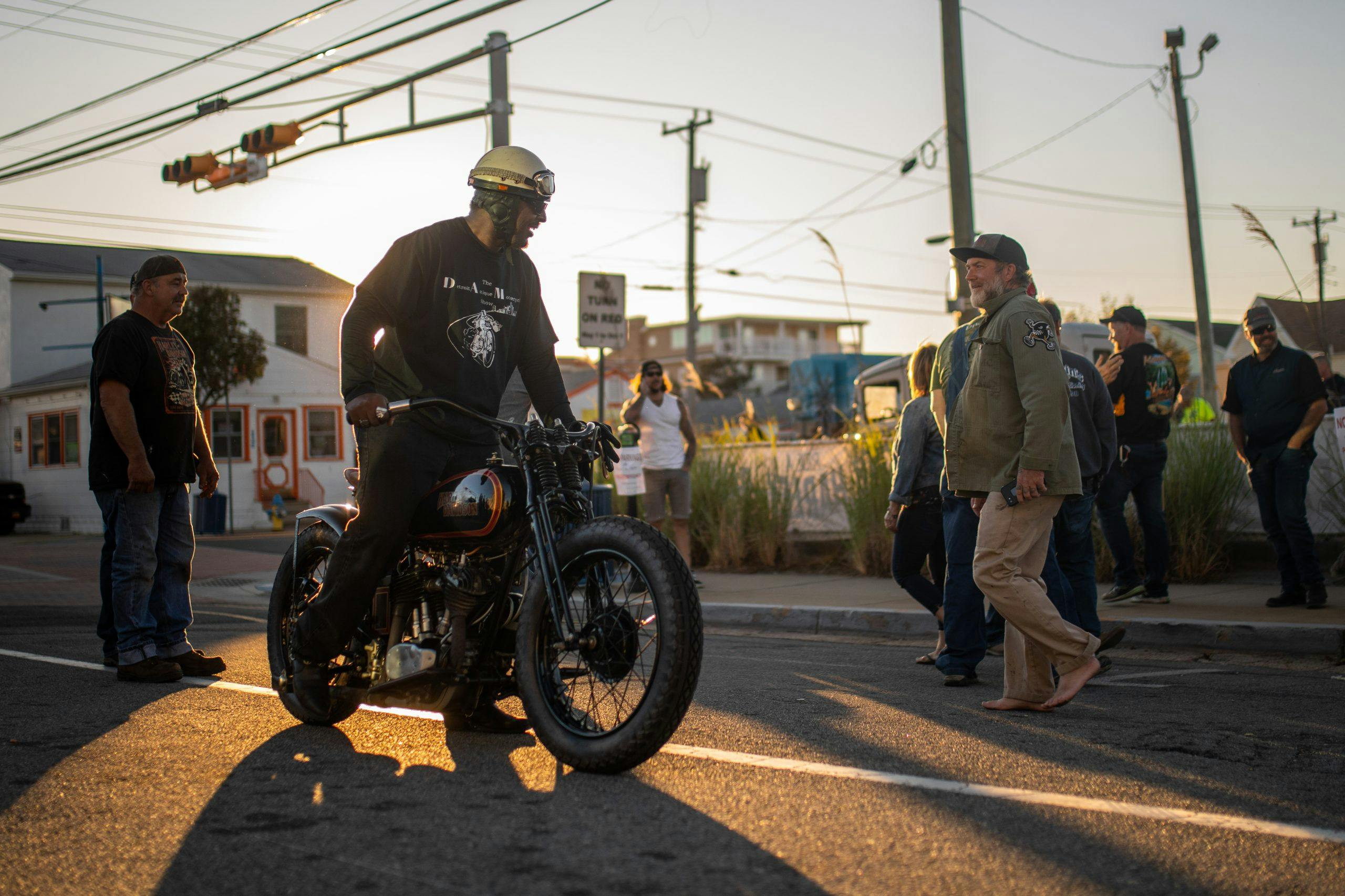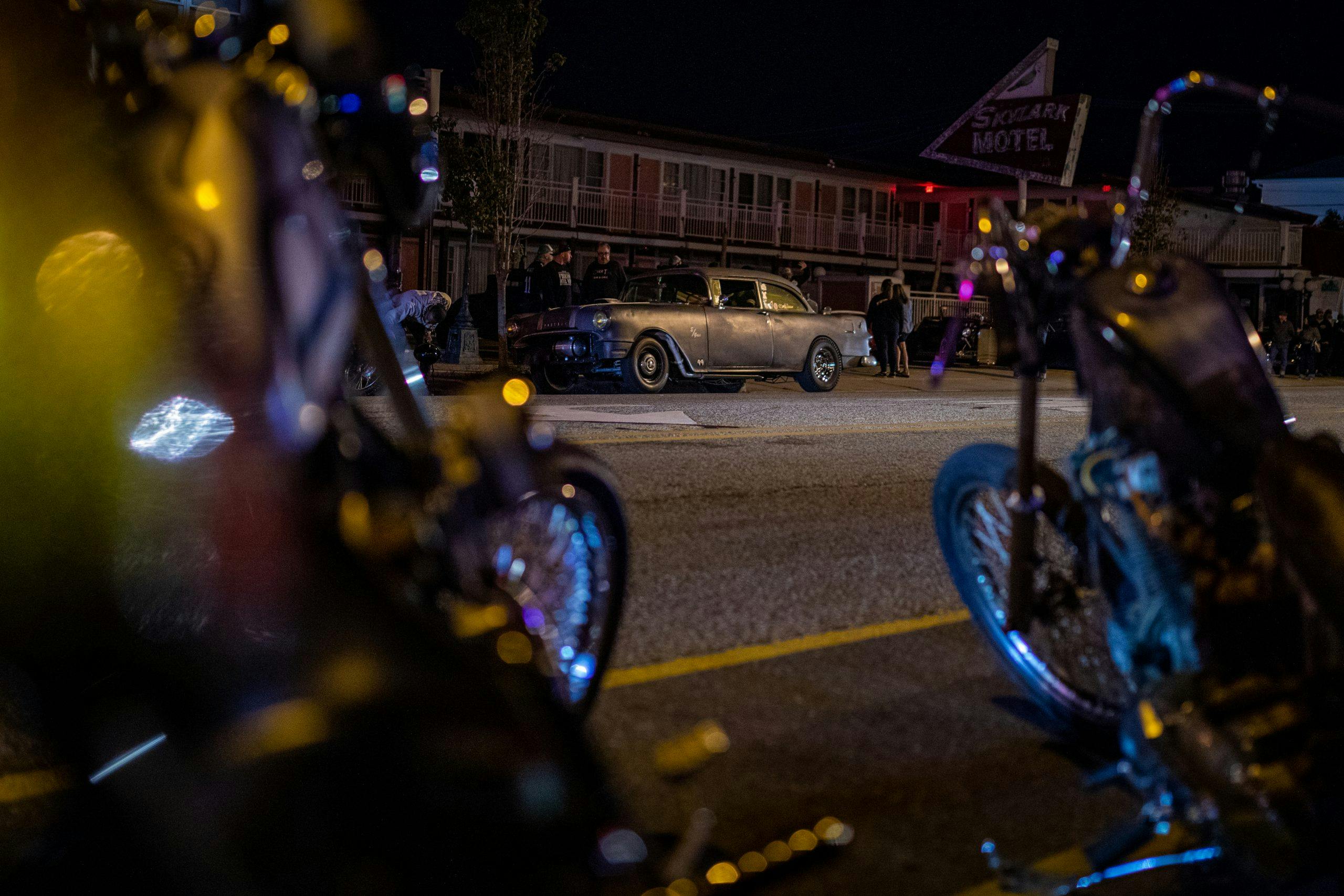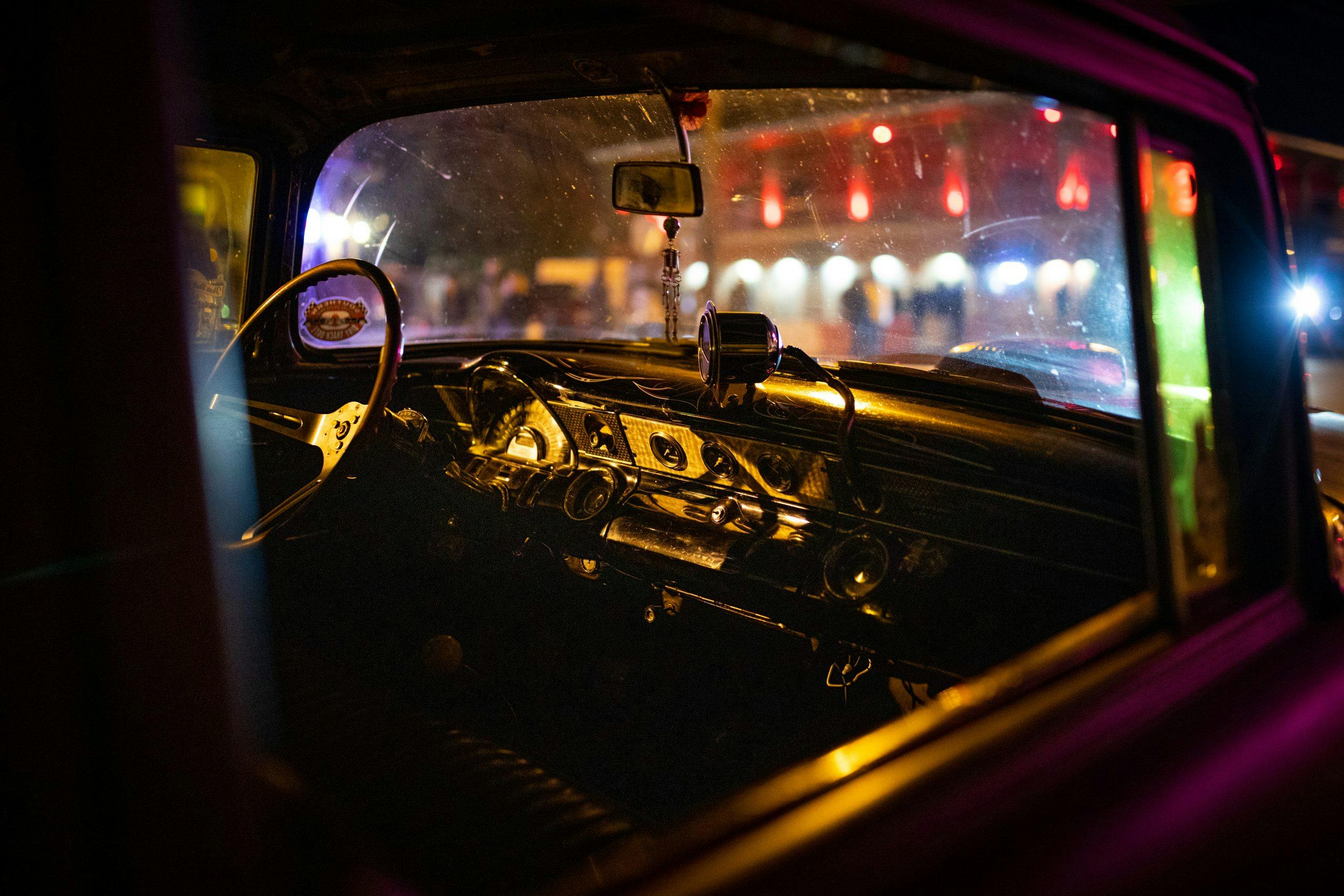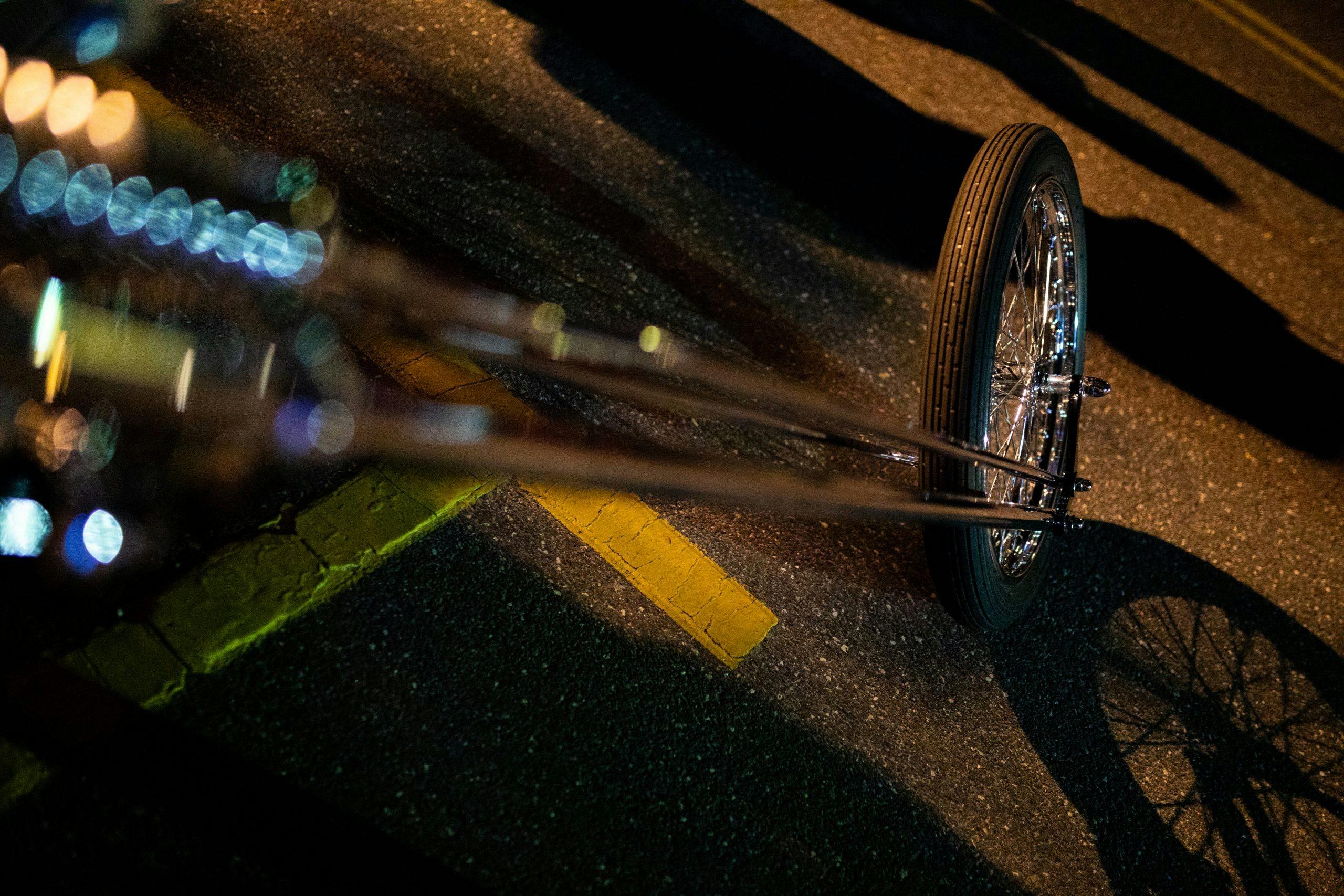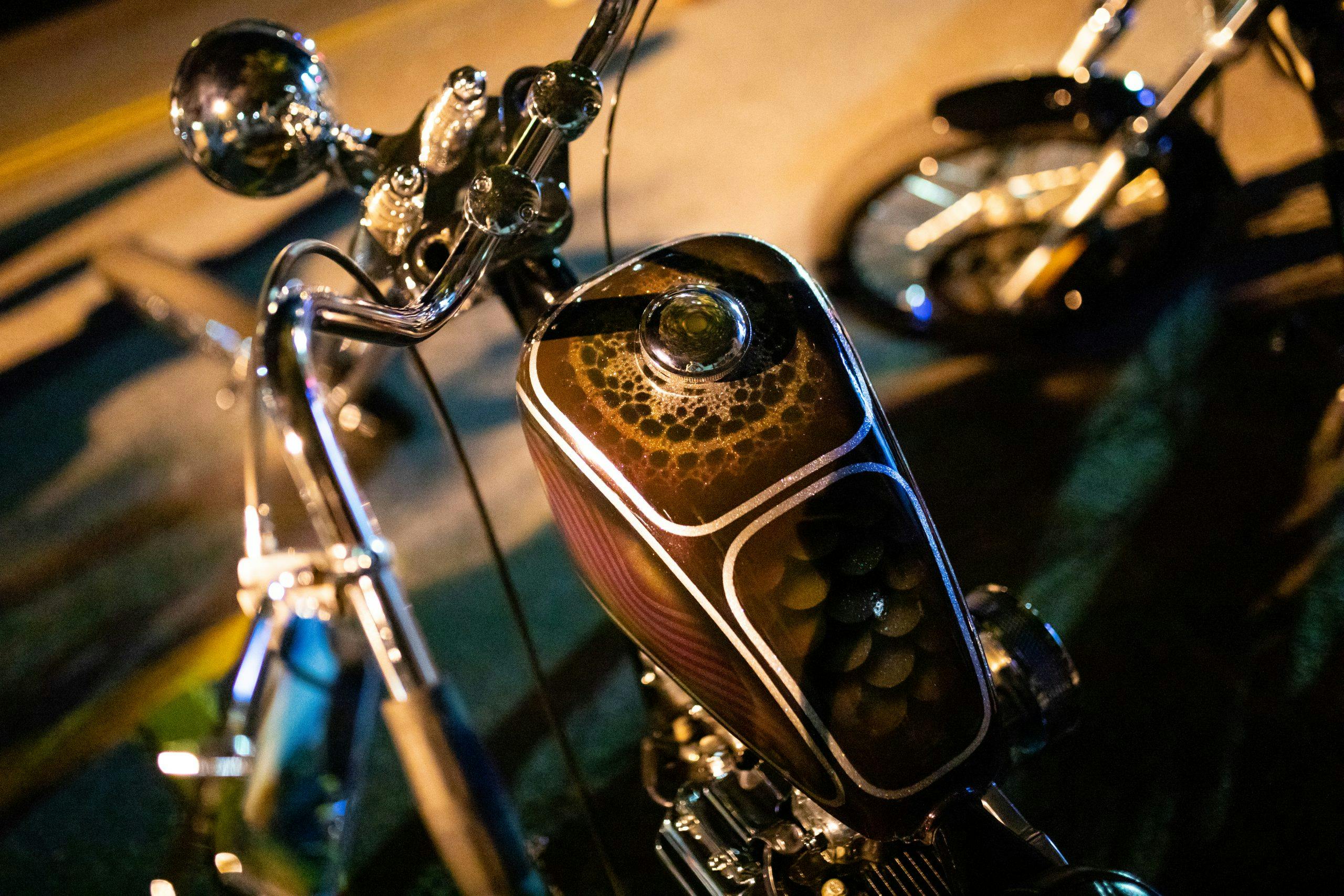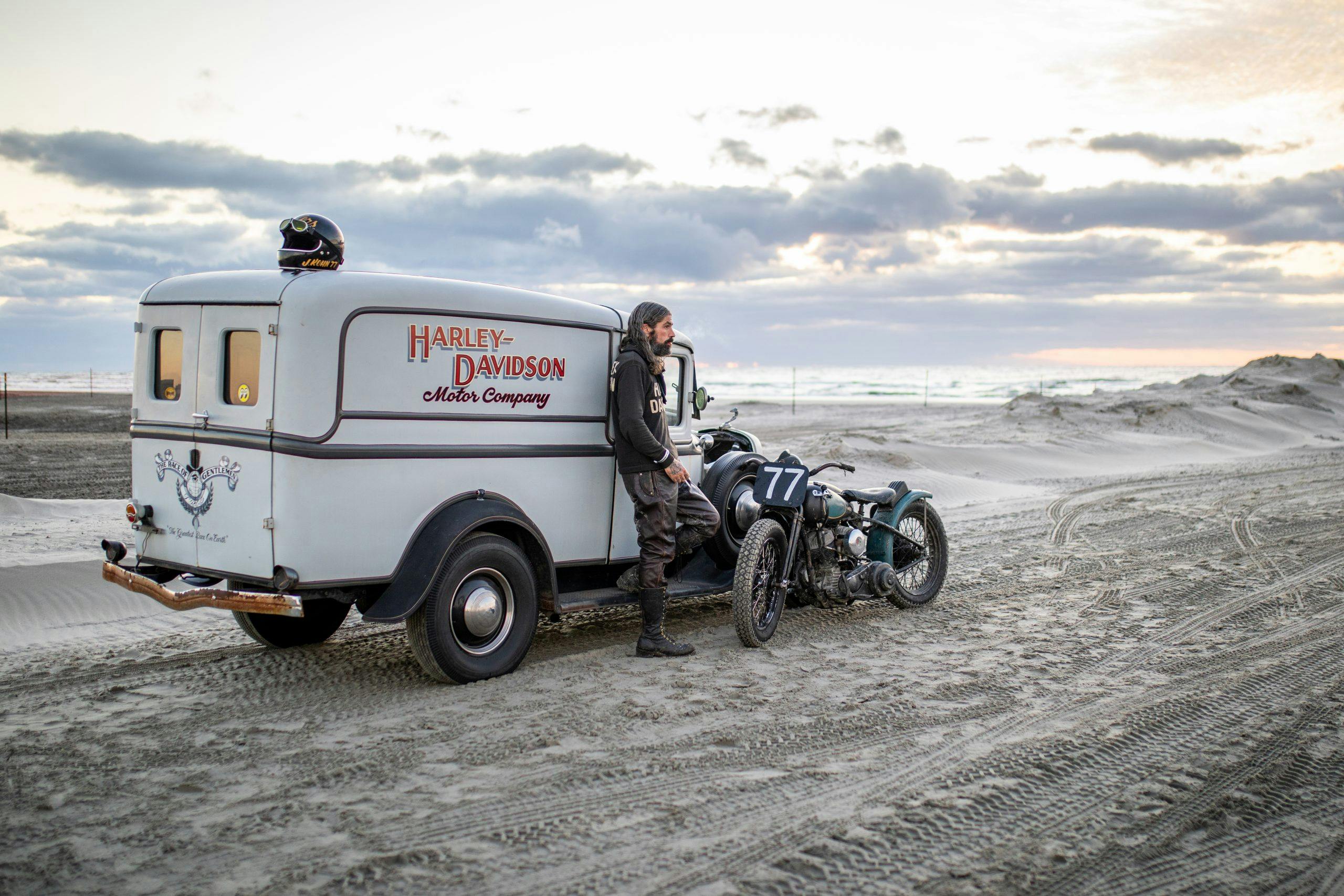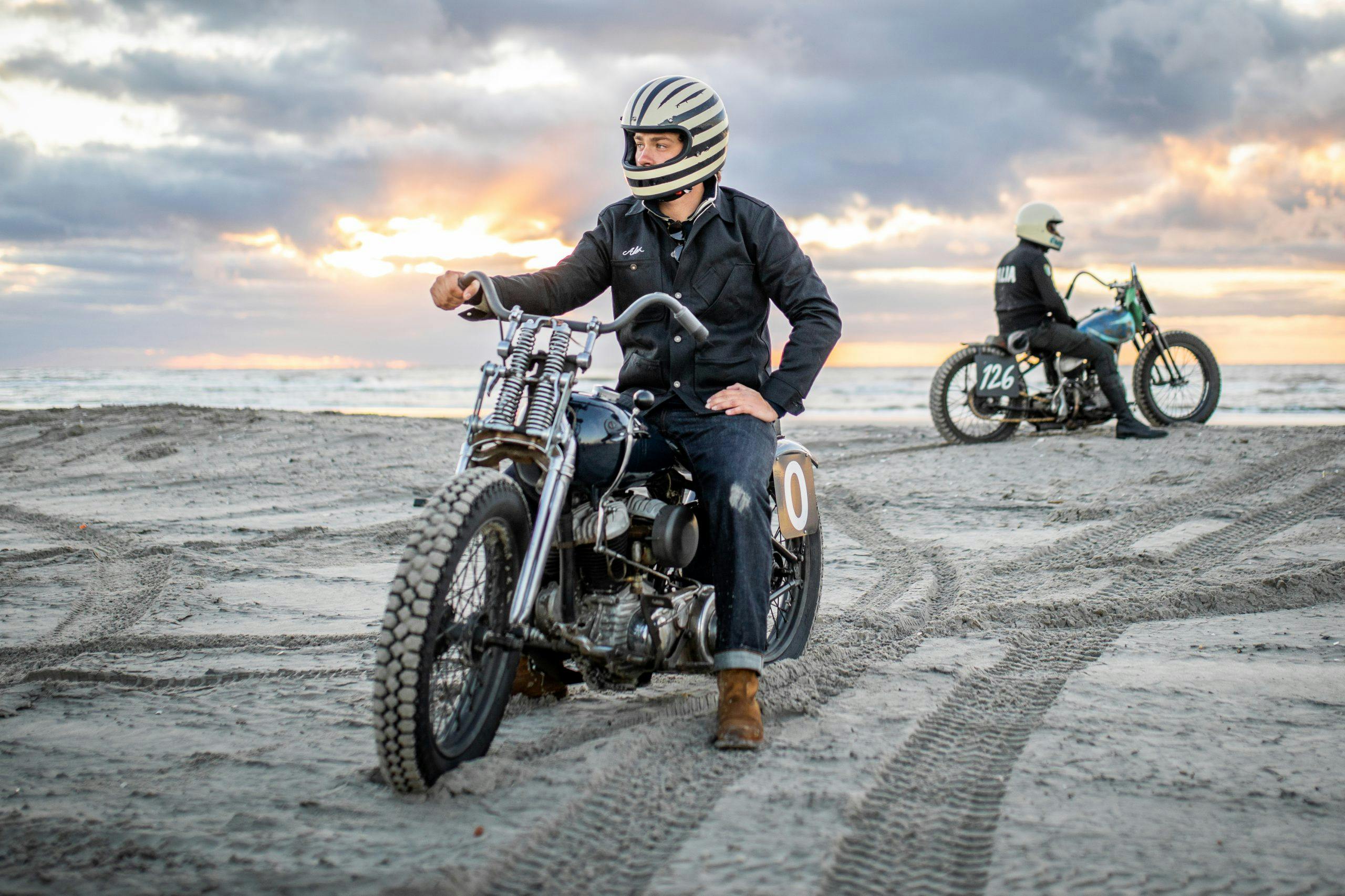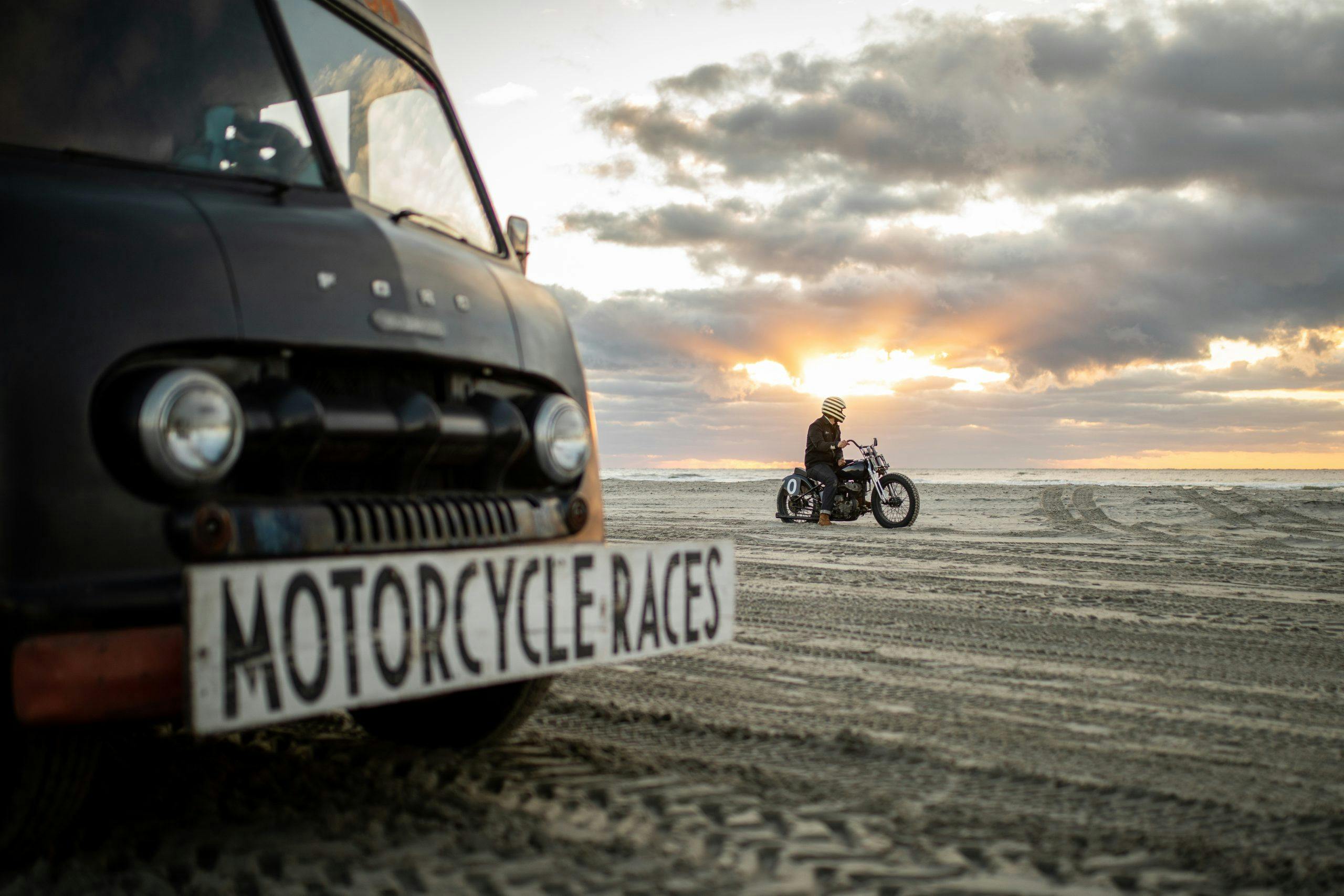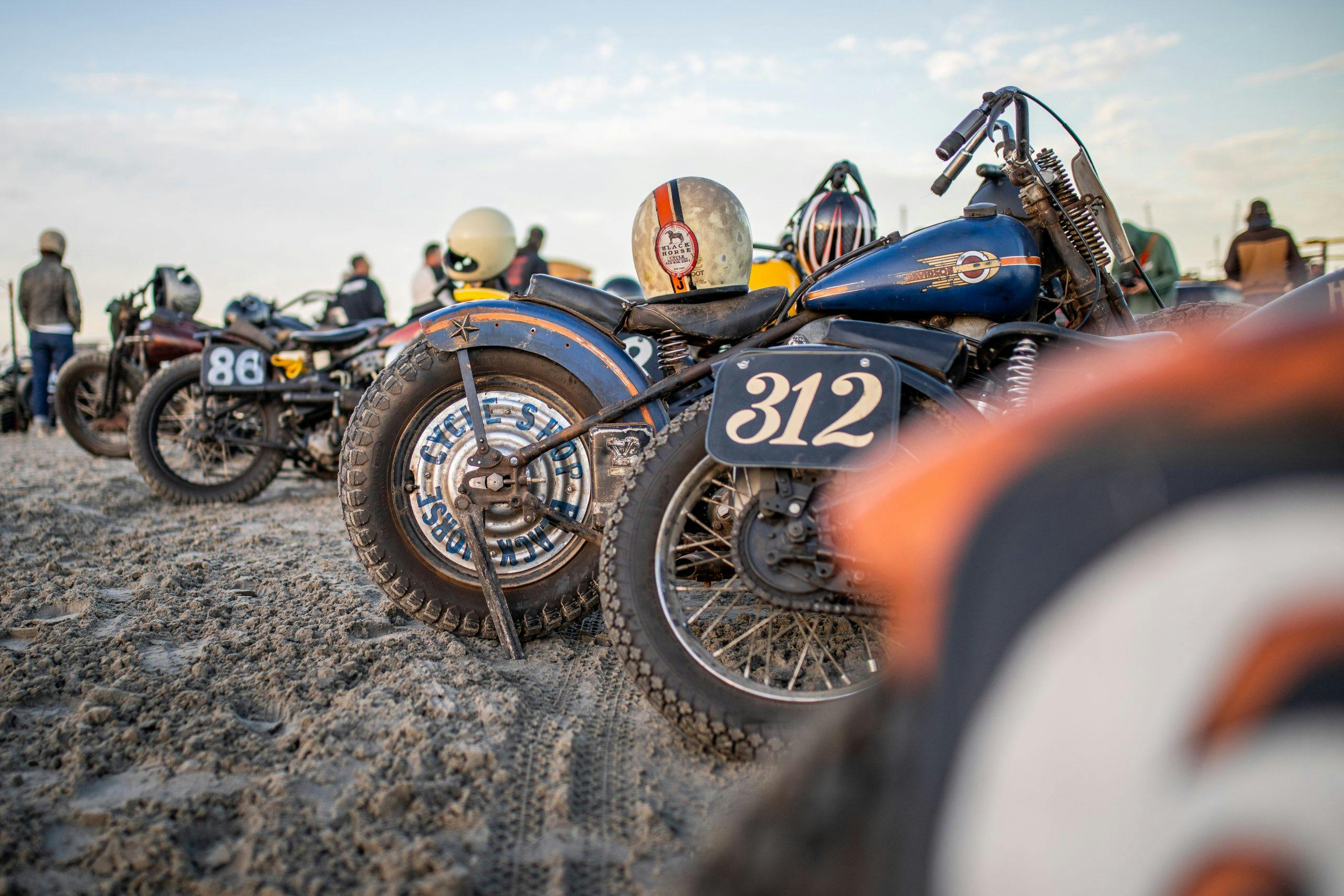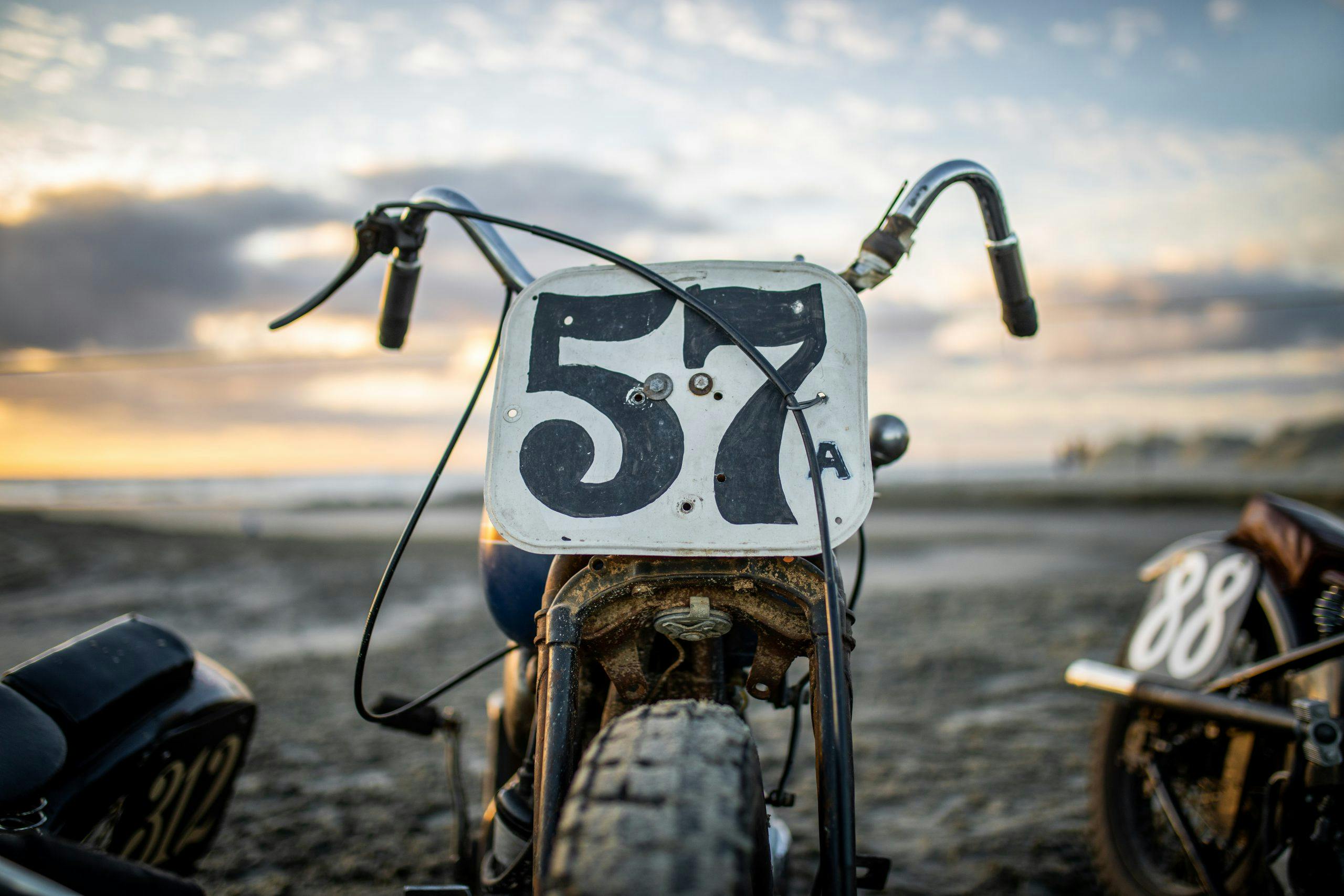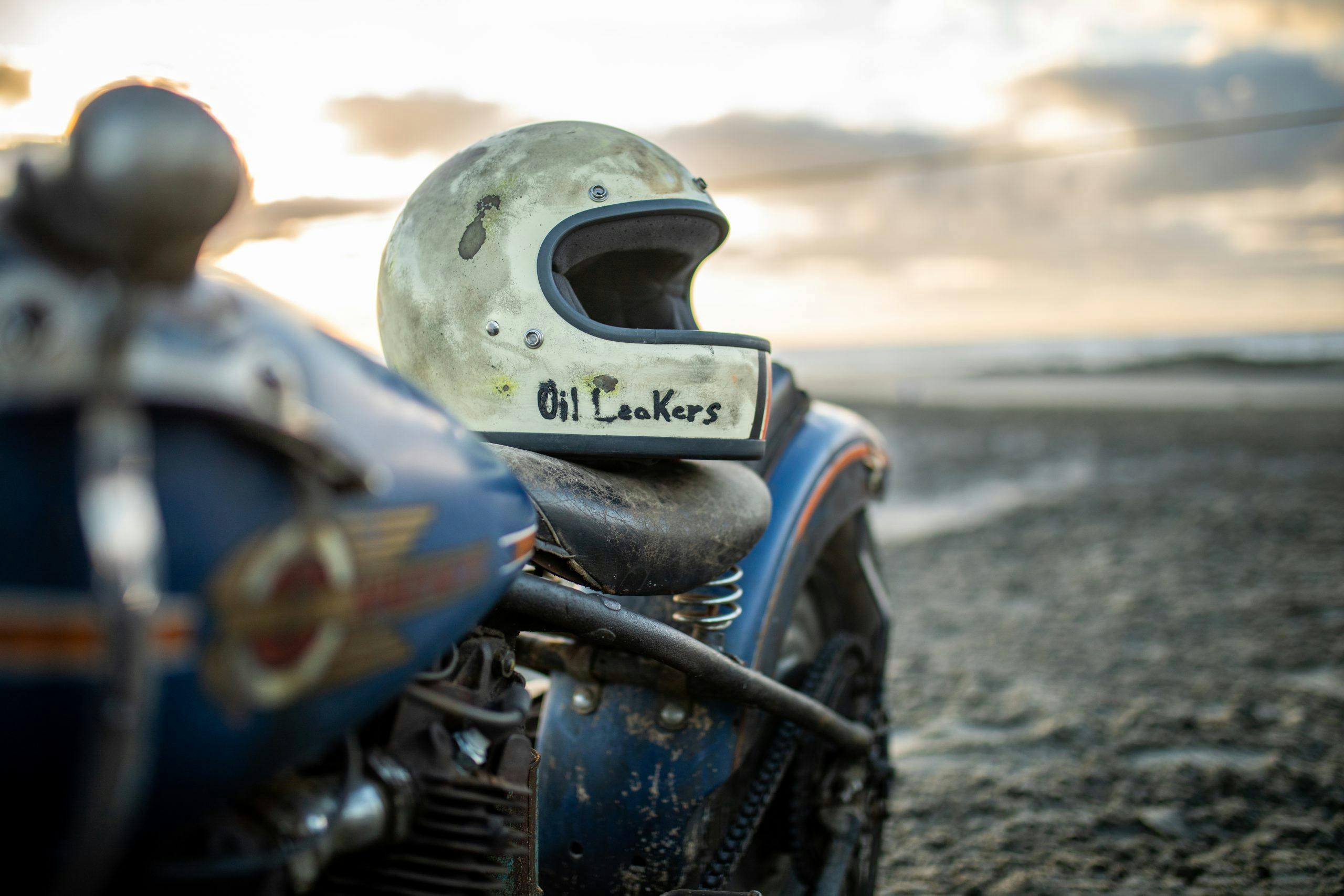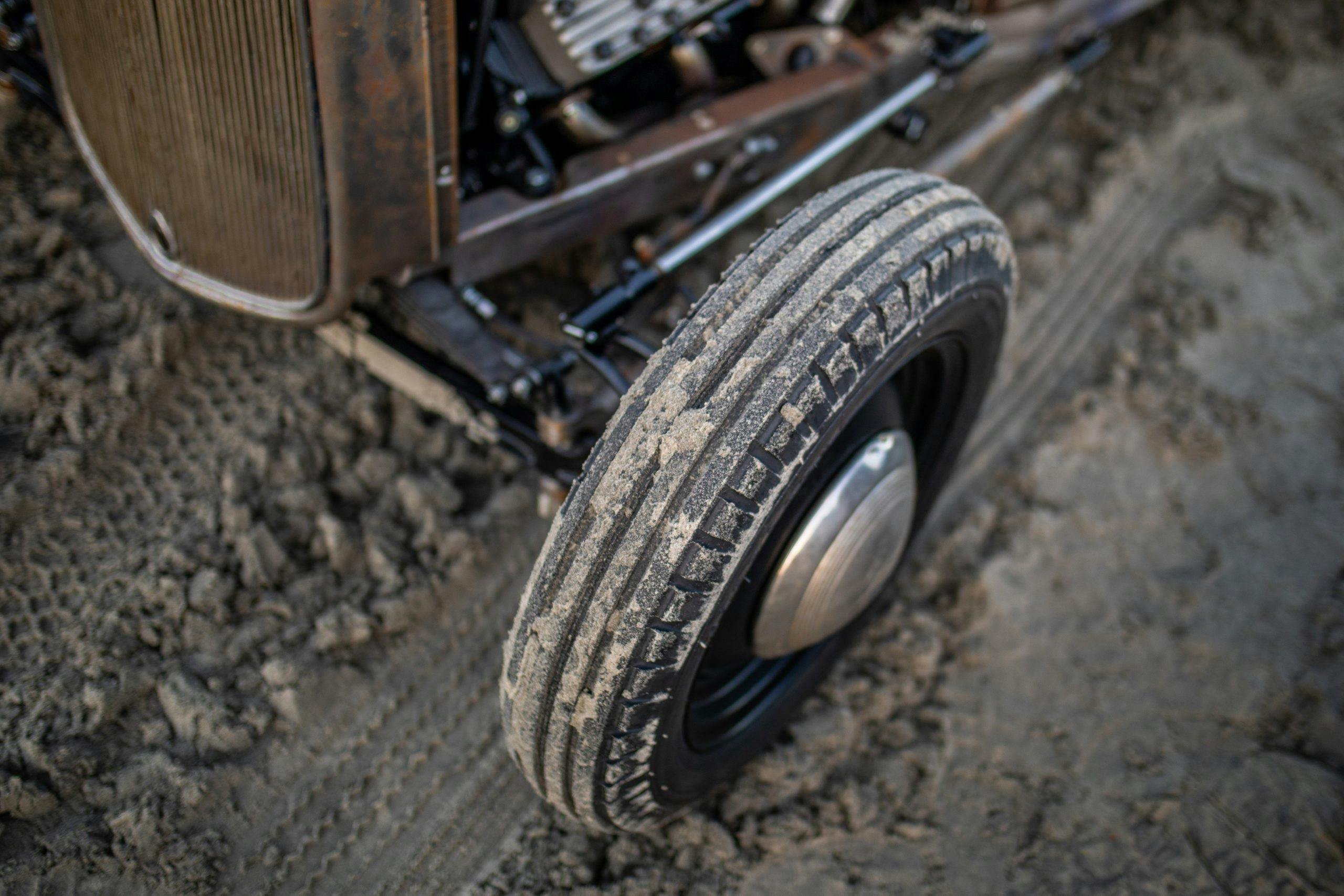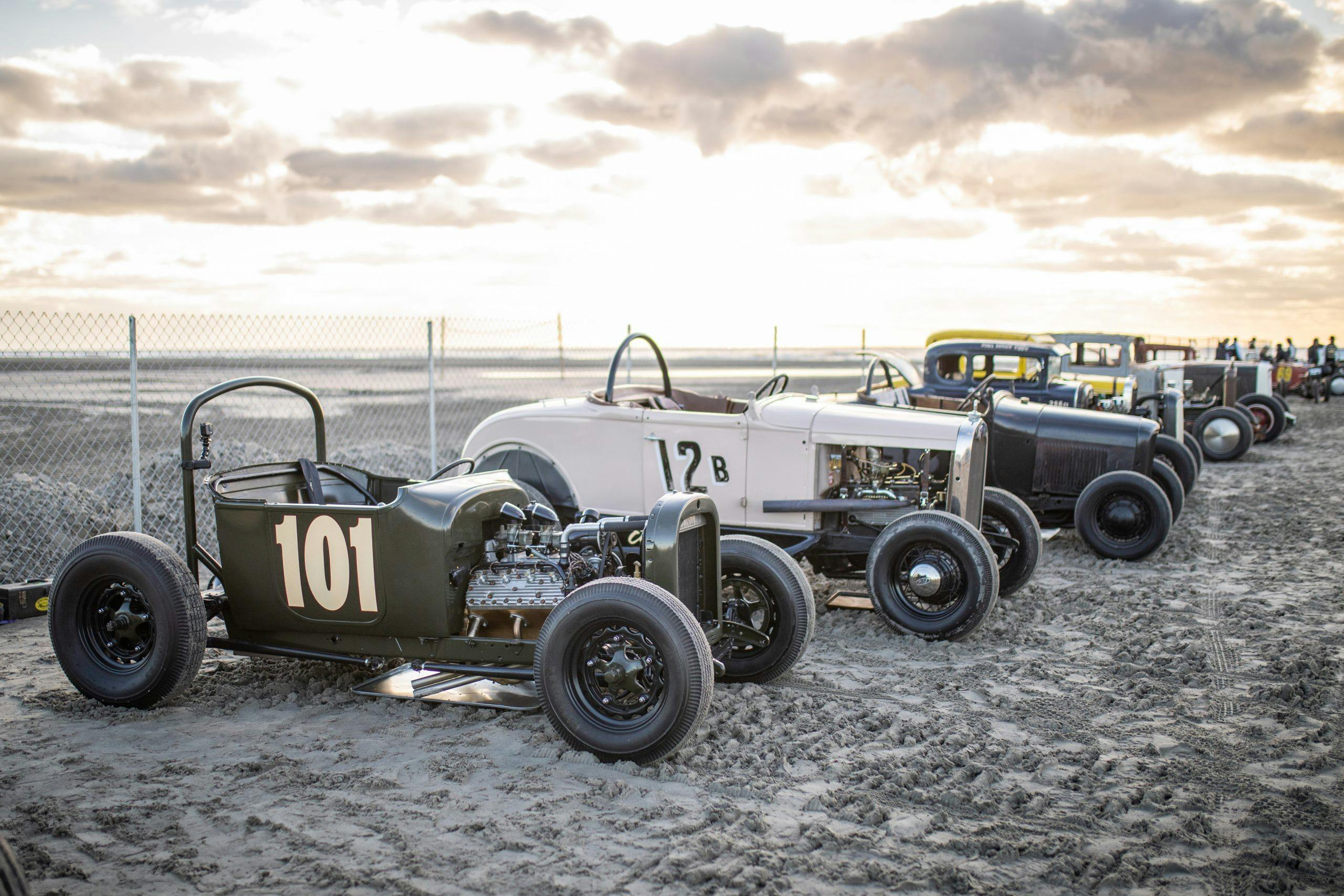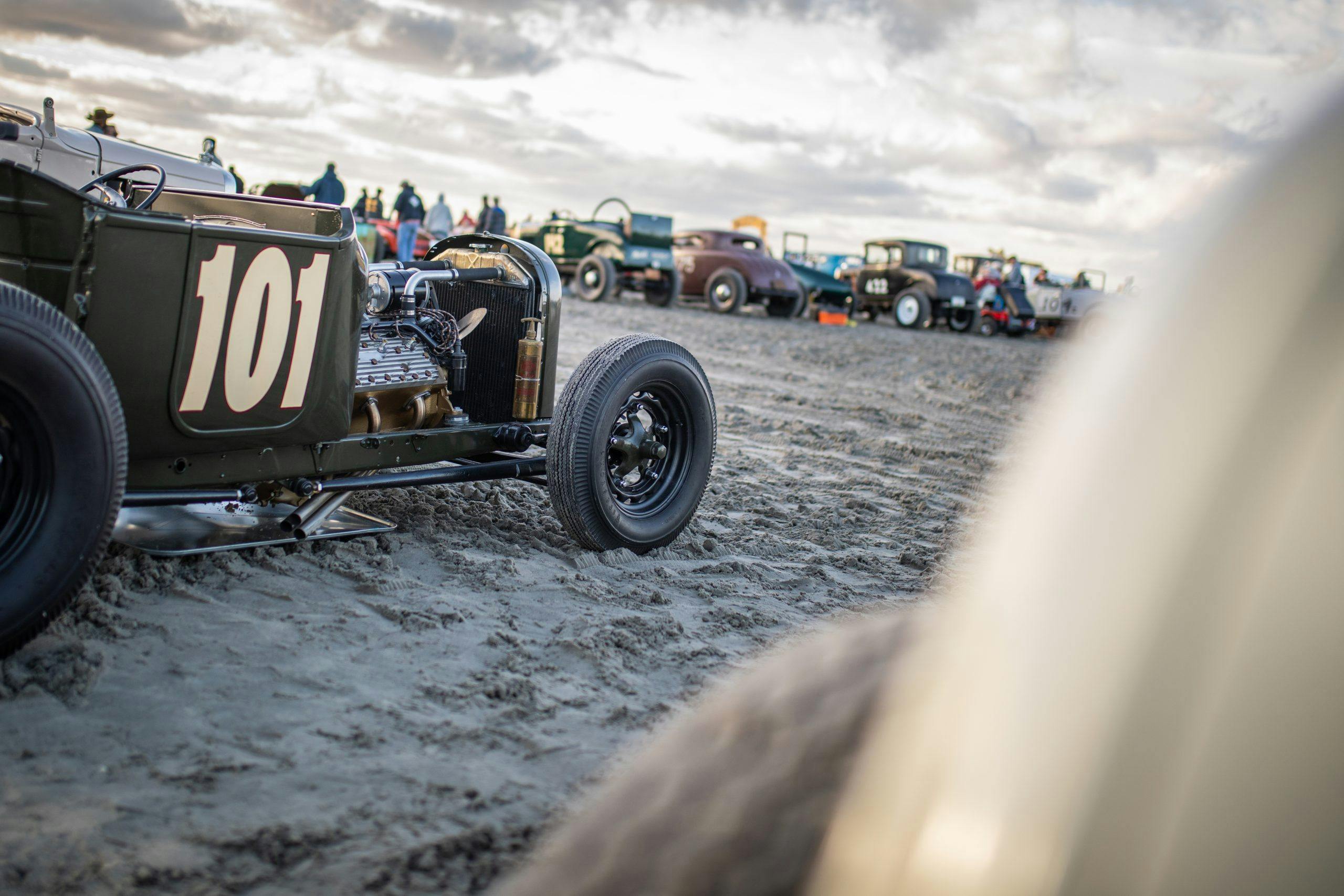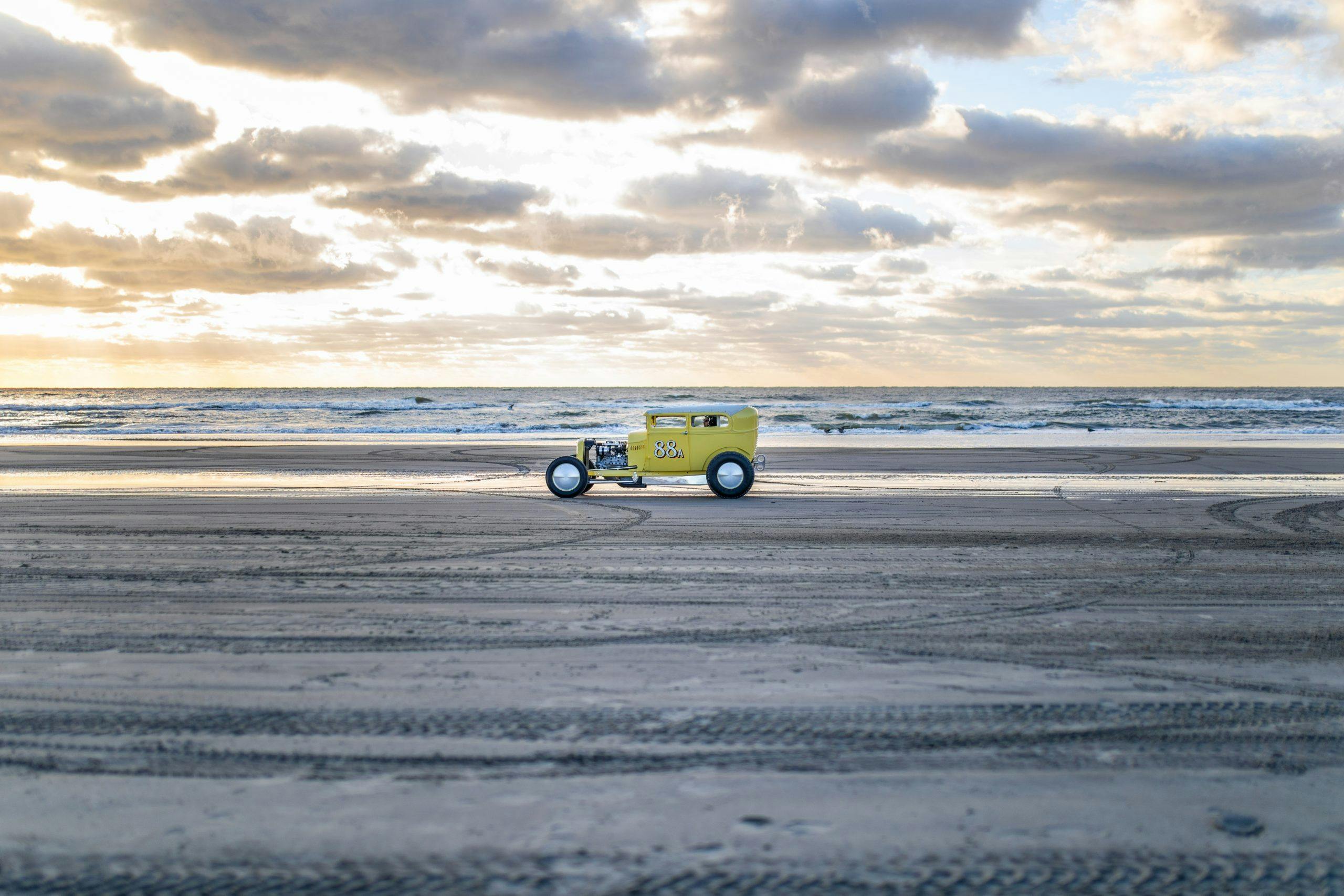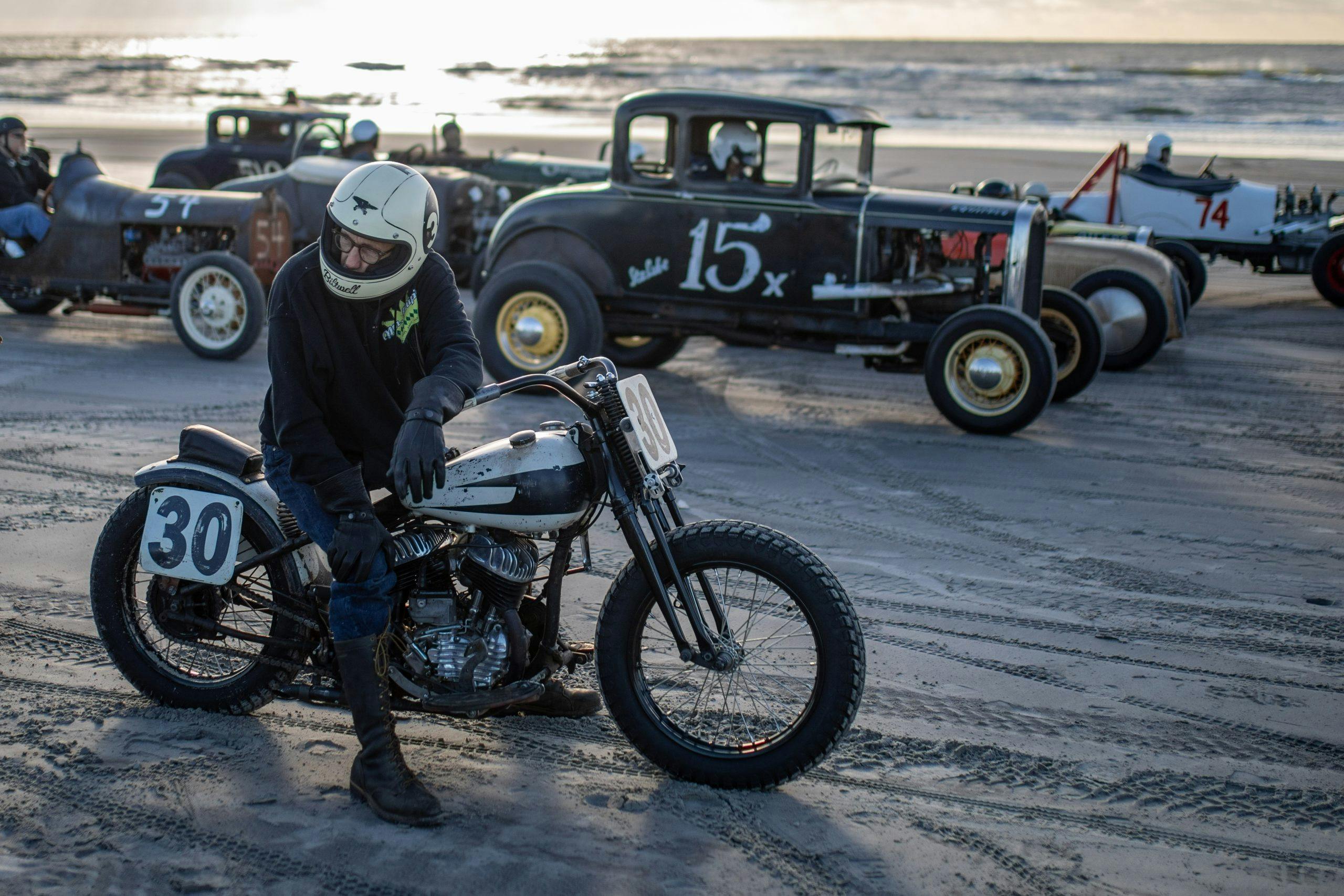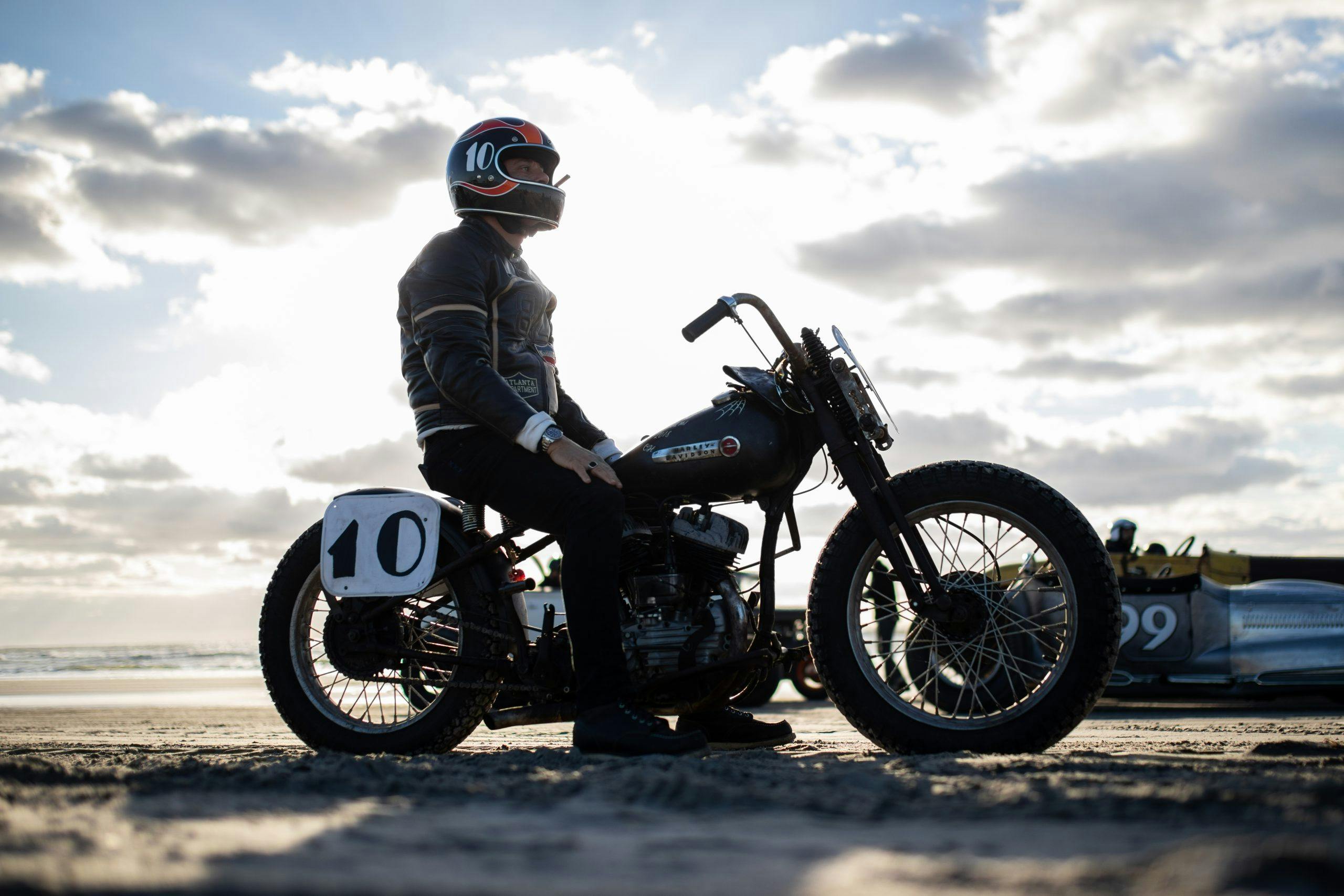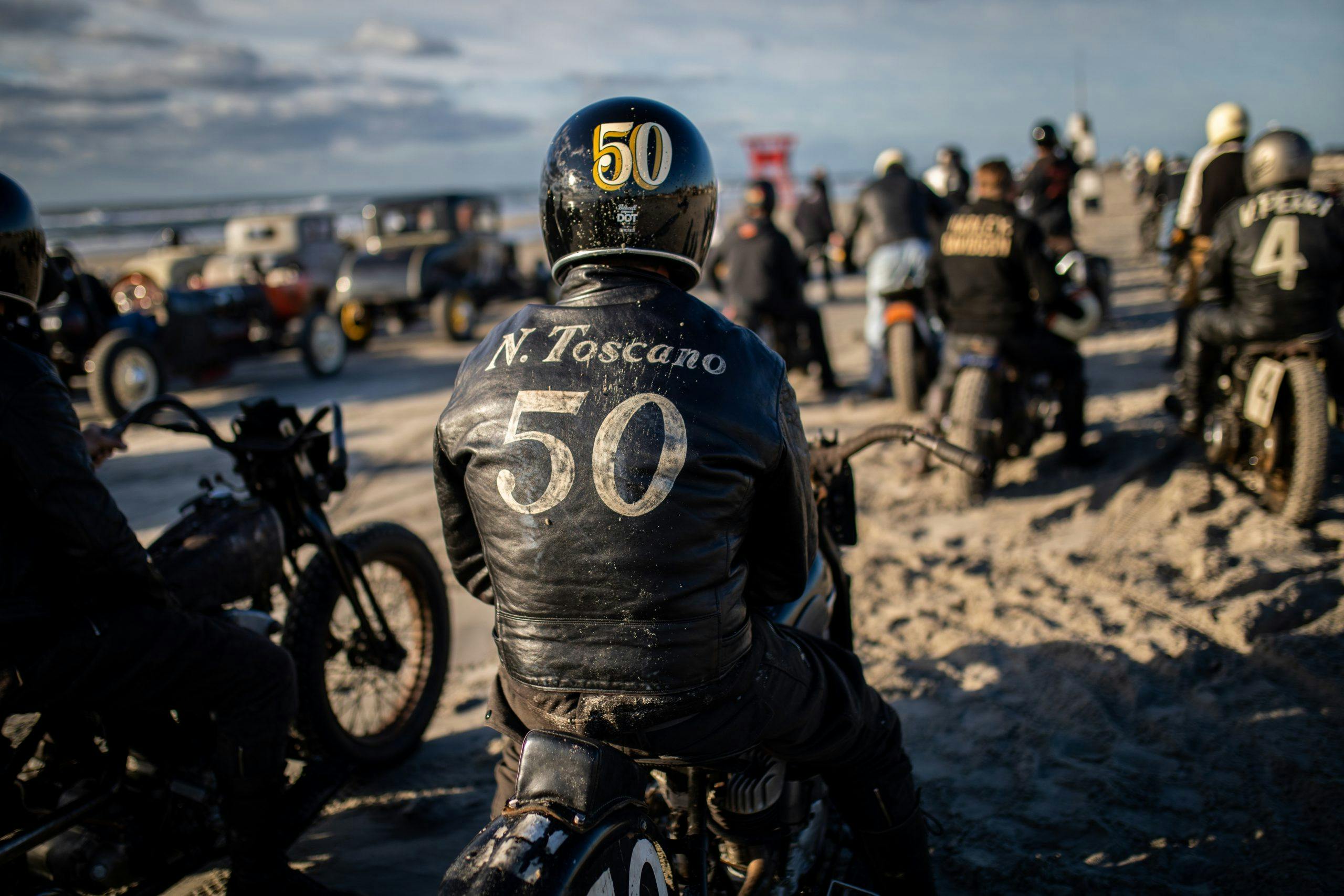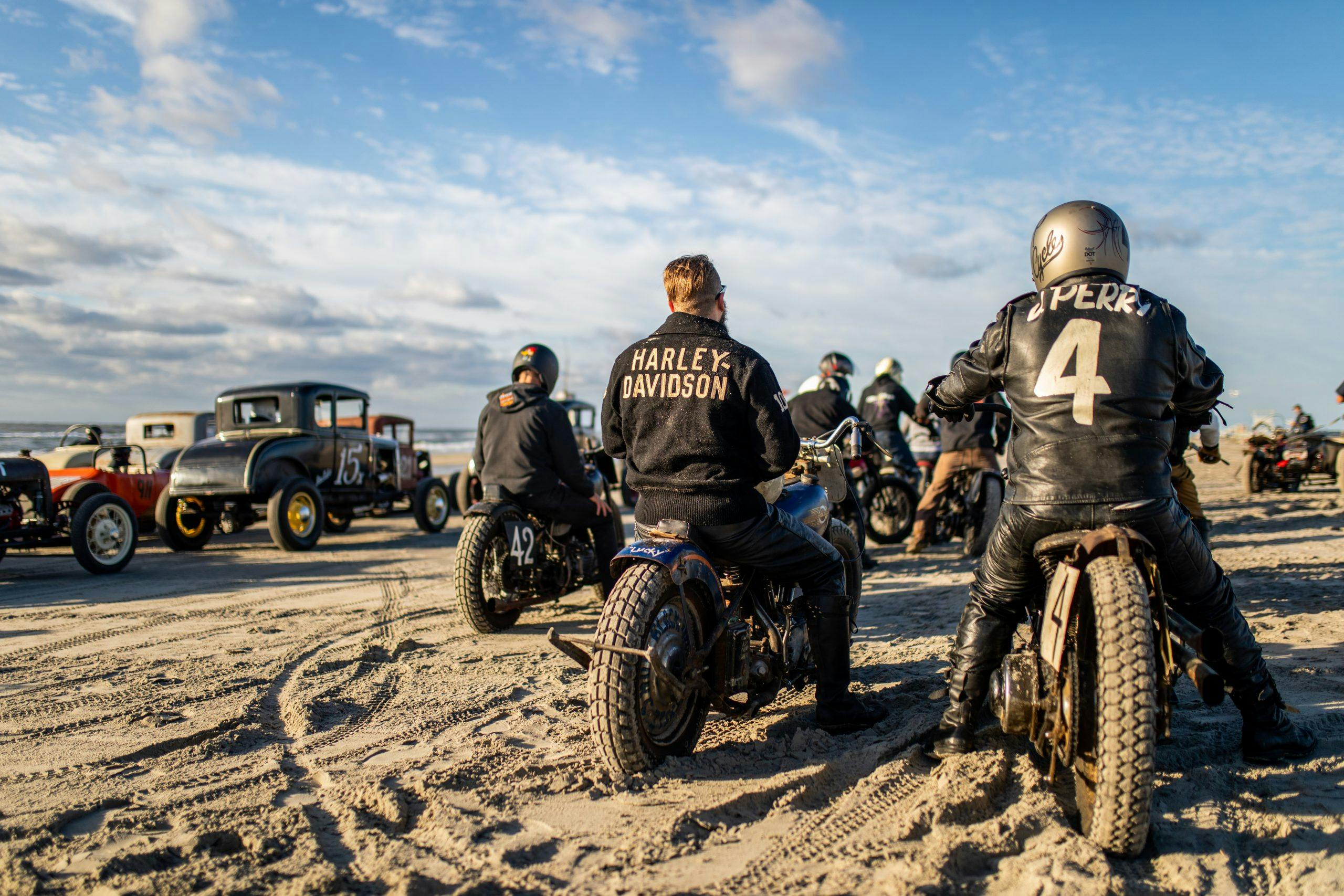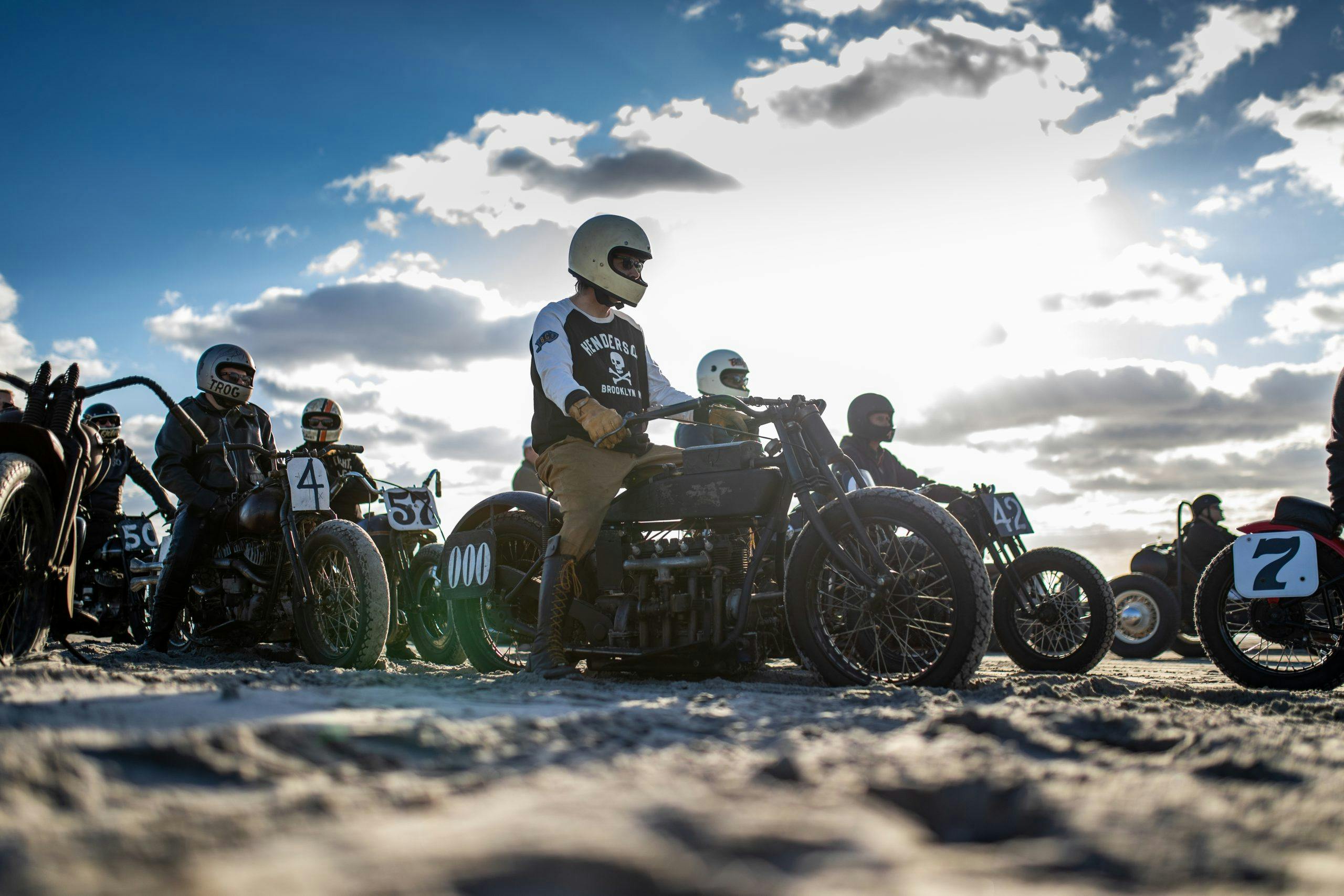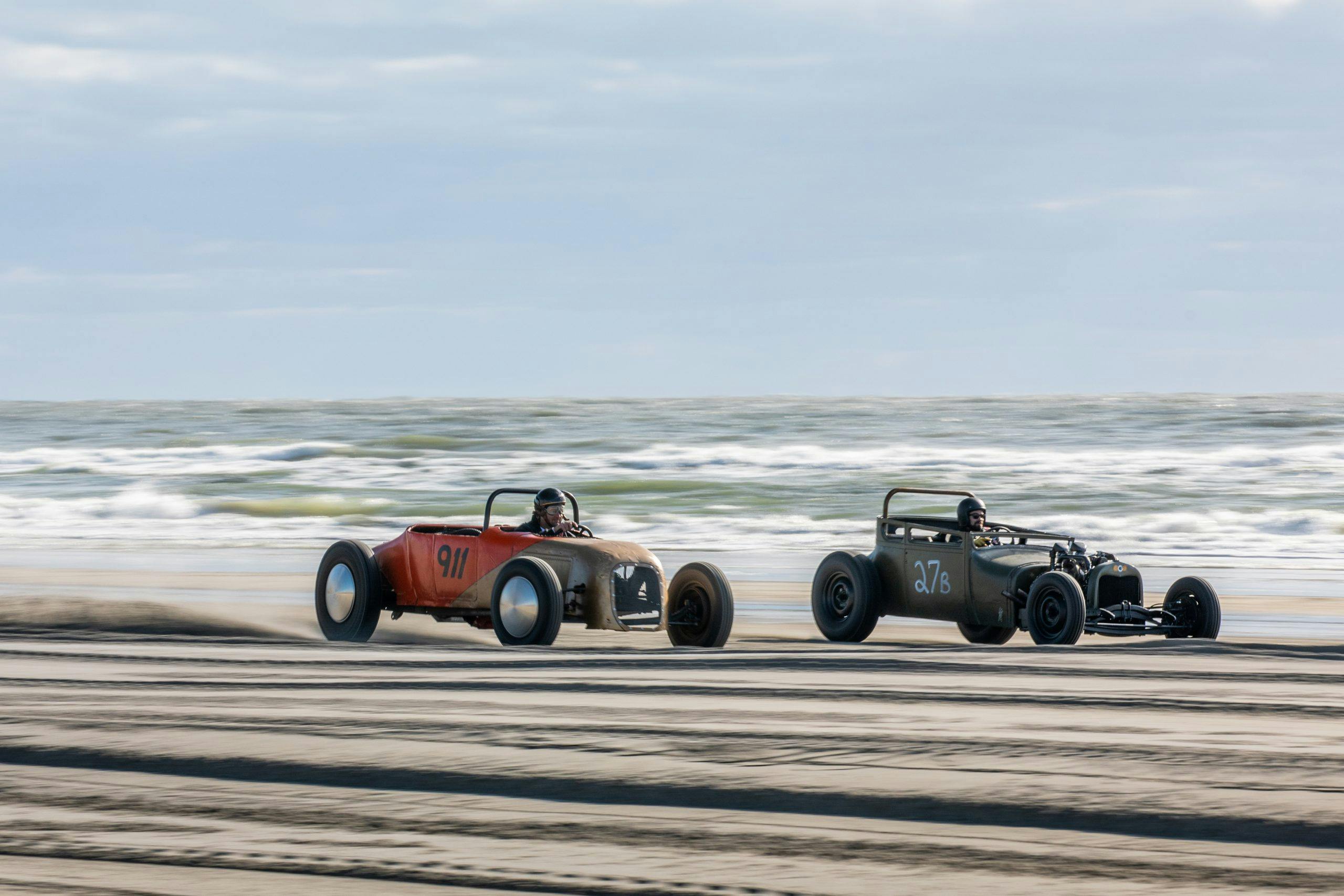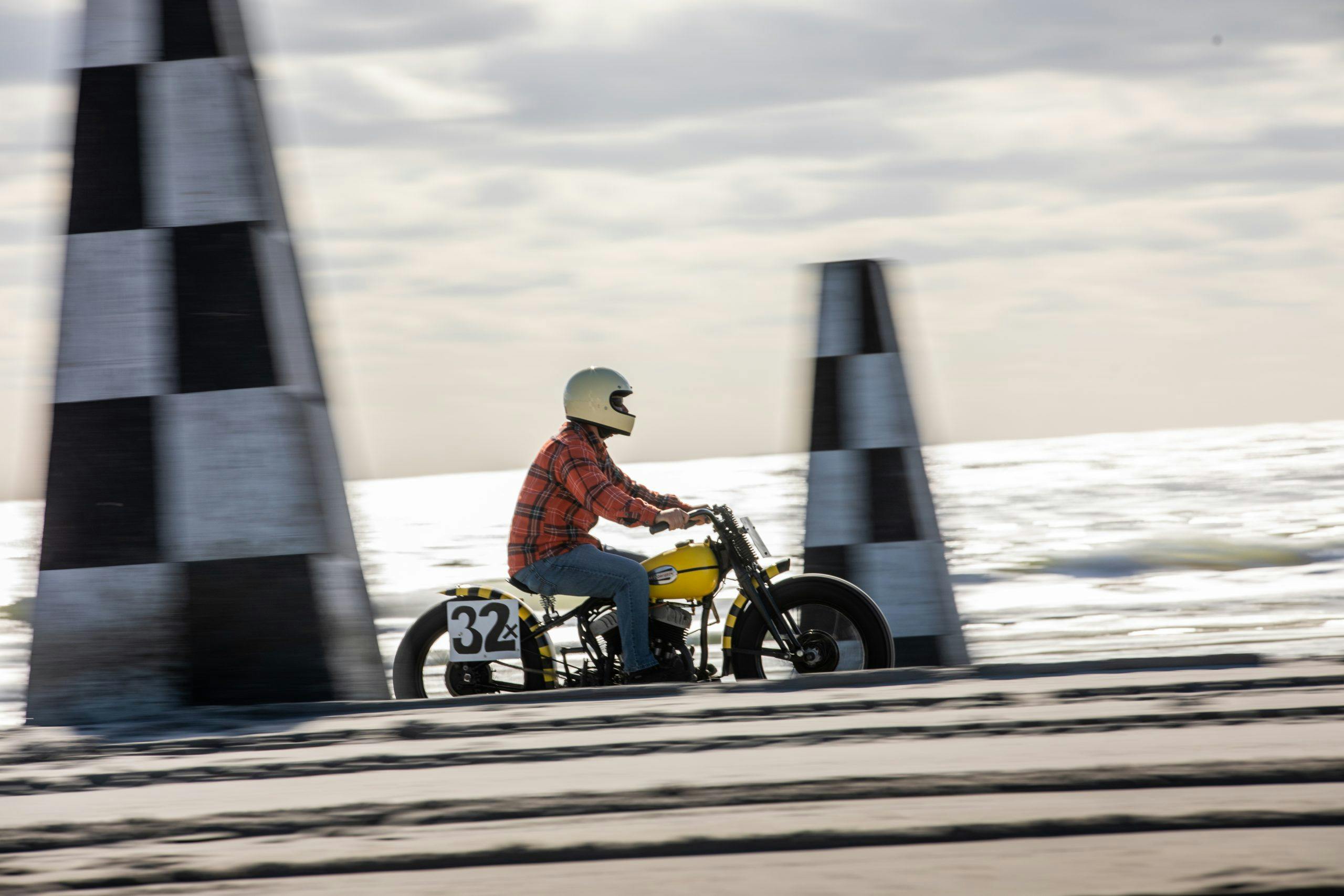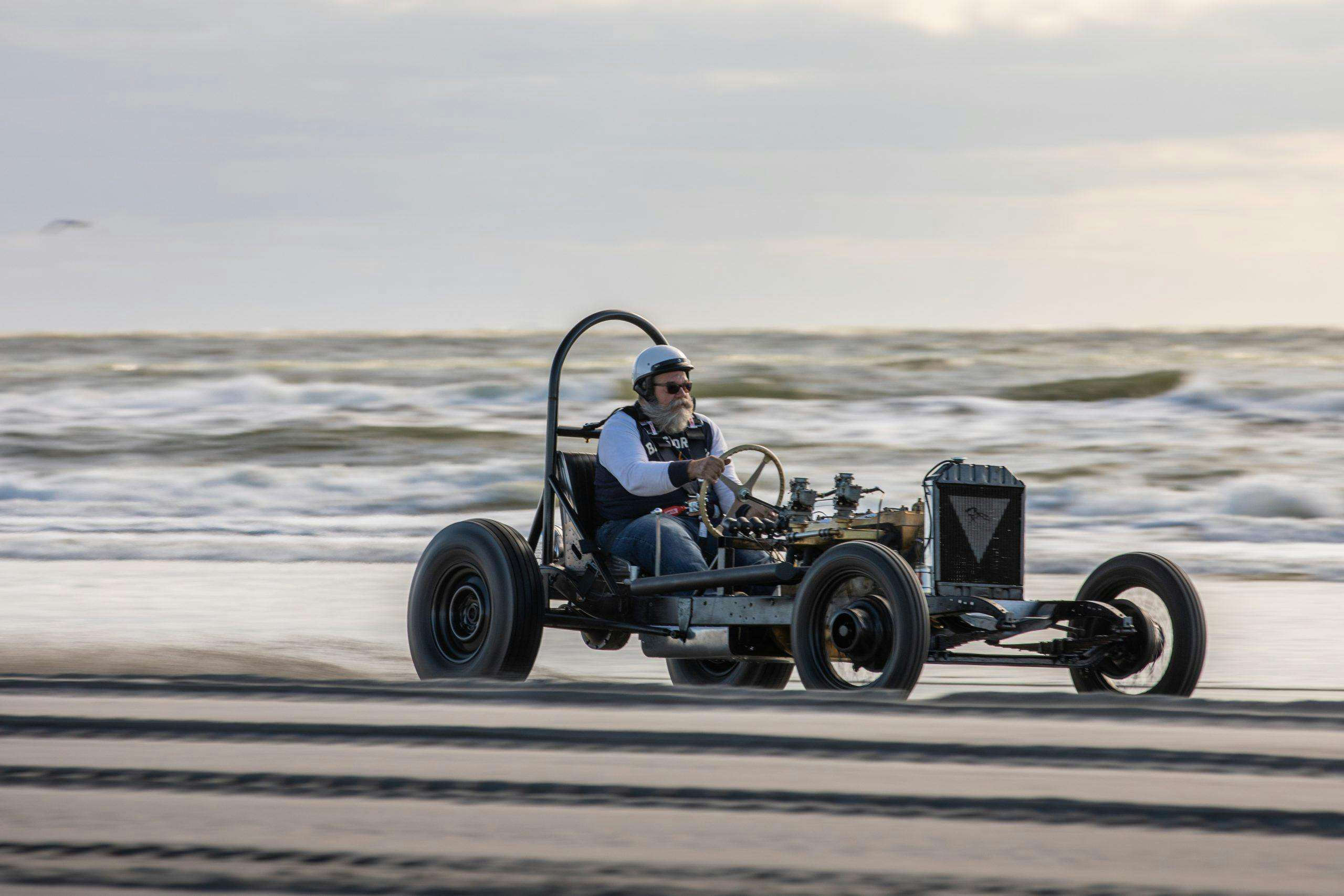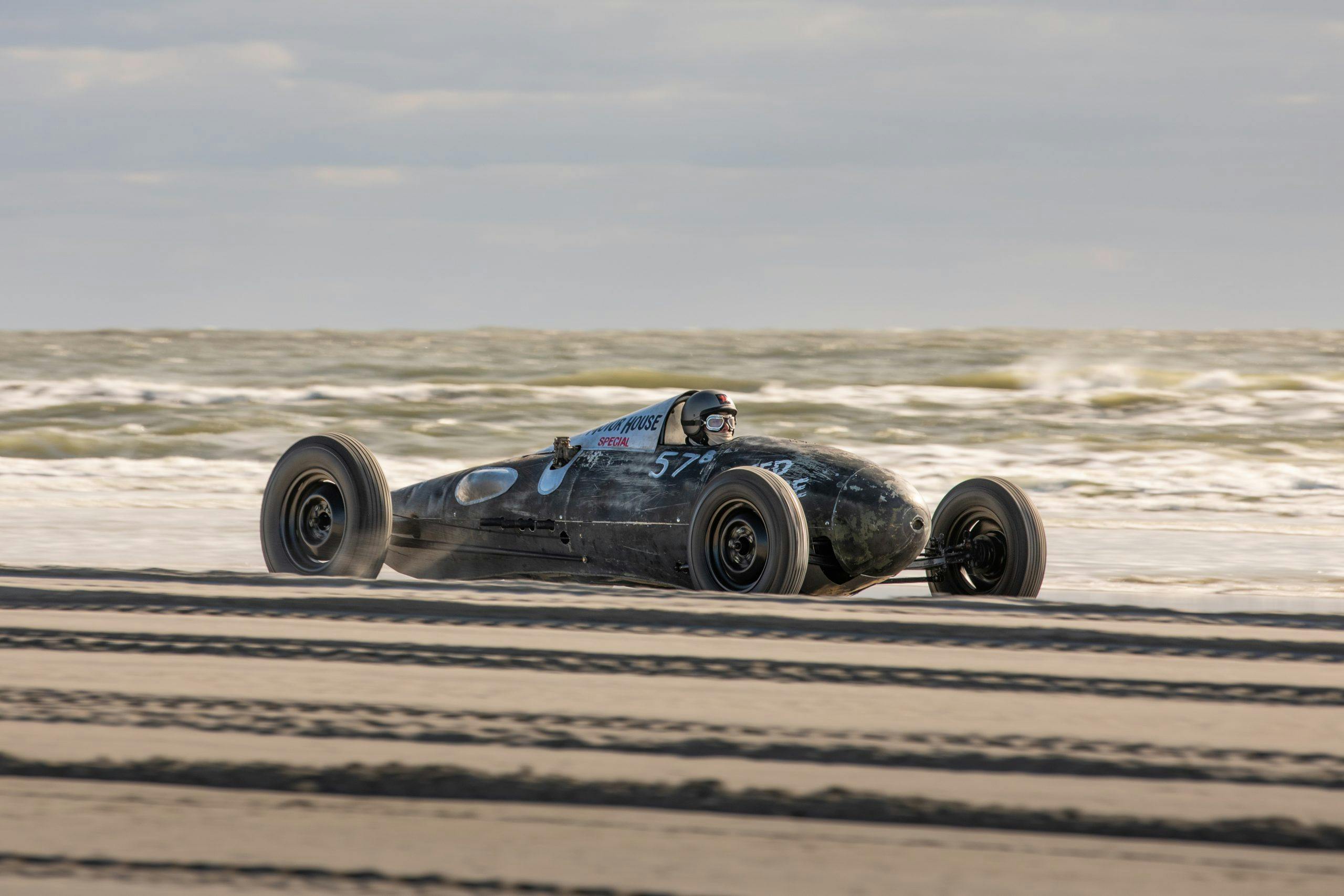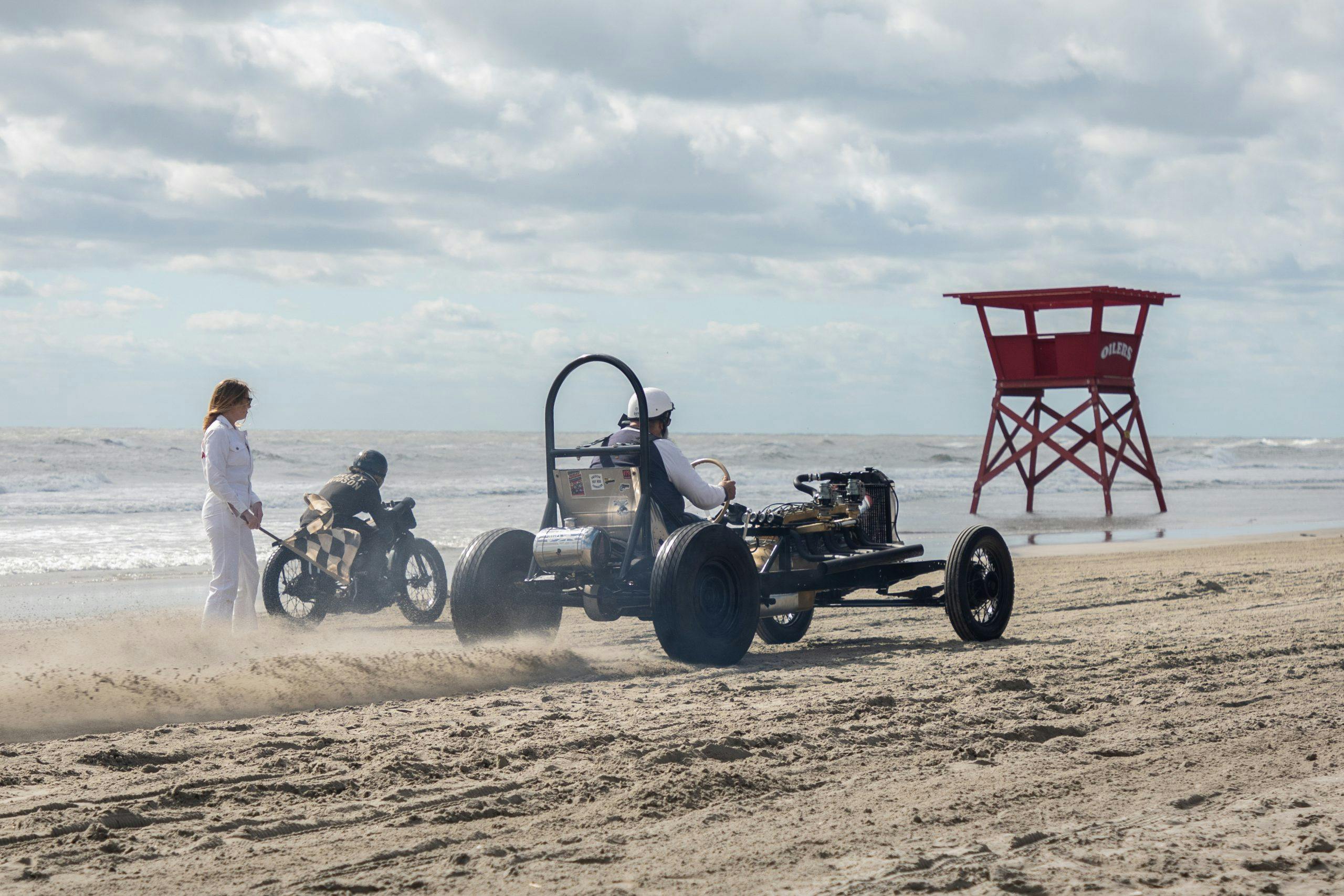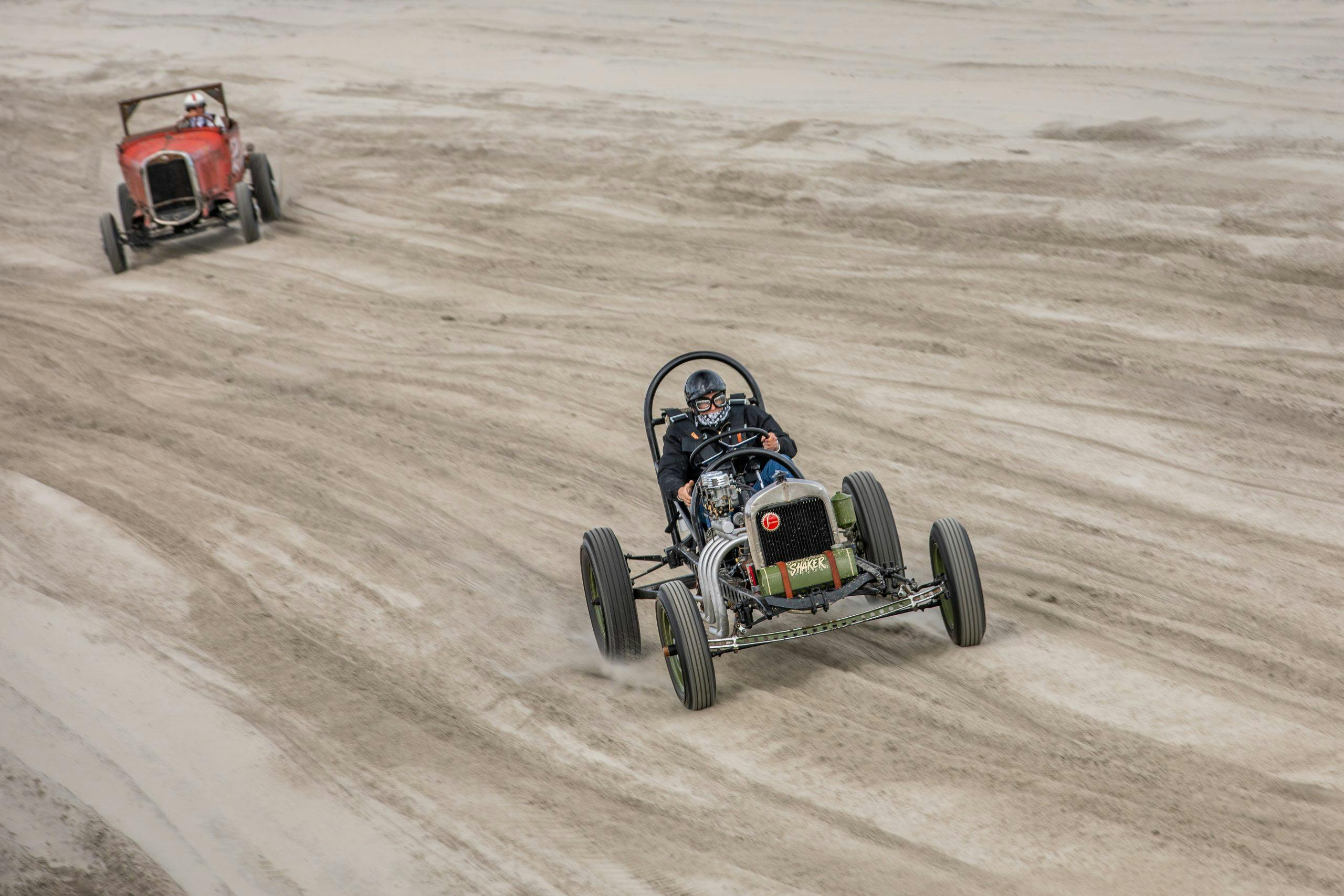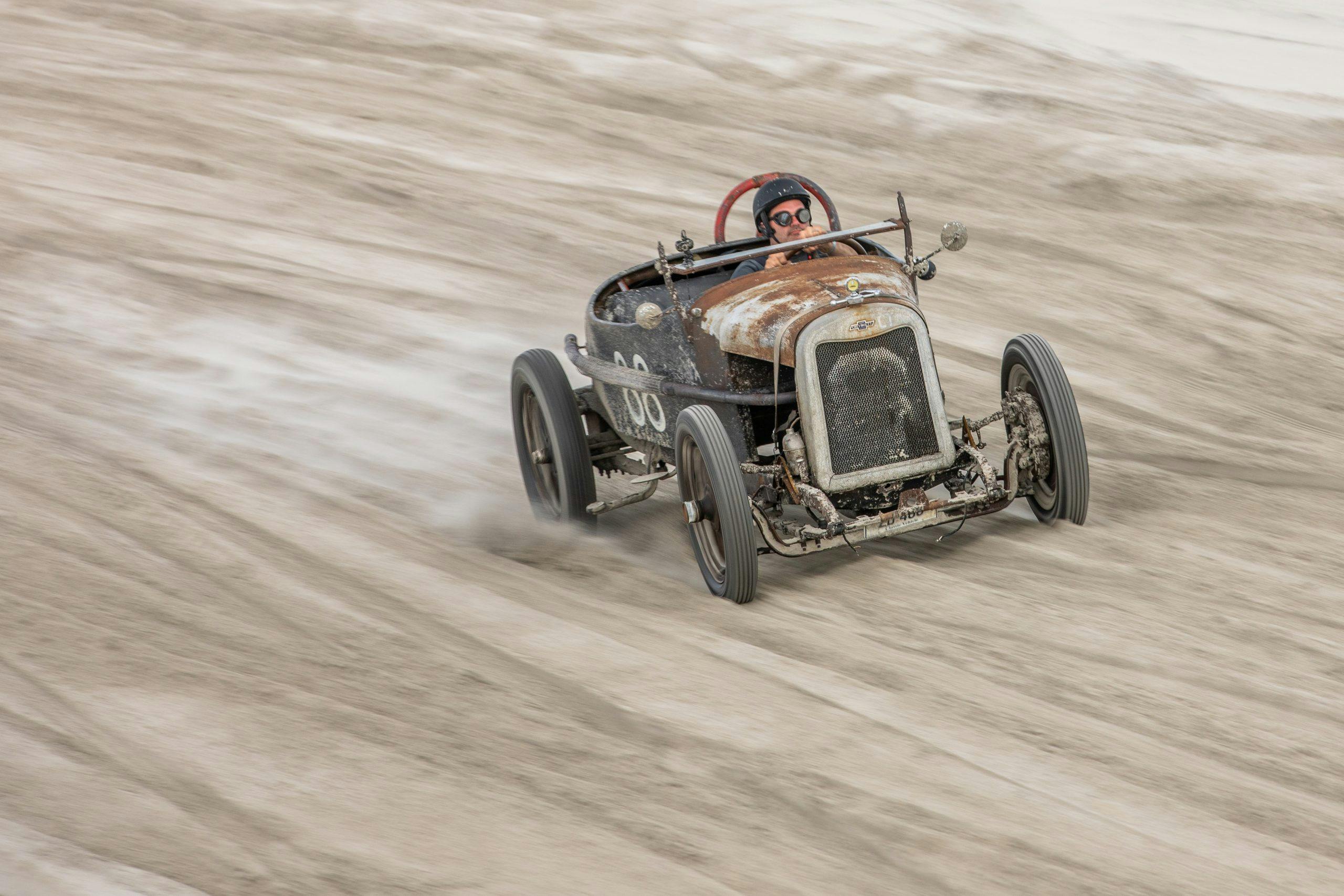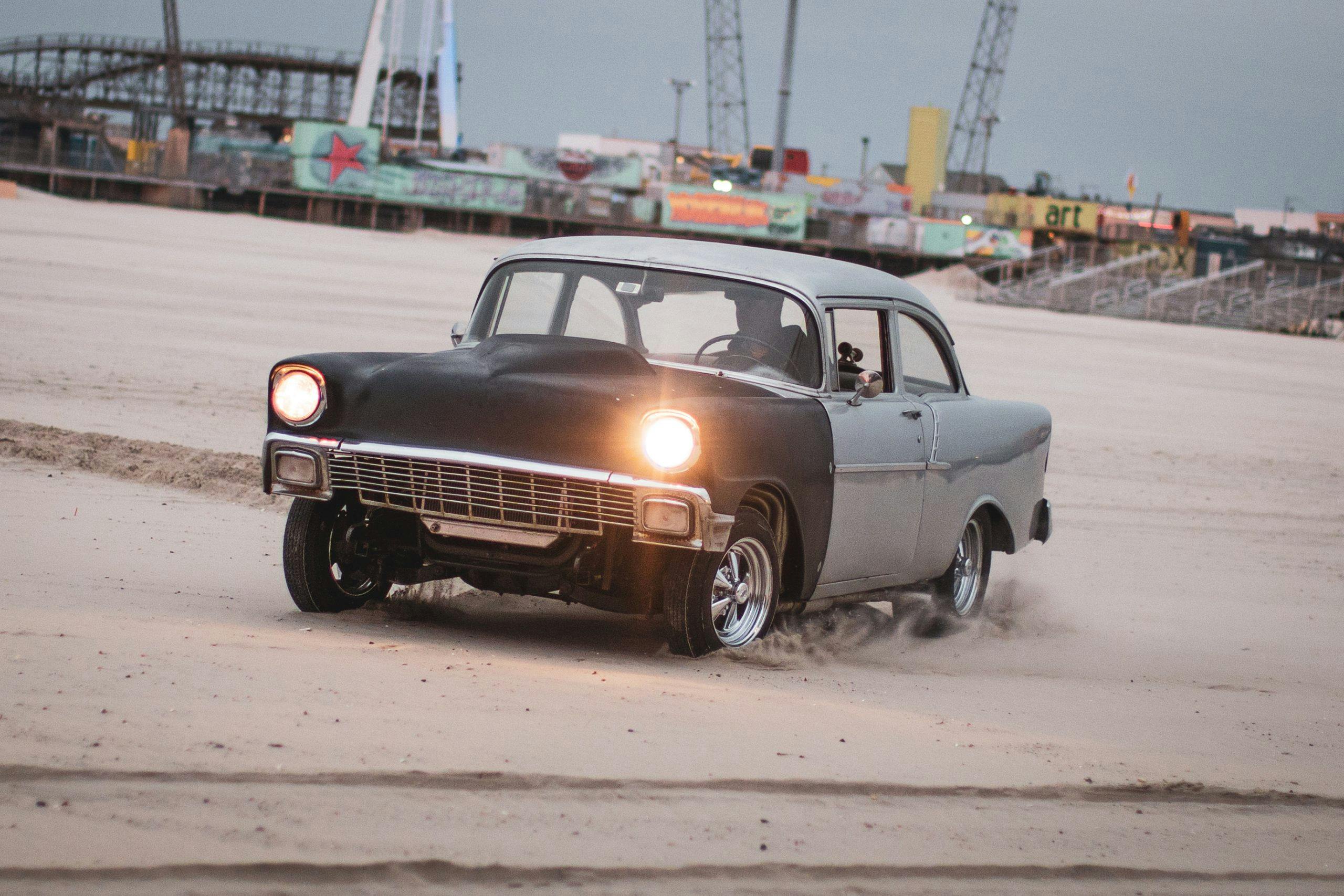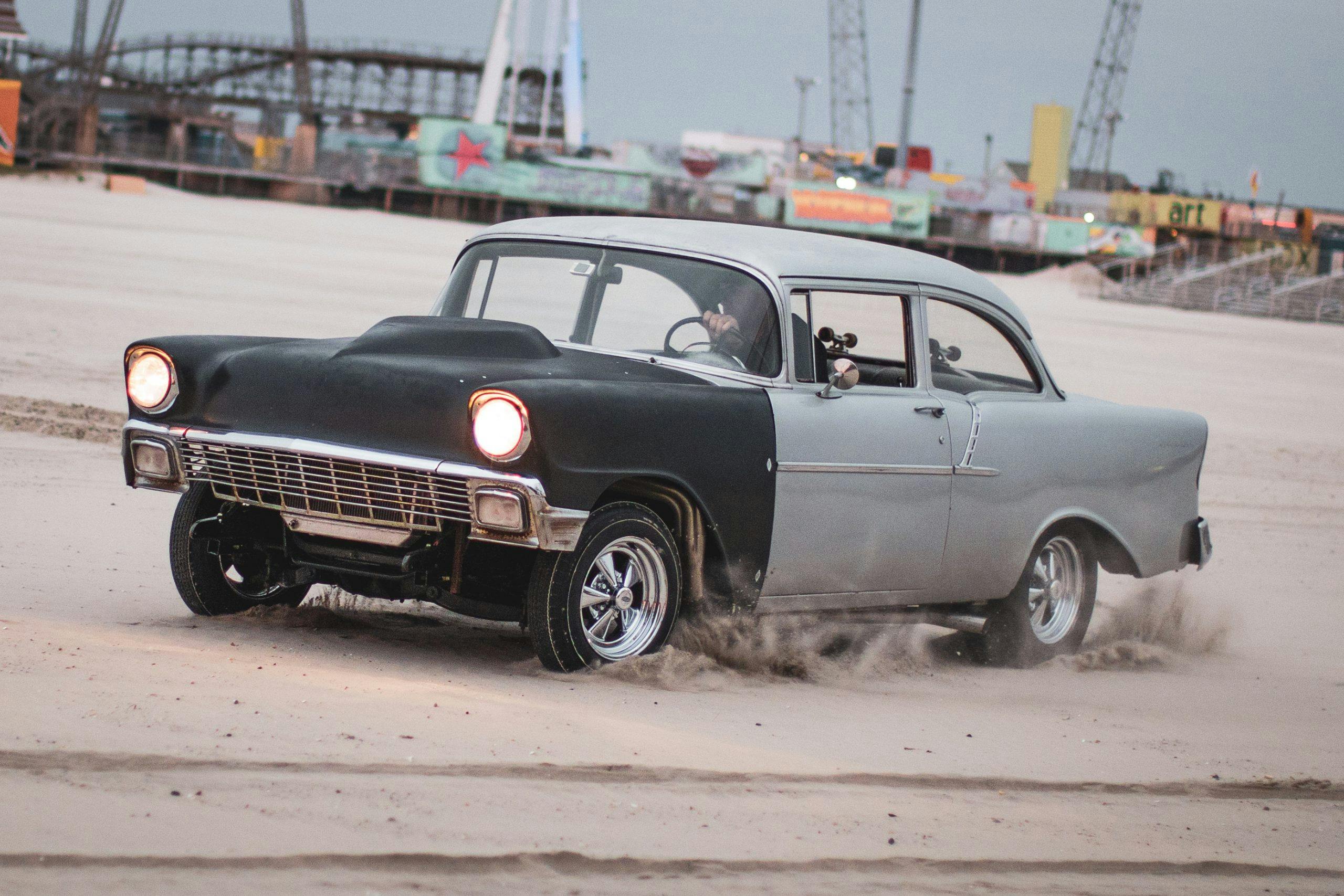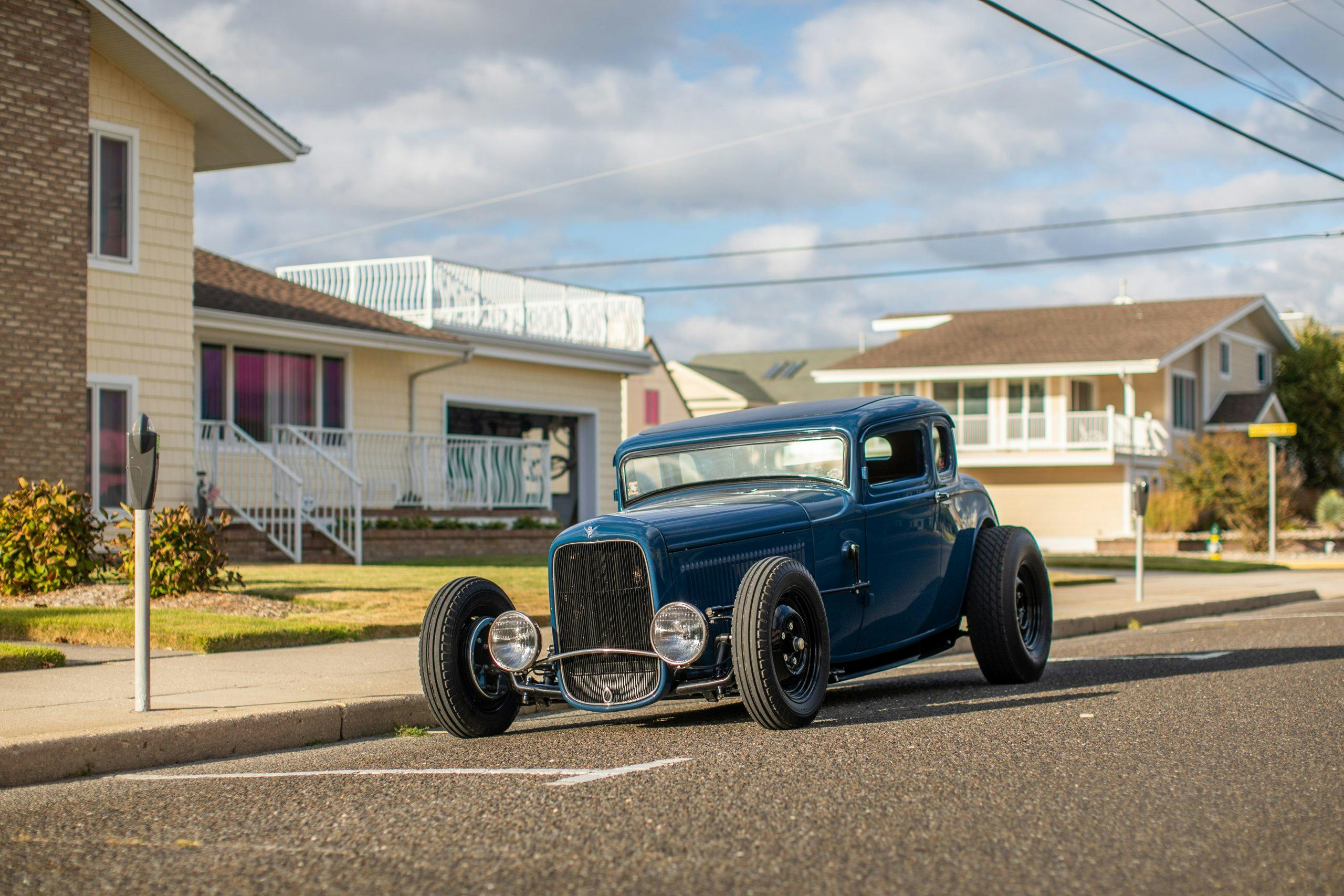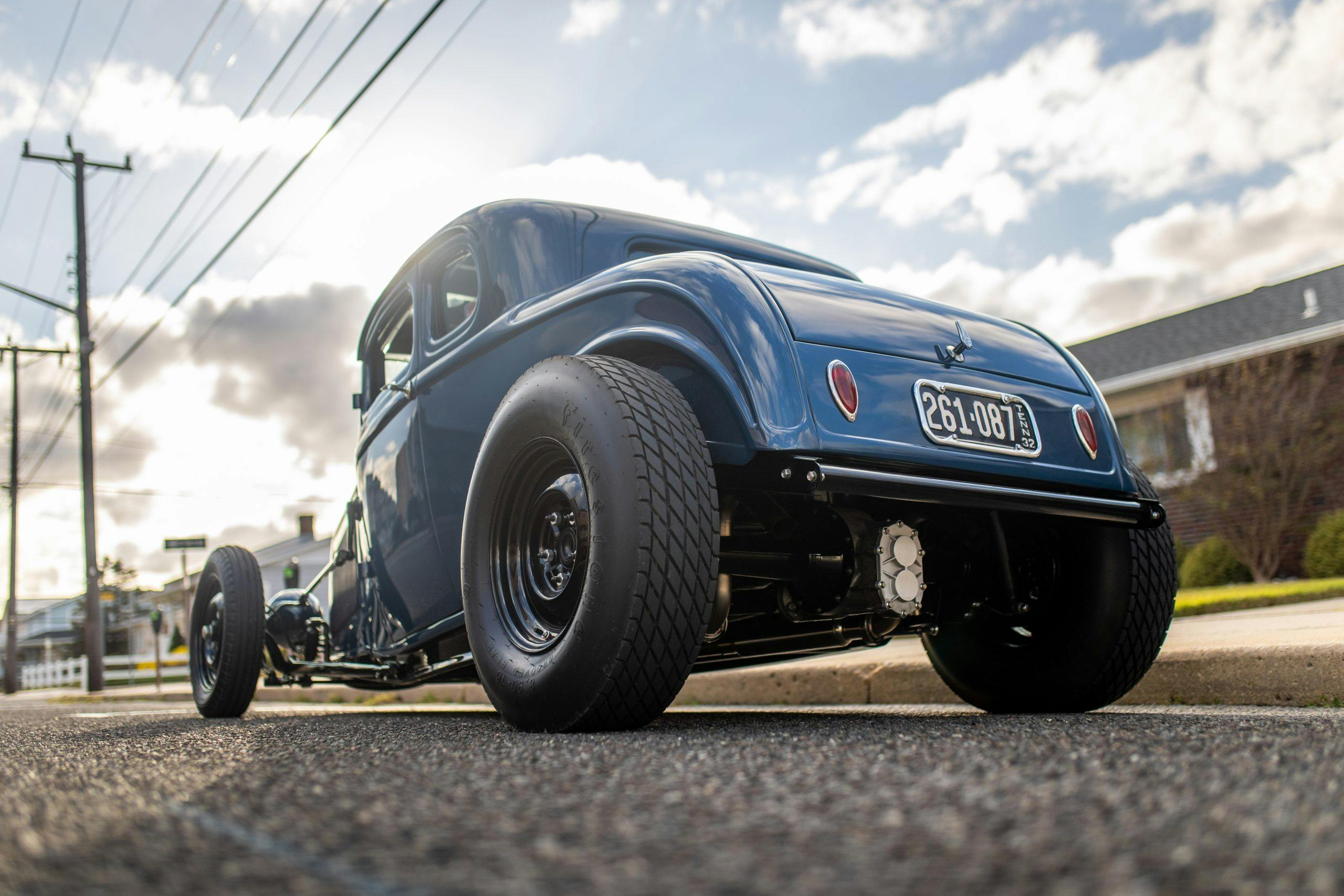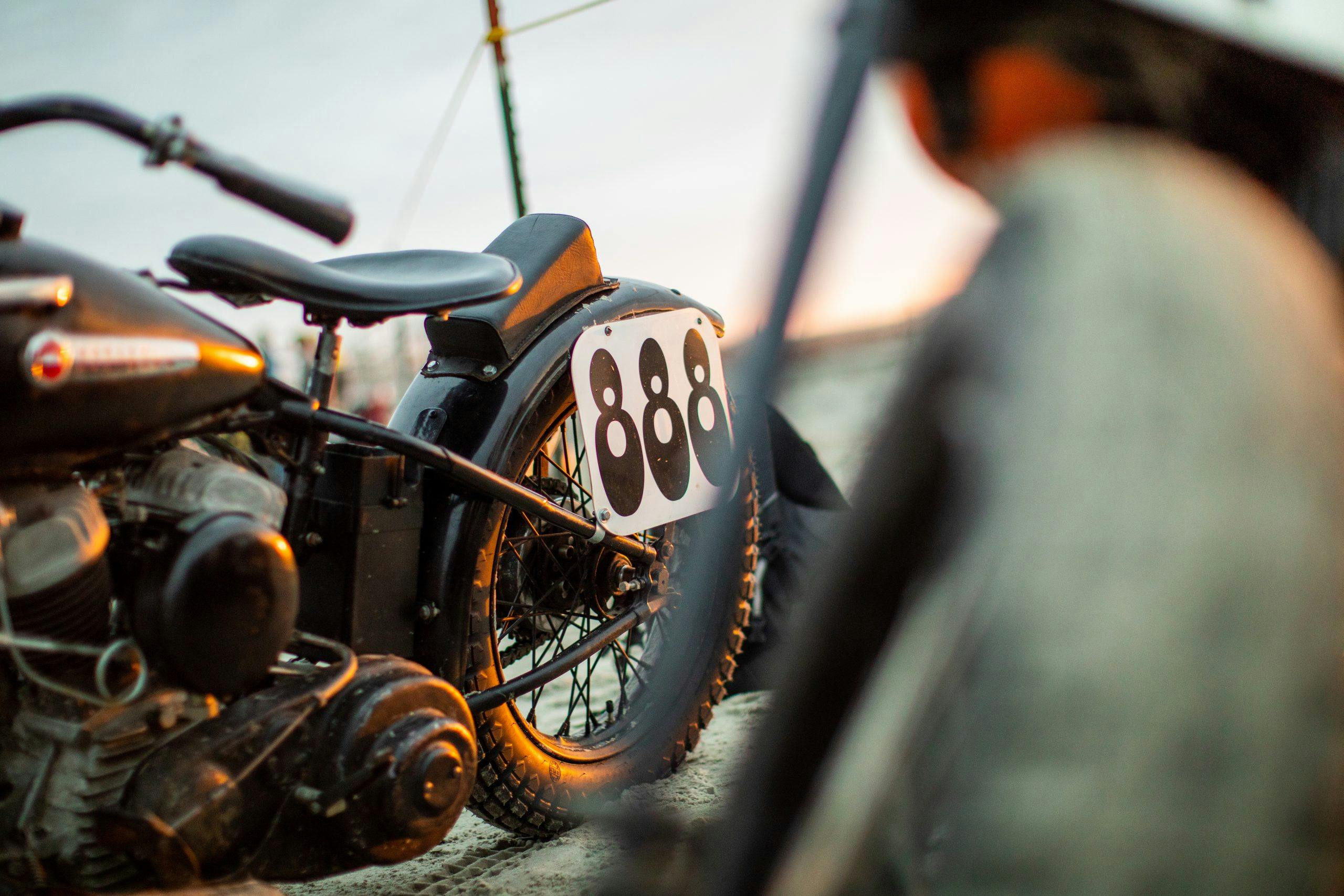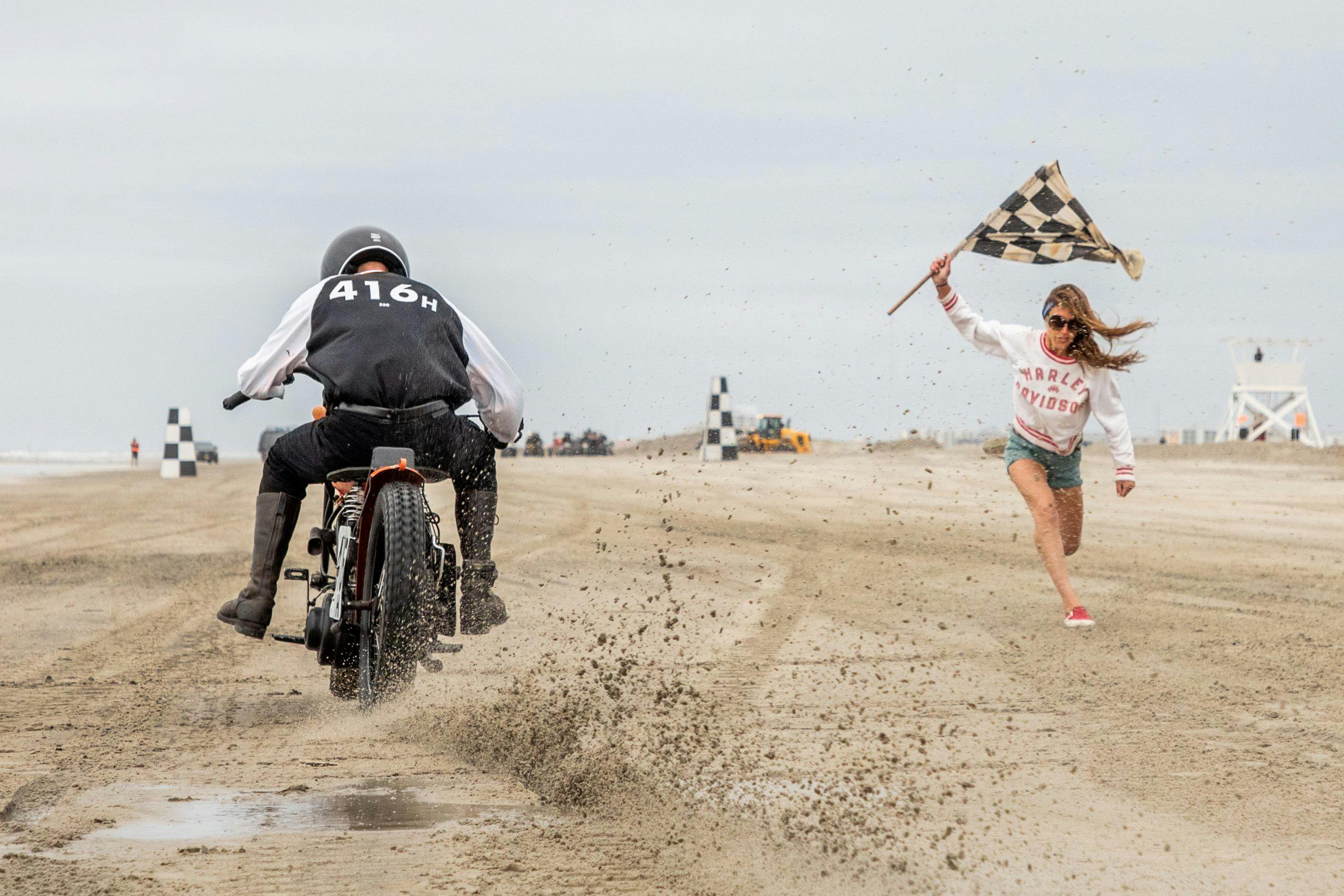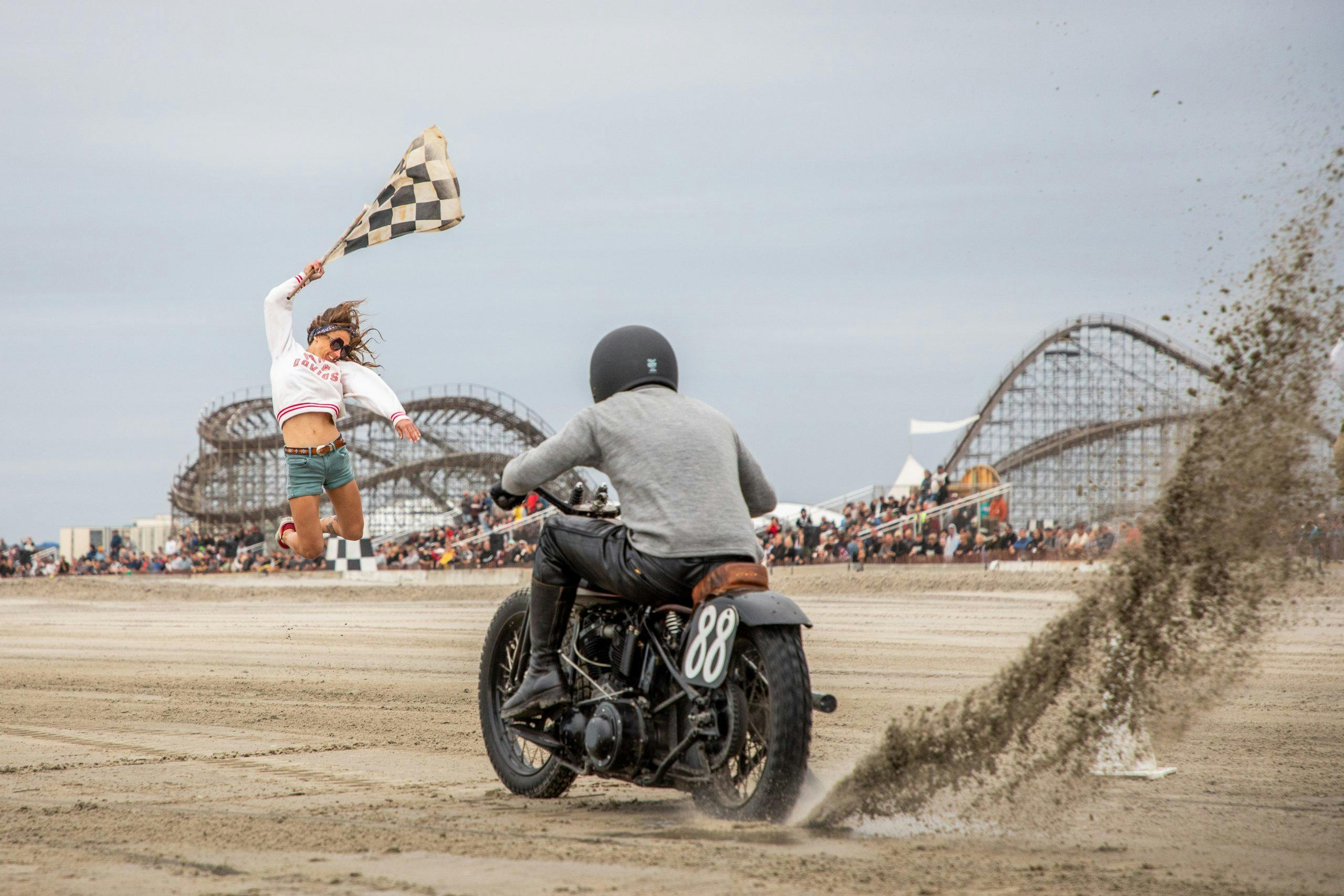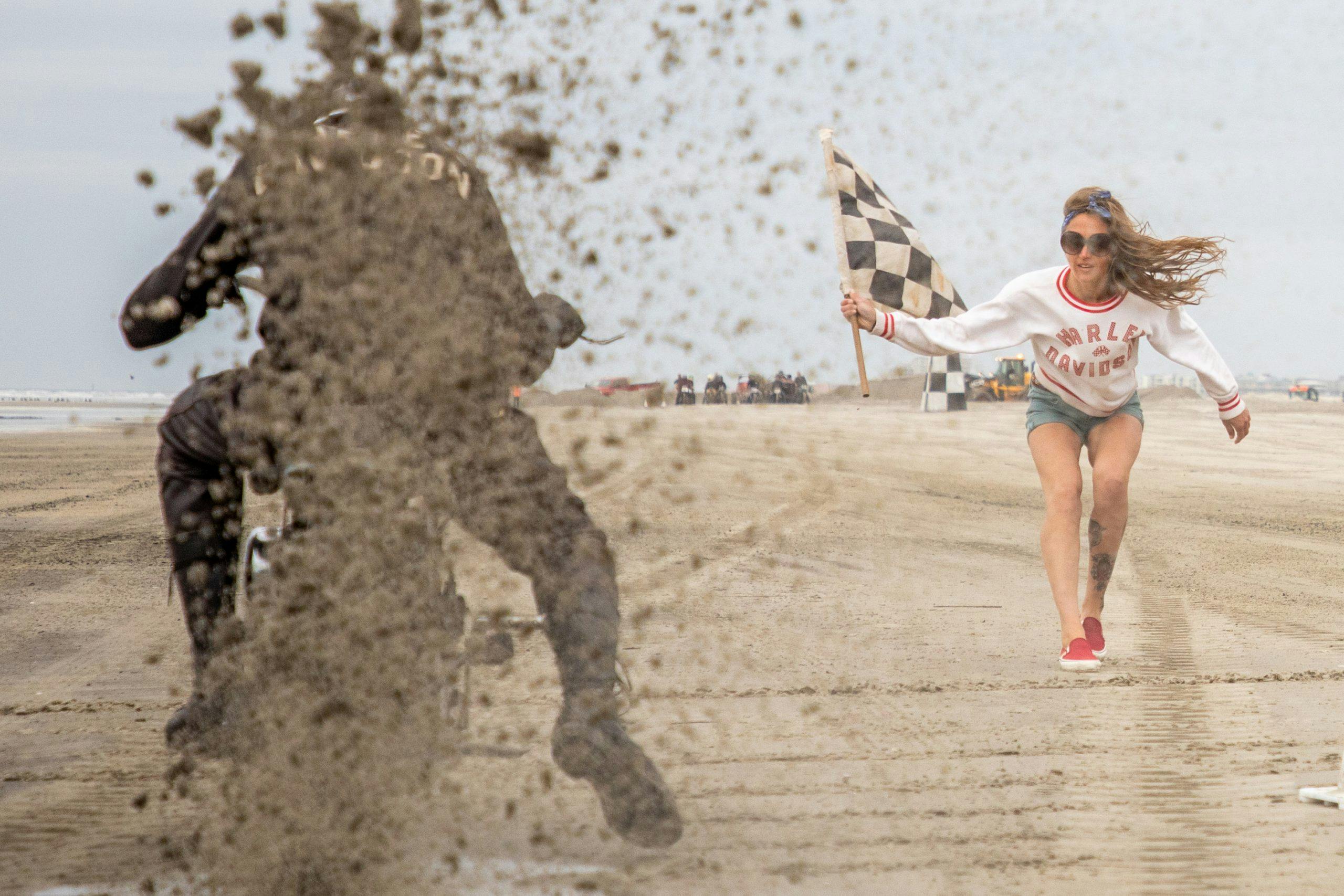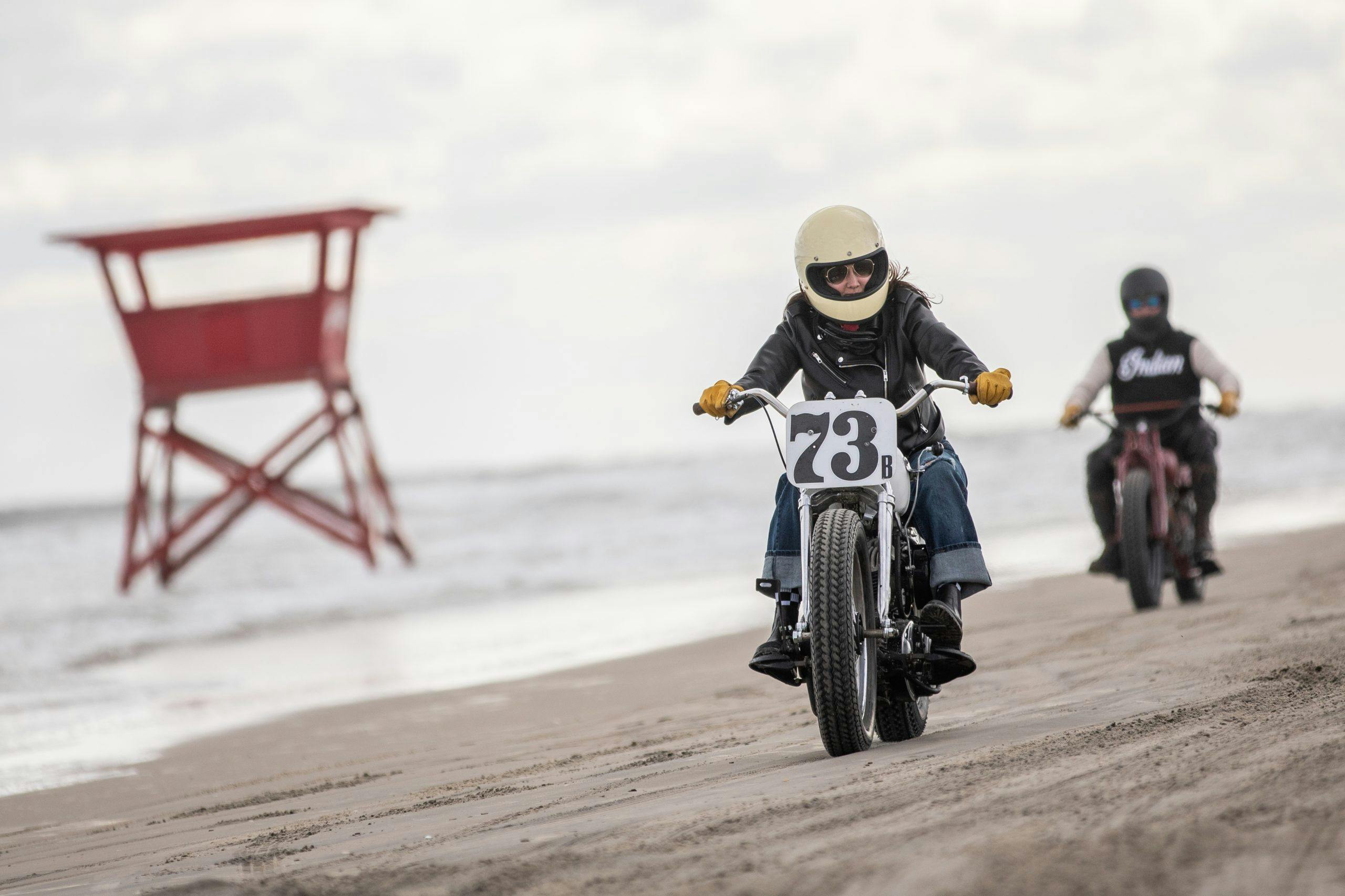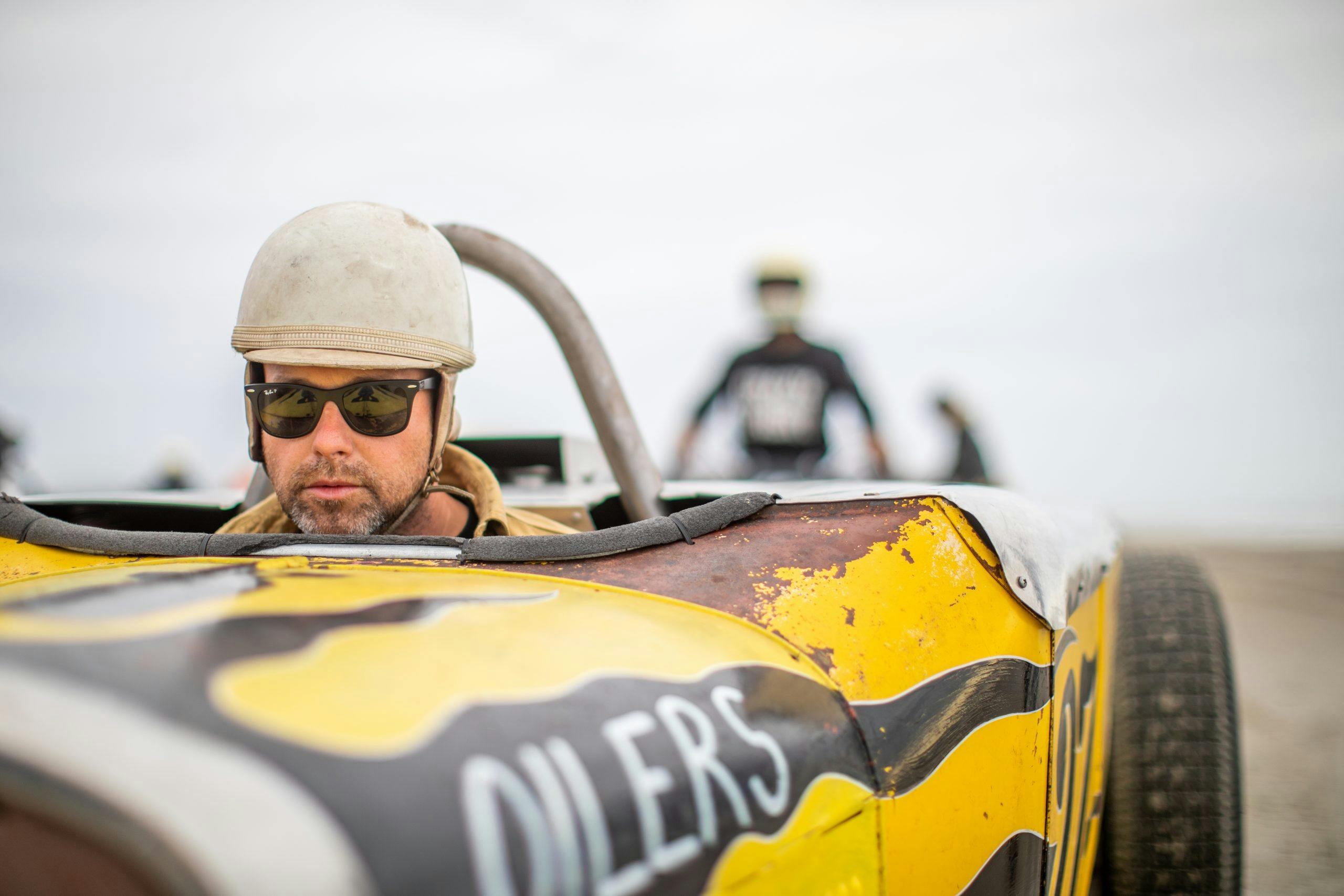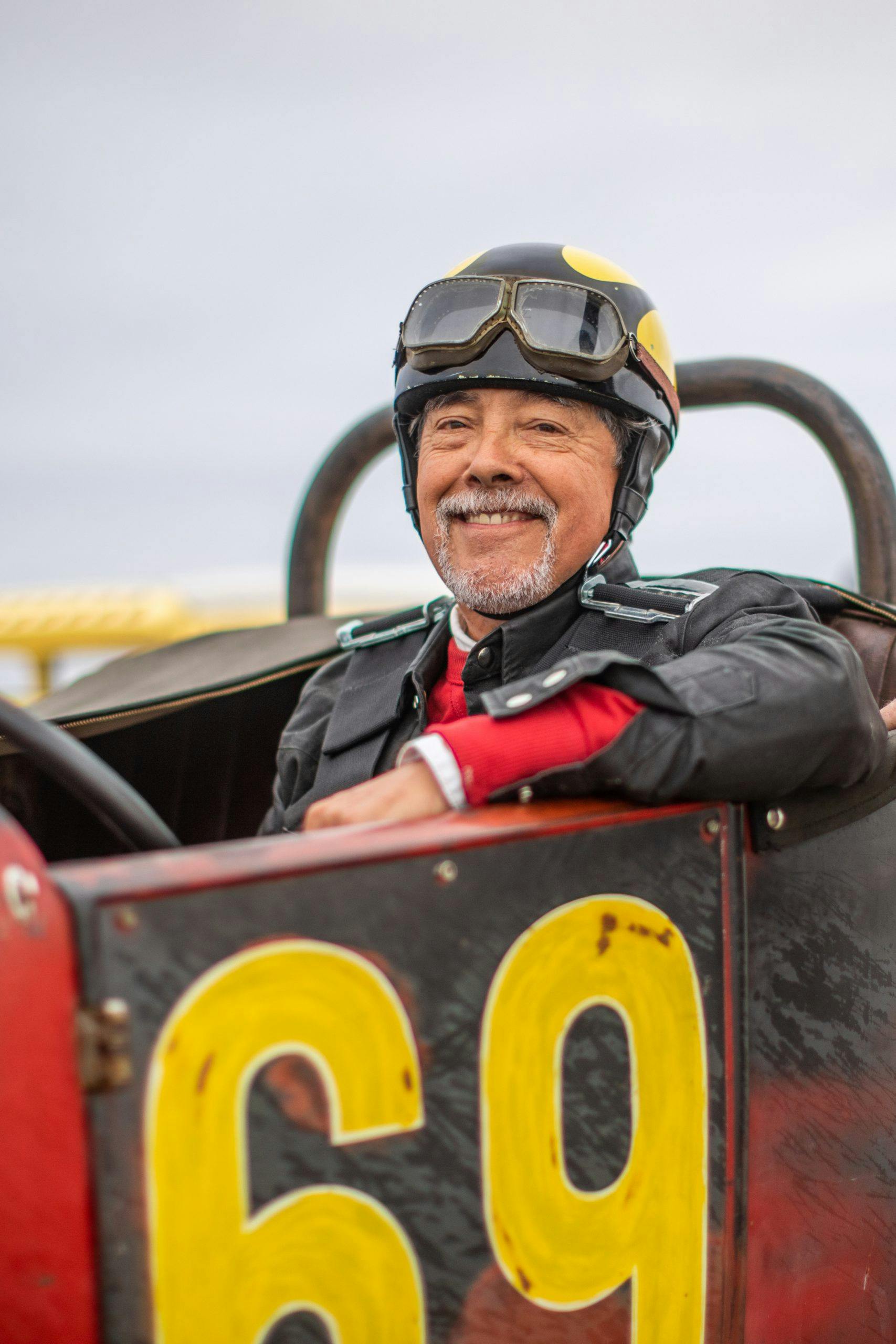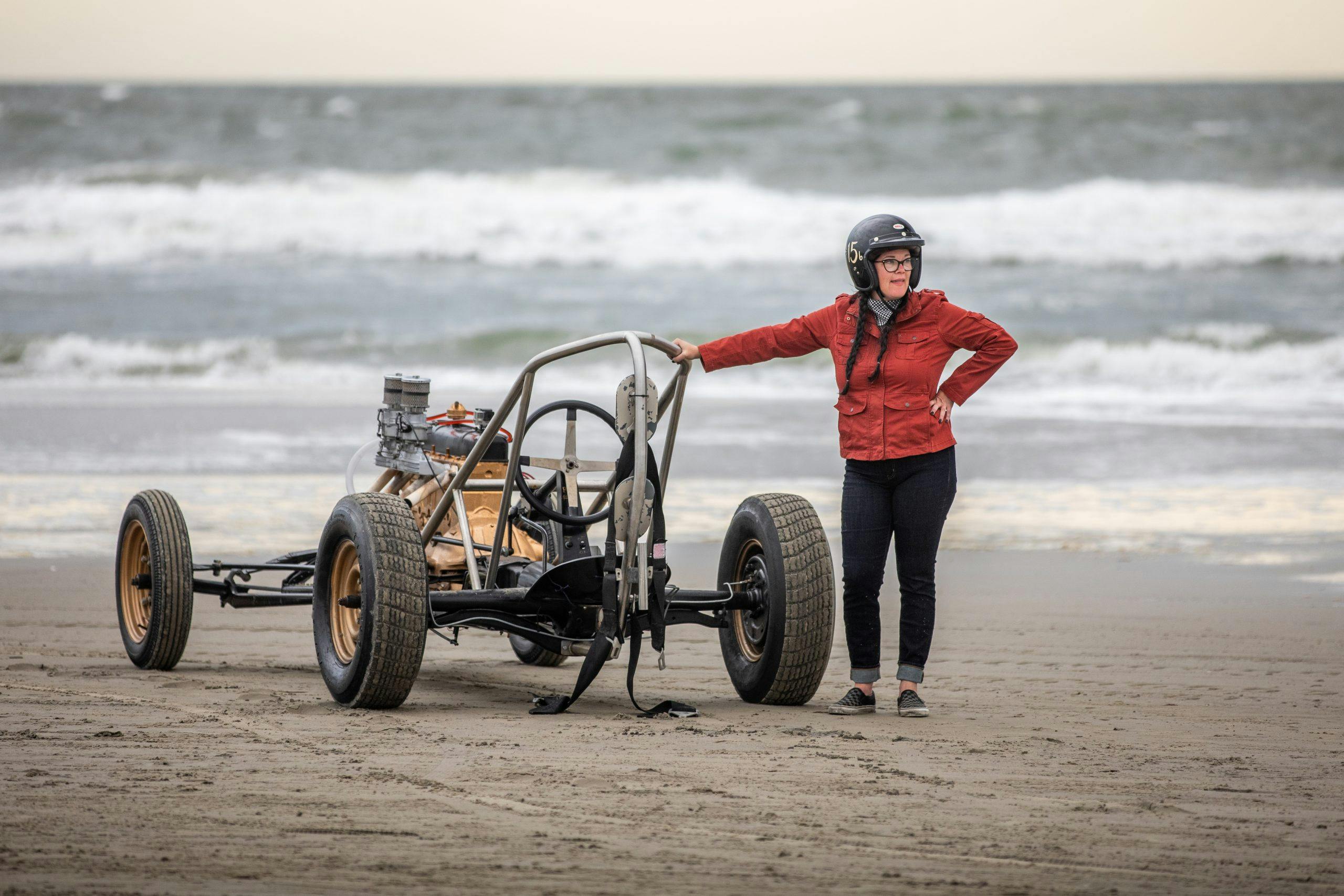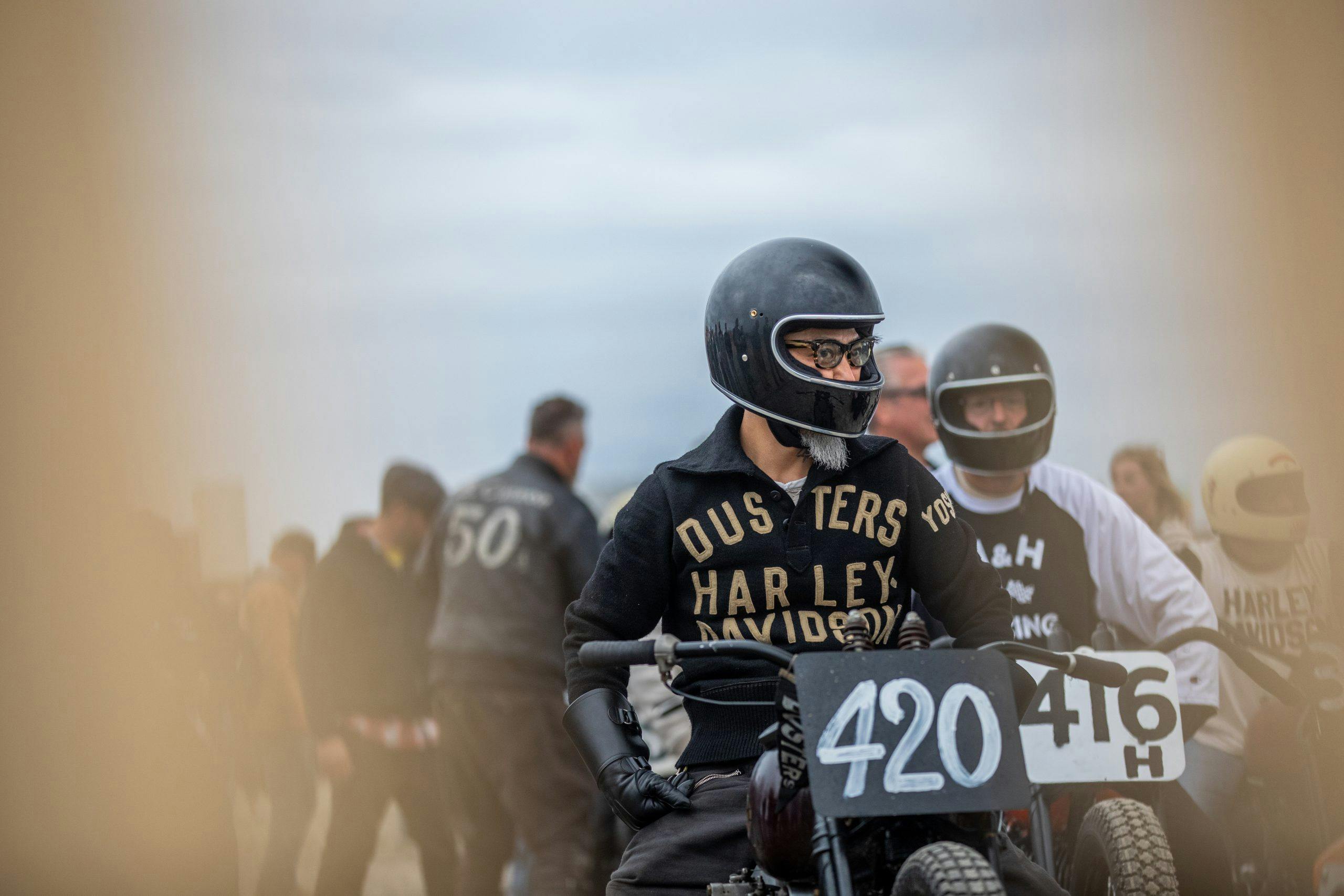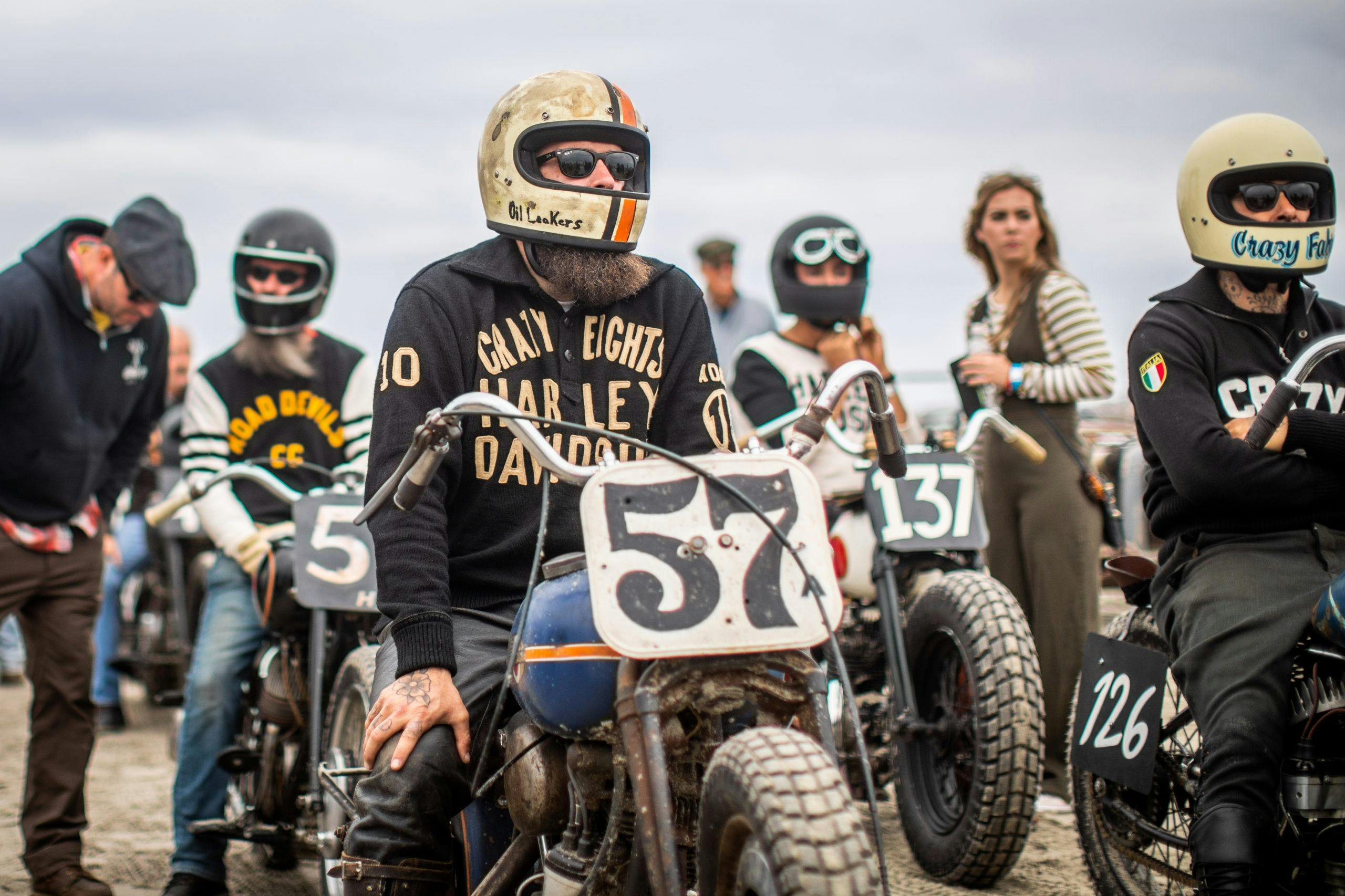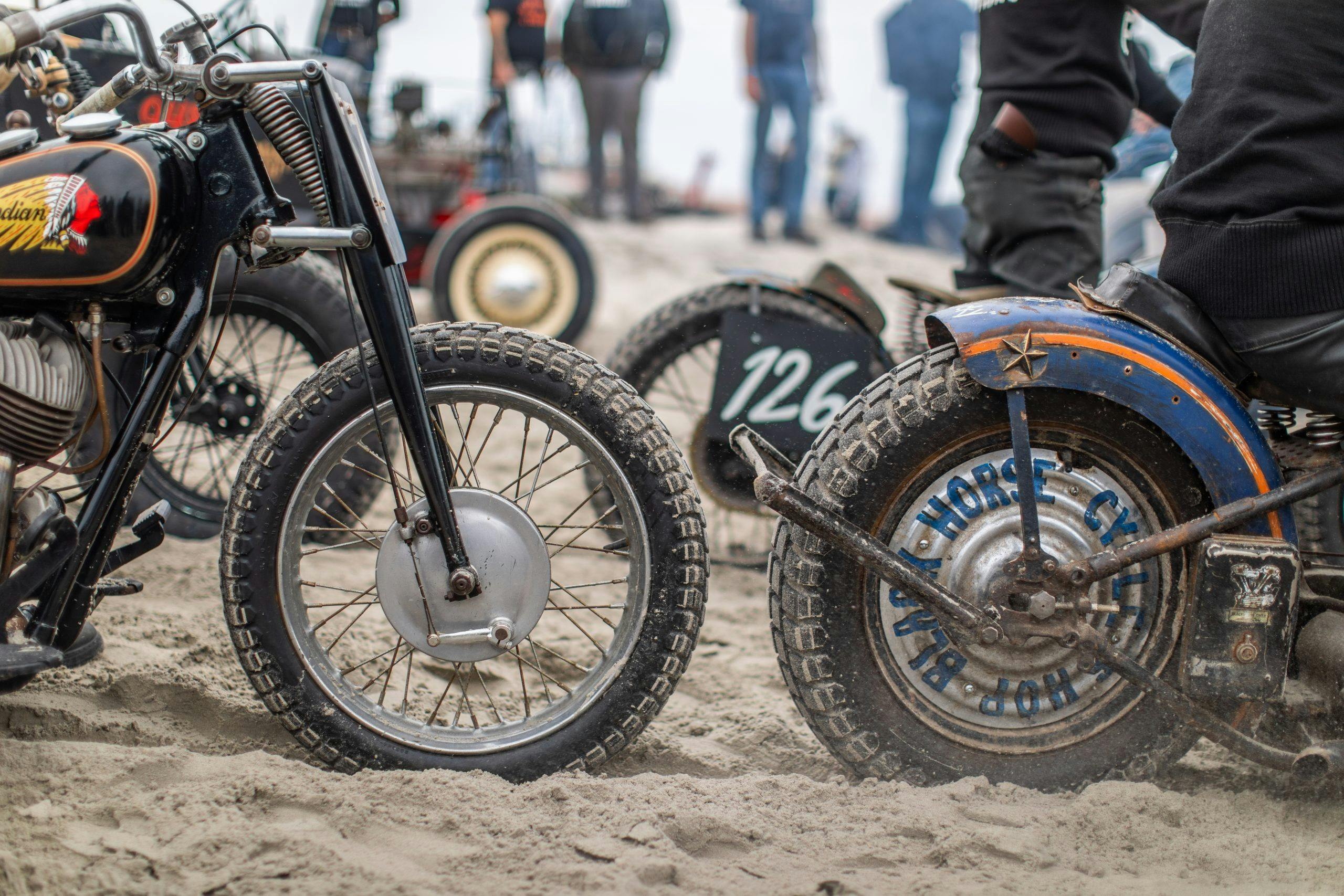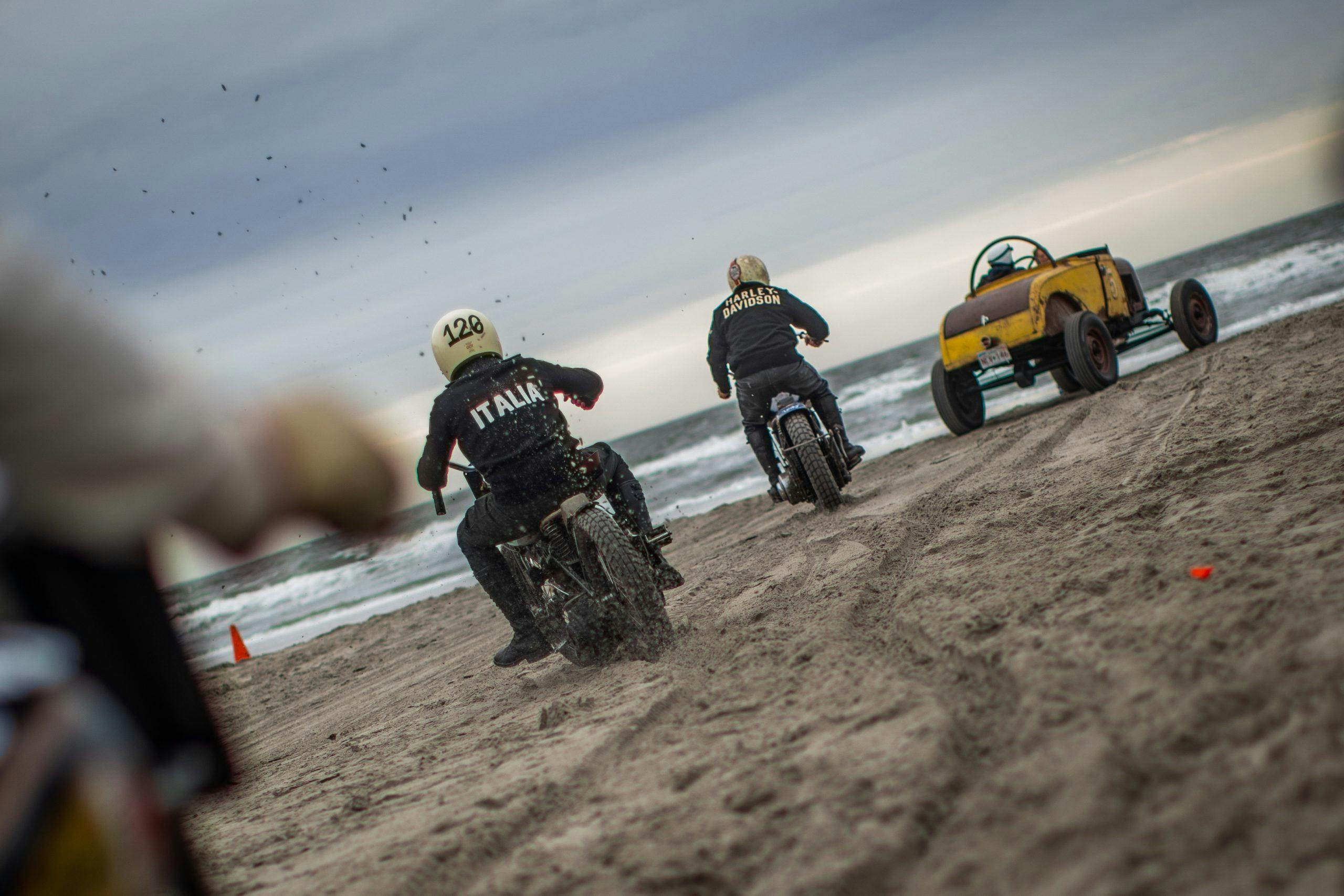Media | Articles
Sand Blasting: The Race of Gentlemen honors classic hot rods at the Jersey shore
The colossal driver with a graying Santa beard eased up to the start line, beach sand falling from grooved tires in tiny hard-packed zigzags. His rig resembled a 1932 Chevy poached from the assembly line before General Motors could body the sucker. The whole clap shook like a nervous dog. Any other Saturday on this stretch of the Jersey Shore, you’d hear seagulls squawking, Atlantic swells breaking, children whooping and hollering. Not today.
All sounds were drowned out by the open-exhaust inline-six that the jocular racer, affectionately known as “Crazy Uncle Harry,” was straddling. The exact engine that once hauled a 2-ton Hudson Hornet down Daytona Beach’s back stretch was now tucked tightly between a pair of toothpick frame rails, and this primitive dune buggy was aimed at the finish line an eighth mile down the beach. In the opposite lane of the makeshift dragway, another homespun hot rod was ambling to the line, its engine rumble adding to the cacophony.

The Race of Gentlemen, an October weekend of partying and beach drag-racing in Wildwood, New Jersey, had been underway since dawn. This was time travel, like you’d been transported back to the genesis of hot-rodding. Hot rods, attire, signage—all period-correct. An old lifeguard tower to the left of the track, a wooden roller-coaster on right. You came home with the Yanks. It all felt illegal, too much fun, like a V-Day rager that was minutes away from being broken up. This was The Race of Gentlemen. TROG, for short.
A few yards in front of Harry, now staged for the race, a woman in an old Harley-Davidson sweatshirt swayed with the ocean breeze, loosely holding a checkered flag. In a sudden snap, she ran toward the cars, dug in her heels, and sprang into the air in a varsity-crested cheer maneuver, thrusting the unfurled flag down like an ax.
Harry hauled.
Marketplace
Buy and sell classics with confidence
The night before this race, Meldon Van Riper Stultz III stood barefoot, presiding over a parking lot of vintage steel next to the Surf Comber Motel. He is a bearded, tatted maritime captain, cut from the sea, the sand, and the Clash. He is a self-described pirate. This is the man who started it all from scratch. “TROG is [in response to] everything I saw wrong with the hobby and the industry,” says Mel. “I was building cars with buddies in our home garages, and then going to a car show and sitting in a hot parking lot.”
Some eight years ago, while peering down the coastline from a seat at a beachside bar, Mel was inspired to do something more interesting with the hot rods he and his friends were bolting together. Local authorities in Allenhurst, New Jersey, were sold on the idea, and before long, the first beach race was held. “I wanted it to be organic and salty, most of all,” Mel tells me. “I wanted it to be punk rock, but not so punk rock it scared families and children.” His drag race in the sand was a hit, garnering national media attention. The next year, Mel and his crew took the show two hours down the Atlantic Coast to Wildwood.
After World War II, Wildwood, a little resort town in southern Jersey, became a vacation destination for families from New York, Philadelphia, and Baltimore, all less than three hours away. Amusement parks, arcades, and diners lined the 38 blocks of boardwalk that divided beach and street. Motels and nightclubs popped up overnight. Rock-and-roll bands filled the clubs with teens escaping their parents. Bill Haley & His Comets first performed “Rock Around the Clock” here on Memorial Day weekend in 1954.
Only a few blocks from where Chubby Checker debuted his “Twist,” Mel was starting his drivers meeting. “Low tide is at 6 a.m., and racing will start an hour after,” he announced. Over a hundred competitors listened intently as Mel briefed them on rules and expectations for the next day’s drag races. The sandy scramble with the Atlantic Ocean requires pragmatic planning to stay one step ahead of the tide. The former Marine delivered his marching orders with relaxed poise, concluding, “Mother Nature does what she does …” The crowd cheered and then dispersed, mounting old Indians and climbing into chopped coupes.
The night before the races, Wildwood was a scene. Most doo-wop hotels had switched their neon signs to “No Vacancy,” and the entire town was teeming with racegoers, rodders, beatniks, hipsters, hippies, and mavericks rumbling along the hot stretch of Atlantic Avenue in tudors, gow-jobs, hi-boys, and bobbers. A mass of cruisers congealed around the retro Binns Motor Inn. Mel and his team transformed its courtyard into a vintage motorcycle show pre-party called Night of the Troglodytes. Think Animal House with choppers. If I didn’t know any better, I would have thought this celebration was the main event, and everyone partying deep into the night would sleep in the next day.
But before sunrise Saturday morning, the first wave of hot rods and bikes drove under the boardwalk and onto the beach, parking in a sandy lot adjacent to the drag strip. For two days, racers churned sand up and down the coast. Hot-rod bliss. “The best part is you don’t have to have a big-buck car to go out there and have fun,” says Jim Barillaro. “It’s the way hot-rodding used to be. You can just build something in your garage.” Jim and his brother Mike did just that, fabricating a flathead–powered belly tanker from a B-57 Canberra artillery shell. As their motorized missile ripped down the shoreline, it passed Mel, who was relaying orders into a walkie-talkie. The barefoot pirate has left a dent on the hobby. It sure beats sitting around a hot parking lot.
Above: Jeremy Baye streaks by the vintage “Big Red” lifeguard tower on the Jersey Shore in his Dodge-bodied, Ford flathead–powered, rear-engine dragster.
Friday morning, a rodder stumbles out of his room to soak in the sun rising above the Atlantic Ocean. The ’50s-era design, art deco paint, and excessive neon of Wildwood’s doo-wop hotels provide the perfect backdrop for hot rods built in the same decade.
Brash youths pilot most of the beach racers. “TROG’s demographic is crazy,” says organizer Mel Stultz, pictured above. “It brings great-grandfathers, grandfathers, fathers, and little kids together.” Originally scheduled for September 30–October 4, the 2020 edition has been canceled due to COVID-19.
Dawn on race day and the beach is already thick with hot rods, parked bias-ply to bias-ply. Only pre-1934 American cars with running gear no later than 1953 are considered. The entry form states “cars and bikes must be hopped up and look authentic to racing’s golden era.” The roll bar was recently stipulated by the state of New Jersey, but Stultz requires them to look period-correct.
On the return trip from the finish line, drivers roostertail wet sand on the access road that runs between the drag strip and the tide. This old circle-track roadster’s grooved balloon tires cut through with no problem, but a Model T tow truck and an old Fordson tractor are on hand to fish out any rods that can’t make it through the sand.
Don’t let “The Race of Gentlemen” title fool you—gentle-women racers and spectators are in abundance. Prior to strapping on her helmet, Katy Stone guides a little red roadster up to the starting line.
As the sun rises on the second day of action along the Atlantic, a rider parks his flatbed on the beach and unloads a hopped-up Harley just a few feet from the starting line. The Race of Gentlemen’s devotion to historical accuracy rivals that of England’s celebrated Goodwood Revival. A strict adherence to period-correct vehicles, apparel, and signage makes for a photojournalist’s dream.
At the turn of the 20th century, many of America’s first automobiles contested races along the Atlantic. In 1905, in Cape May (the beach town adjacent to Wildwood), Henry Ford and three other drivers (including Louis Chevrolet, driving a Fiat) raced on the beach in front of some 20,000 spectators. Over a century later, Ford roadsters are still racing along the Atlantic, 8 miles north of Cape May.
In the back window of TROG’s Ford panel truck, I focused my Canon 5D on the reflection of a man walking toward a Fordson tractor. To my surprise, I also snagged the silhouette of the truck’s passenger. TROG is the closest thing you can get to time travel stateside.
No whitewalls here: TROG organizers strongly discourage whitewalls, as well as knobs or paddle treads, to ensure historically accurate beach racing. Bias-ply pie-crust tires, wrapped around steel or wire wheels, are the hot-rod footwear of choice.
Sunrise, race day, a leather-clad Josh Kohn rips his Harley-Davidson along the beach, twisting hard on the throttle, cutting broad figure eights in the soft sand.
Hot-rod car clubs use The Race of Gentlemen as an annual meetup. Road Devils car club member Tony Tierney drove 10 hours from Detroit in his 1932 Ford coupe to meet up with friends racing in Wildwood. Thursday night, the crew rented out Duffinetti’s Cocktail Lounge for their reunion.
Adam King (right), owner of the Black Horse Cycle fabrication shop in Ontario, has trekked to The Race of Gentlemen six years straight. “It’s all about the friends,” he says. And the competition: King rode his cackling 1938 Harley-Davidson Knucklehead to multiple victories last year.
